LIMOUSINE SCAVENGER HUNT RAISES FUNDS (AND FRIENDS) FOR WOMEN IN NEED
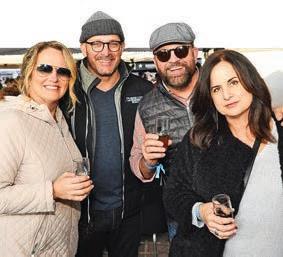















































Residential construction may soon be coming to San Marco Square.
Despite objections from the San Marco Preservation Society and the neighborhood group, Right Size San Marco, South Jacksonville Presbyterian Church has persevered to see the Jacksonville City Council approve its bid to rezone its nearly three-acre property so that a large portion of the campus can be sold and a 133-unit apartment complex and parking garage built on the site.
e historic church, which claims it can no longer a ord to maintain the buildings on two-thirds of its property rst received unanimous approval for its application from the City Council’s Land Use and Zoning Committee (LUZ) Feb. 19 at City Hall. e vote in favor came a er a contentious ve-hour public hearing and heartfelt arguments against the plan by At-large Group 4 Councilman Matt Carlucci, who is not a member of LUZ.



















































































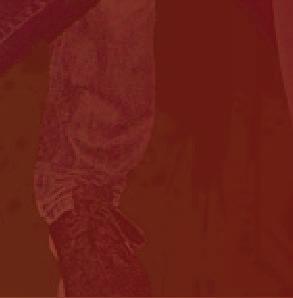
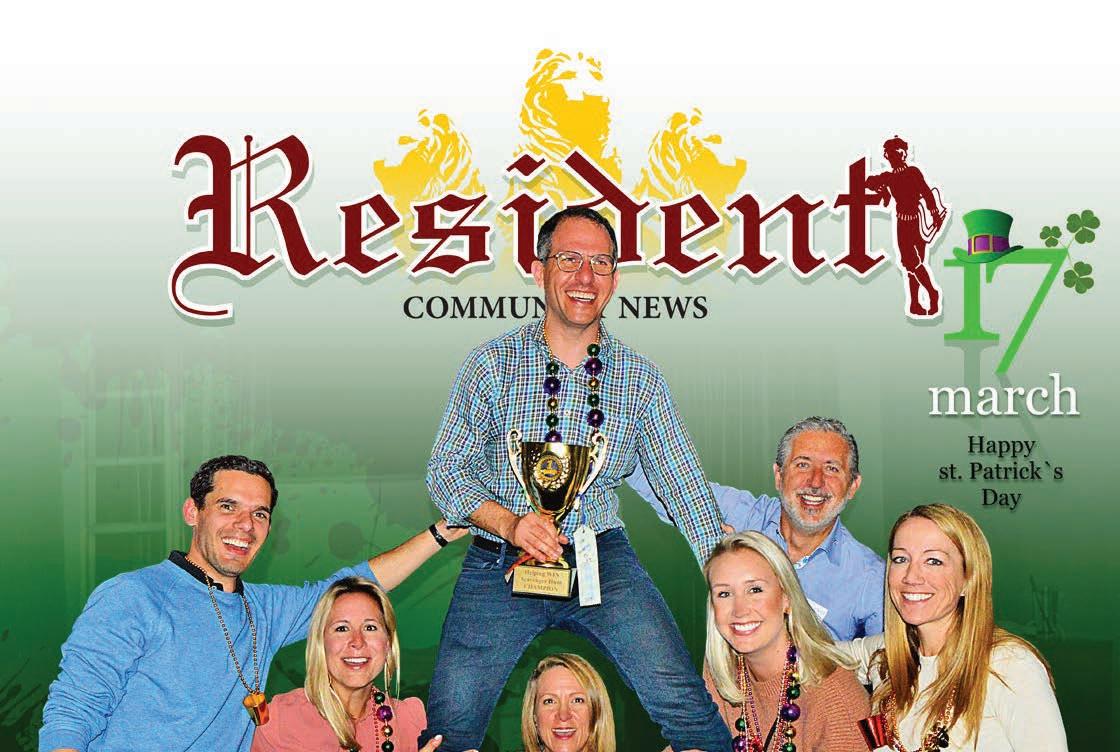
On Feb. 25, City Council voted 17-1 to approve the amended application, which would allow a four-story, 49.5-foot residential complex to be built within the San Marco Overlay, which is a zoning ordinance that mandates buildings shall not exceed 35 feet within its boundaries. Carlucci, who lives in the adjacent neighborhood south of the proposed development, cast the only dissenting vote.
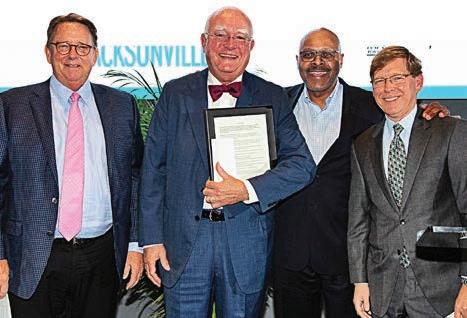

e City Council approved the application, which consisted of two amended ordinances, 2019-750 and 2019-751, under the threat of appeal by members of Right Size San Marco, a grassroots neighborhood group consisting of more than 700 members.


The Council also refused to act on a request to have a formal quasi-judicial public hearing on the plan. According to the Council’s rules, rule 6.301 states that such requests need to be filed at least seven days prior to the LUZ Committee public hearing, making the request “untimely,” said Shannon Eller of the City’s Office of the General Counsel. Because no council member moved to have the rule waived, Council President Scott Wilson decided to drop the matter and get on with business.
“I’m just pleased that the Council saw the merit of the Planning Commission and what the LUZ members voted on,” said Bill Ware, of Harbert Realty, which plans to purchase the church property and develop the project. “I’m not worried about the appeal. I feel we have a strong position as does the city, and we defer to the city in that respect. We’re anxious to get started and will
I wanted to let you know how much I appreciate you printing all of the letters you received regarding Park Place in this month’s Letters to the Editor.
I am in support of the Park Place development and have been fortunate enough to nd time to attend many of the council meetings on this matter. I’ve even started to organize an email list for those in support to help make others aware of meeting dates and time.
However, not everyone can attend a meeting downtown or when they do, feels comfortable to stand up and speak in front of a room, or put their name on a document of public record (fear of retaliation/impact to business). It is because of this, that what you did is so important.
Twenty-nine letters, representing 31 people, were sent in support of this development. Many of the names were new to me and were people that had not vocalized support at the council meetings. Five letters, representing ve people, were sent in opposition to the development. All ve of those people have spoken in front of City Council.
As a voice that represents San Marco, I appreciate the paper showing these messages in their un-edited form.
It is critical that residents have a way to communicate their vision for San Marco. I believe these messages illustrate there are many di erent ways to show our support for things, and I hope that our leaders can appreciate the time these residents took to write the paper.
As an in uential source of news for our community, I know that you have many issues that compete for attention. I appreciate the time you have spent and will continue to spend covering this story.
Morgan Roberts, San Marco
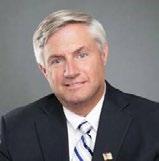
St. John’s Cathedral and Green Spirits are hosting a Community Listening Session with Councilman Matt Carlucci, the committee chair of the recently chartered City Council Special Committee on Resiliency at 6:30 p.m., Wednesday, April 1, in Taliaferro Hall at St. John’s Cathedral, 256 East Church St. All are welcome. Carlucci will give a brief update on the activities and progress-todate of the special committee and will answer questions regarding ooding, sea-level rise and severe weather that face the city.
Andrew Majewski, a long-time Venetia resident, has joined the Resident Community News Group as its new director of New Business Development.
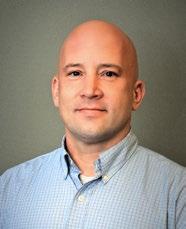
A self-starter with an entrepreneurial spirit who excels in building long-term relationships, Majewski has many years of experience in sales, management, and customer service.
After graduating from Chittenango High School in Upstate New York, he continued taking courses in OCM BOCES education and computer technologies while he started and established his own successful business, DuraSeal Tarvia Maintenance, a driveway maintenance rm in Syracuse, N.Y.
Four years later, he sold the business and went to work for True Green ChemLawn beginning first in Syracuse, N.Y. but later transferring to Atlanta, Ga., where he held a senior route position and trained new employees.


While in Atlanta, he later became an account representative for Dealer Specialties, one of the first companies to forge into internet marketing for car dealerships. He excelled in on-line marketing, and after a few years, he was promoted by Dealer Specialties as a market/operations


manager for the North Florida and South Georgia region. With the new position, Majewski was asked to transfer, being offered his choice of setting up headquarters in either Destin, Ft. Walton or Jacksonville. Having selected Jacksonville, he serviced a large territory in North Florida and South Georgia for many years.
A er working for nearly a decade in his managerial position, Majewski le Dealer Specialties to become an independent contractor with Leapforce, where he performed evaluations on web results for a major search engine.
Prior to working at e Resident, he was employed as an independent Shipt Shopper/ Driver, serving the needs of his own customer base. At Shipt, he delivered over 8,000 orders over the course of four years while traveling throughout the United States and helping to launch new markets.

In joining e Resident’s full-time sta , Majewski said he is excited about tackling a new challenge. “I wanted to get back into selling and customer service – doing what I’ve done all my life,” he said.
Majewski has been married for 23 years to his wife, Kate. e couple has three children, Austyn, 19, Parker, 15, and Paityn, 13.
Are you passionate about your local community? Do you enjoy reading the paper and simply wish to share your thoughts? If so, we welcome your letters, and we want to hear from you! Share your thoughts and air out your concerns through a Letter to the Editor. We’ll dig in, report on the results, and if you have questions – we’ll get busy getting answers.

Unfortunately, if you quit smoking 15 years ago or less, you may be at risk for developing lung cancer. You could also be at risk even if you have no family history and no symptoms.




Consider a lung cancer screening. Early detection of lung cancer can save your life. If you meet the following criteria, you could be eligible for a low-dose CT lung cancer screening, which is covered by Medicare and many insurance plans.


You are between 55 and 77 years old.
You have a 30 pack-year history of smoking or more (this means 1 pack a day for 30 years, 2 packs a day for 15 years, etc).
You are a current smoker or have quit within the last 15 years.
To see if this screening is right for you, talk with your primary care physician or go to baptistjax.com/lungscreening.
I don’t have a family history of lung cancer. symptoms.

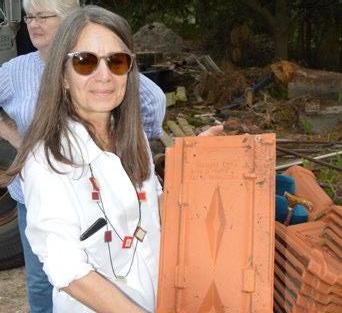 By Marcia Hodgson Resident Community News
By Marcia Hodgson Resident Community News

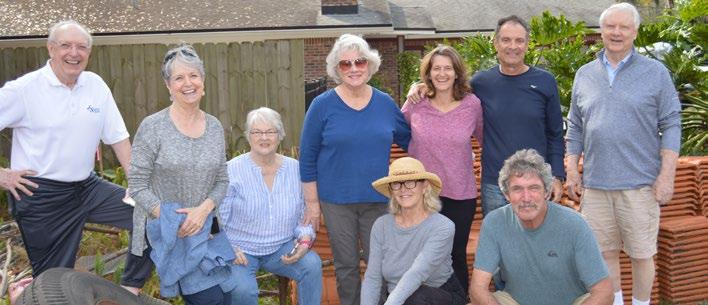
e corner of Eutaw Place and San Jose Boulevard was hopping Feb. 5 as neighbors gathered, some for hours at a time, to watch Hygema House Movers transport one of the Colonial Manor community’s most historic homes to a new resting place facing Eutaw Place.

e house, which formerly sat towards the back of a spacious lot encompassing four residential parcels that faced San Jose Boulevard, had been rotated 90 degrees and was moved inch by inch a distance of 150 feet so that it could nd placement on two house lots at the corner of Eutaw Place bordering San Jose Boulevard. e other two house lots, which will also face Eutaw Place, have already been sold and will be developed by individual homeowners.
Owned by Alan Cottrill and his wife, Ellen, the home, which was built in 1936, is one of the oldest homes on San Jose Boulevard. e Cottrills, who own River City Contractors, purchased the house and surrounding property in the summer of 2018. According to the Duval County Property Appraiser website, they have subdivided the land into three parcels and sold two – 1118 Eutaw Place to Danielle and Jacob Williamson for $182,500 and 1124 Eutaw Place to Christian Allen, Inc., for $185,000 – while moving the historic home to its new address, 1106 Eutaw Place. It is the couple’s intention to renovate the home and sell it, said Ellen Cotrill.
The property and house, which was previously located at 4001 San Jose Boulevard, had been a hot commodity in the eyes of several local developers. e home was previously owned by Chester Lovell, who lived there for at least 20 years with his daughter, Crystalyn. Lovell had big plans to renovate his home, and actually completed some demolition of the interior before passing away a few years ago and leaving the property to his daughter.
Cottrill’s o er of $445,000 was not the highest one entertained by Keith Johnson, executor for Lovell’s estate, but it was the most favorable because Cottrill had guaranteed within the purchase and sale agreement that the home, which was admittedly in “tough shape,” due to Lovell’s demolition work, would be saved from the wrecking ball, said Jon Singleton, the realtor involved with the transaction. Johnson, who handles all of Crystalyn’s a airs, said it was the strong desire of both Chester Lovell and his daughter that the home not be torn down.


“We bought it as an investment.,” said Ellen Cottrill. “Our original plan was to move the house forward because it’s such a huge lot and had such a huge front yard. en we realized it was actually four lots and that people were interested in buying the other lots, so we turned it into three lots,” she said. “People wanted to buy it and tear it down and put four houses here, but it was really important to us and our construction company, River City Contractors, to keep the old house and keep the integrity of it.”
Erected in 1936 by Lionel Eyrie Brooks and his wife, Blanche, the home is one of the rst to be built on San Jose Boulevard, said Kay Brooks, daughter-in-law of Eyrie and Blanche Brooks.


“My husband was born in 1937. Blanche was pregnant with my husband when they had the house built,” Brooks said referring to her husband, Eyrie Jr. “She had Eyrie in Riverside Hospital, and they built this house to bring my husband home to.”
e bricks used to construct the original edi ce came from an old building that was being demolished in Downtown Jacksonville at the time, she said, adding that her father-inlaw owned Brooks Auto Sales, a used car lot on Main Street and Union Street. “My husband learned the business there. We’re Arlington Toyota,” she said of her family’s business.

When the Brooks built their home, their property extended all the way to Gadsden Road. “ e garage was behind the house and
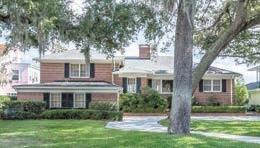
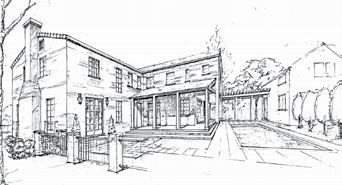
the whole block was owned by Mr. Brooks,” she said, noting her husband grew up in the house, and she grew up in the adjacent Granada subdivision. When she was married, she and her husband moved to an apartment above the garage in a building located at 1130 Eutaw Place that was torn down last year. Eventually the elder Brooks allowed them to build a home on their property at what is now 1131 Preston Place, and she and her husband lived there 27 years, she said. “It was like a one-family compound,” she added. “ ere was a gazebo out in the yard. It was a beautiful piece of property when they owned it. It was a beautiful home. It was so homey. Blanche would have us all over for anksgiving. It had a huge kitchen with a breakfast room. It was built for the way families used to be, and we would sit out on the porch,” she said, referring to the screen porch on the right side of the home that had catenary arches made of brick. “ ey had fans on the porch, and we would sit on the wrought-iron furniture.”
At the time the home was built, there were only two houses on San Jose Boulevard – the Brooks home and one in Granada owned by the Howard family, she said. “Living on the river wasn’t desirable back then like it is now,” Brooks said. “No one built their homes on the river. ey would rather be on San Jose Boulevard. e river was worrisome because they had a fear of prowlers. ey did not feel it was safe.”
Roads like Eutaw Place and Preston Place, adjacent to San Jose Boulevard were not paved, she said. “When you came home from school, we never locked our doors. As a neighborhood, it was just wonderful.”
As it is now, the approximately 2,500-squarefoot home has three bedrooms and two baths upstairs and a powder room downstairs, while the screened porch on the side has been permanently removed, said Hilda Ettedgui, a residential architect who has drawn up plans for the renovation. “ e porch could not be moved because of the city setbacks,” she said. “ e idea is to have
an addition on the back that will integrate perfectly with the style of the house and include a master bedroom.” e addition will be approximately 800 square feet and a garage will also be added in the rear of the home. e wooden balcony on the front of the home will be saved and restored as it is. Also saved will be the red roof tiles that originally were brought in from France. “ e entire house needs to be renovated entirely. We are keeping the integrity of the house and the style and the sizes of the rooms – the layout itself – and just adding to it,” she said.
Cottrill said she and her husband loved the house and are happy to either try to restore it or sell it to someone pre-renovation. “It’s such a beauty, and there is so much chatter with the tearing down of old buildings and the Landing and all,” she said. “We are thrilled to be able to do this.”
On the heels of Human Tra cking Awareness Month, District 5 Councilwoman LeAnna Cumber, who has been working on a bill to help prevent human and sex tra cking in Duval County, joined City Council President Scott Wilson and City Council Vice President Tommy Hazouri in hosting a lunch-andlearn session for their fellow council members on Feb. 3 at City Hall.
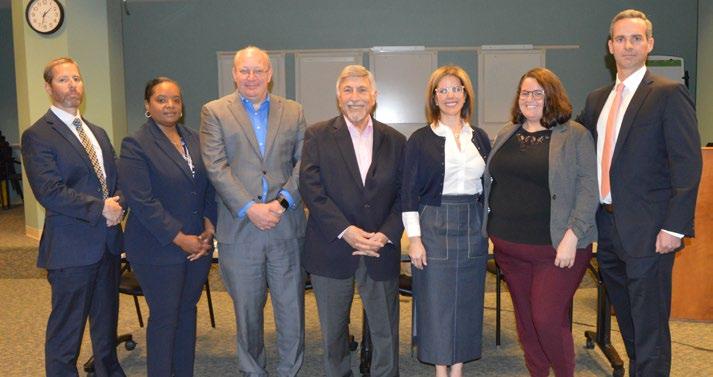
Introduced by Cumber and Hazouri and co-sponsored by City Council members Randy White and Joyce Morgan, the purpose of Ordinance 2020-74 is to put stricter regulations on certain businesses and occupations to help prevent human and sex tra cking and to establish a sex tra cking survivors leadership council. To assist in explaining the bill and give insight into the magnitude of the problem, Cumber invited representatives from Homeland Security, the Federal Bureau of Investigation (FBI) and the Jacksonville Sheri ’s O ce (JSO) to be part of a panel and answer questions from the council members.
Included in the discussion were C.J. Goodman, supervisory special agent for the Federal Bureau of Investigation, Toshua Williams, group supervisor, Public Safety Group Department of Homeland Security, and Kirby Wedekind, protective security advisor at the Cybersecurity and Infrastructure Security Department of Homeland Security, and Jamie Rosseland, a sex trafficking survivor. Two unnamed members of JSO, who do undercover work for the city, also took part in the discussion via the phone.
“ e impact of all sex crimes doesn’t end at the end of the crime,” said Cumber. “It’s something that stays with survivors long a er it happens. It lingers. I know this from personal experience, it never goes away. Sex tra cking is particularly heinous. e worst thing we can do, particularly with sex tra cking, but also with all sex crimes, is to make it so that people don’t want to talk about it. We can’t continue to keep these crimes in the shadows. It is an uncomfortable conversation, and I understand that, but it’s more uncomfortable for the survivors,” she said. “We need to hear their stories and have an open dialogue. at’s the only way we can eradicate it.”
Goodman said that Florida is third behind California and Texas in human tra cking due to its location and highway system, and that the way to combat it is through federal, state and local partnerships. He also said most victims are United States citizens who were born in the U.S. and are brought across State lines, not illegal aliens.
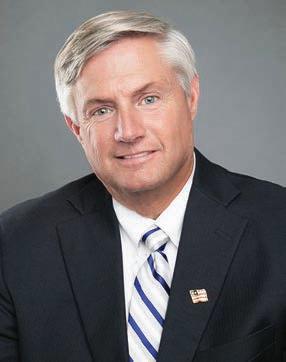
“From the FBI’s perspective, it’s modern day slavery,” he said. “It is abusive and terrible.


Some of the folks living this kind of life are beaten and miserable.” He added that, at the federal level, the FBI handles approximately 1,900 human tra cking cases a year and of the 44 human tra cking victims in Florida, 25 were under the age of 21.

“Many people think it happens in illegal industries, underground, or way out of the way, so nobody sees it, but that is just not true,” he said. “In the majority of cases, it happens in legal industries – restaurants, cleaning services, construction companies and factories. Most companies or establishments are legitimate.”
He also said it is a myth that most victims are targeted by strangers, such as depicted in the movie “Taken.”
“ e majority have it happen by people they know,” he said. “A lot of victims are manipulated, coerced, and undergo fraud to get into the industry, then they are introduced to drugs and can’t nd their way out. Most human tra ckers control their victims by using threats and psychological tricks. Some survivors say they are too scared for the safety of their loved ones. Others tell us they were so manipulated that they had no idea they were being tra cked,” he continued, noting that in 3,000 cases the FBI has recovered over 3,600 children with the nine years being the age of the youngest actively tra cked victim.
One way the FBI is working to partner with parents to prevent human and sex tra cking is through its new program, “Be smart with your kid’s smartphone,” he said.
Meanwhile, Williams said that the Department of Homeland Security is using its “Blue Campaign,” to assist with labor and sex trafficking. The Blue Campaign is a national initiative to educate the public, law enforcement, and other industry partners so that they can recognize the indicators of human tra cking, she said, noting that while drug dealers sell their products only once to make money, human tra ckers use the same victims to make money over and over.
e JSO representatives mentioned most victims they deal with are female and under the age of 21. ey also said that many are incoming college students who get enticed into working in clubs – many as dancers – over the summer to make money for college. Once they start working in the clubs, they o en nd themselves unable to leave the business for various reasons, they said.
“A lot of them don’t make it into college,” a JSO representative said, adding that human and sex tra cking takes place in nearly every hotel in Duval County. “Every single hotel in Jacksonville has trafficking. It doesn’t matter if it’s a $29-a-night hotel or $500 a night. It’s in every single one across the board.”
To help combat the problem, Cumber’s bill will focus on three areas: hotels, clubs,




and the establishment of a survivors’ leadership council.
The ordinance will require everyone working in hotels to get trained to recognize sex tra cking, and it will require that signage be posted in the inside of all restroom doors and guest rooms. “ is way people can see this is an issue, but also if they need help, the information is there,” she said.
In order to bring the cost of JSO’s monitoring of the Jacksonville club scene more in line with reality, the ordinance will increase licensing fees and require everyone working in the club, including managers and owners, to have training to recognize sex tra cking. “ is will all be veri ed through the city,” she said.

e bill also will require that dancers and other adult performers carry a work identication card, which will be obtained through JSO. “ ey will be ngerprinted and their ngerprints will be run through FDLE (Florida
Department of Law Enforcement) and ICE (Immigration and Customs Enforcement), and they will have to go through sex tra cking training before they get this card,” Cumber said, adding that the ordinance will also raise the mandatory age of adult performers and dancers from 18 to 21.
e ordinance will also create a survivors’ leadership council, made up of seven survivors, which will be tasked with evaluating how well current programs are working while making policy suggestions moving forward. “We want to know what we can do, particularly on the issue of demand,” Cumber said. “How can the city address this, and how can we better work with our federal and state partners? We want them to report on what’s working and what we have challenges with. is isn’t an issue we should address one month out of the year. Having a report from the policy side is important.”
go back to work and continue to develop the project inside. We’re excited.”
Mark Middlebrook, an elder with South Jacksonville Presbyterian Church, shared Ware’s sentiments. “ is is a big hurdle today. e City attorney thinks what they’ve done is correct, and what they are about to do is well within the law,” he said. “We feel the result is the correct result, and we will continue to work with the community and with the builder to build the best project we can. You can never prevent anybody from bringing an action or an appeal, but the appeal wouldn’t be against the church. It would be against the city. Nothing will happen until it’s resolved,” he admitted, claiming he wasn’t worried.
“We are happy because we’ve worked hard for three years to get the project to go through, and we’re very happy with the result,” Middlebrook continued. “I’m not happy with the discord in the community, and I’m not happy with the miscommunication of the facts that I see on Facebook. I think they will be happy with what it looks like. A lot of information wasn’t conveyed on this particular topic, but property values will go up when this happens. Their homes are going to be worth more, that’s just the math. We’re not trying to hurt anybody. We’re just trying to maximize the benefit and use of our property,” he said, noting that Harbert Realty was the only developer willing to provide the necessary parking garage that the church needs to remain viable.
e amendment to 2019-750 added three site-specific conditions to the church’s planned unit development (PUD): 1.) Multi-family residential uses shall be limited to 133 units; 2.) Non- residential oor area shall be limited to 96,000 square feet (garage, all oors) and 25,000 +/- square feet (existing church, all oors); 3.) To ensure compatibility with adjacent uses and to protect neighborhood scale and character through transition zones, the bulk, massing, and height restrictions, the new building height shall be limited to a calculated weighted average not to exceed 35 feet across the length of the development from Alford Place to Mitchell Avenue as follows: A sum of the height to the predominant roof line (ridge or parapet wall) of that portion of the building multiplied by the length of that portion of a building divided by the overall length of permissible building within the minimum setback.
In other words, to bring the development into compliance with the San Marco Overlay, the calculated weighted average height formula, which has never before been used in Jacksonville, averages the 49.5-foot height of the residential building with the 26-foot, two-story parking garage also to be built on the site so that the combined heights would not exceed 35 feet.
Meanwhile, the amendment to 2019-751 was approved subject to two conditions:
1.) Sidewalks adjacent to the on-street parking shall be a minimum width of six feet; 2.) The architectural design of the parking garage façade shall be subject to the review and approval of the Planning and Development Department at the time of verification of substantial compliance of the PUD. The parking garage shall incorporate differentiated building walls, vertical architectural features, decorative detailing and architectural elements and changes in building materials and color.
Prior to the LUZ meeting, the Jacksonville Planning Commission had voted unanimously in favor of the rezoning and the project during its meeting Jan. 23. Also supporting the plan was the Jacksonville Planning and Development Department and its director, Bill Killingsworth.
FROM PAGE 1
The San Marco Merchants Association (SMMA), led by President Joseph Carlucci, also supported the rezoning and the development, with SMMA Executive Director George Foote speaking in favor of the project at both the LUZ and City Council meetings. During the City Council meeting, 50 citizens, 14 of whom spoke during the public hearing, and 36 who submitted speaker cards to the council, also supported the initiative.
Speaking on behalf of the San Marco Preservation Society (SMPS) was President Linzee Ott, who said the society favored putting residential housing at that location but objected to certain aspects of the application including the change of rezoning to Urban Priority, which would allow the higher density of 60 units per acre, and the use of the calculated weighted average height as a way to have the project conform to the San Marco Overlay.
In total, 13 speakers spoke against the project at the City Council meeting with 10 more submitting speaker cards opposing the project.
Members of Right Size San Marco also lobbied against the project during the City Council meeting. Right Size founder Jon Livingston said his group had no problem with church’s desire to remain viable by selling the property so that multi-use residential housing might be built, but complained that the application in its current form went against the San Marco Overlay and the San Marco Neighborhood Action plan. It is Right Size San Marco’s desire that the apartment building be limited to three stories and 114 units.
In a SMPS Town Meeting held Feb. 5 at South Jacksonville Presbyterian Church, Andy Allen of Corner Lot Development Group in San Marco said reducing the number of units would not be nancially viable. Corner Lot Development is partnering with Harbert Realty of Birmingham, Ala., to develop the project. Included in the purchase and sale agreement between Harbert and the church is the requirement that the developer build a parking garage and set aside approximately 100 spaces for church use on Sunday and Wednesday evenings with the public being able to access the parking when church is not in session.
“It’s simply not economically feasible to build 114 units. Also, it’s not architecturally feasible, the way that the project sits right now, to build three stories of multifamily at 35 feet,” said Allen during the Town Hall. “We want to build something that we are proud of and that will be in the community for a long, long time.”
Disappointed with the Council’s decision, Livingston said after the meeting that his group had no choice but to mount an appeal in court. Right Size San Marco has hired Clifford Shepard, an attorney from Maitland, Fla., and former San Marco resident, to represent it and has contracted with Tom Atkins, an urban planner, to serve as an expert witness. Both men spoke against the application at the LUZ meeting, and Atkins voiced objections at the City Council meeting.
“ is ght is just starting,” said Livingston in an email. “ e city’s action of pushing an
11th-hour amendment so the developer can use a calculation never used in Jacksonville before goes against the zoning code, its intent, and the standards of the San Marco Overlay. e city’s callous actions have given this community more resolve than ever to le an appeal. Not only is the city going against set height restrictions, but they are also going against standards they, of all people, have set in place. Who should we turn to if we want our laws to be maintained? Why have zoning laws, when you can spot zone and give the developer precisely what they want whenever you want? It’s absurd,” he said.
“Giving developers the ability to change standards on the fly is a dangerous and slippery slope. Councilmember (LeAnna) Cumber said the San Marco Overlay is a ‘living, breathing document,’ and nds the new height calculation agreeable. We adamantly disagree. Laws are in place for a reason. Changing them on the y, in the last second, is not acceptable,” he continued.
“Allowing developers to dictate standards, like what 35 feet means, to bene t their own needs, is wrong on so many levels. Do developers run this city? It sure looks like it. We met with numerous City Council members over the past month. Many said if a council member in your district wants a project, we are ghting an uphill battle. Why? We expect votes based on current law, not feelings, or the desire of reciprocation. Our question? Why are the city sta and our councilwoman fighting so hard for something that goes against the city’s laws? From the outset, we have said if you stay within the laws, and build apartments under 35 feet, we will support the project. If you can’t comply with the laws in place, no compromise is on the table. We will be appealing if the city council votes to approve this development as is.”
To appease its neighborhood opponents, Harbert’s development team had many meetings over the past few months with representatives of SMPS, SMMA, city planning o cials, council members and representatives of Right Size San Marco. ey modi ed their application, reducing the number of residential units from 143 to 133 and lowered the parking garage from a three-story, four-level structure to a twostory, three-level building with 276 spaces. e developer also removed 10 residential units from the side of the parking garage bordering Mitchell Avenue, which is adjacent to some single-family homes, allowing for a wider, 30-foot setback between the garage and the road. Representatives from Group 4 Design and Doug Skiles of EnVision Design + Engineering also consulted with Bill Jaycox, an architect hired to by SMPS to consult on the project. Many of Jaycox’s suggestions were incorporated into the nal design of the building, Skiles said.
During the LUZ meeting, Nancy Powell of Riverside Avondale Preservation expressed her concern about the use of calculated weighted height averaging as a way to possibly skirt restrictions within an overlay. Other speakers during the public comment session also expressed their qualms about the method being used as a precedent and its e ect on overlays in other neighborhoods throughout the city.
To allay fears that the amended application might set a precedent and allow developers to override Overlay legislation in other neighborhoods, LUZ Chairman and Councilman Danny Becton said there was nothing “deviant” about the amendment. “ e amendment was put in place in order
to eliminate the concerns of the community that this would be a slippery slope and could go elsewhere,” he said. “It was put in place to say, ‘here and only here are these things going to be allowed.’”
During the City Council meeting, Carlucci said the community had developed the San Marco Overlay because of the rapid demolition of houses and condos that were being proposed a few years back and an overwhelming desire within the community to preserve the area’s village-like atmosphere. “ e Overlay is like a compact with the people of San Marco. It’s to be followed, and 35 feet is 35 feet,” he said. “Believe me this will set a precedent. is is the ordinance code. It says 35 feet on this parcel, not 26 feet here and not 49.5 feet over there. In 2016, Councilmember Boyer tried to nail it down so it stays 35 feet,” he said, questioning the process by adding that the amendment should be re-advertised before being voted upon since it was only introduced at the beginning of the LUZ meeting six days before.
Several Councilmembers quizzed Killingsworth on the speci cs of how the calculated weighted average height formula worked. Killingsworth said the amendment addressed three items – permissibility, scale and precedent. Multi-family housing is permitted on the site, he said, and the average weighted height was a good vehicle to bring a transition from the height of the buildings in the adjacent East San Marco PUD, where Publix is to be built, toward the single-family houses south of the development. Because the Urban Priority land use designation allows for 60 units per acre, averaging the 49.5-foot height of the four-story apartment building with the reduced height of the 26-foot garage will allow the developer to maintain the same mass that the Overlay requires, he said.
Killingsworth also countered the suggestion that he was permitting “spot zoning” by calculating the height this way. All the uses that the developer had requested are permissible within Urban Priority land use and the Overlay does not specify how height is to be calculated, leaving it up his to interpretation of the zoning code, he said.
Killingsworth also noted that it only takes 10 votes on the Council make it is possible to change the Overlay. “It only takes 10 votes to enact a law and the Overlay is just a law,” he said.
Recognizing members of the community, SMPS, and SMMA are severely “split” on the issue, Cumber said she agreed with Killingsworth, LUZ, and the City Planning Department in their approval of the amended application. Until the City Council approved the new East San Marco PUD in January, Regency Centers had the ability to build a massive 7-story, 245-unit development on its property across the street from the church, because its zoning allowed for 100.4 units per acre, she said, noting between the two developments, as many as 350 units could have flooded the area. “The amendment caps this at 133 making it 46.6 units per acre, which is completely appropriate,” Cumber said. “I think we are in a better place.”
When District 14 Councilwoman Randy DeFoor expressed concern the city might spend taxpayer dollars countering an appeal they might lose, Shannon Eller of the City’s O ce of the General Counsel sought to alleviate her concerns. “We’re comfortable with what Mr. Killingsworth has put forward and comfortable with the work the LUZ Committee did and the record that has been built. It’s not unreasonable. It doesn’t violate any laws. It can be defended,” she said. Her words must have set DeFoor’s mind at ease because she voted in favor of the plan. “I’m going to support it. I’m going to support my fellow councilwoman, but that doesn’t mean I would support it in my district,” DeFoor said. “So, I just want to make sure my district understands that.”
“I’m just pleased that the Council saw the merit of the Planning Commission and what the LUZ members voted on.”
— Bill Ware, Harbert Realty

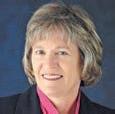
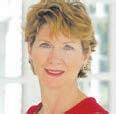
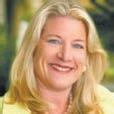
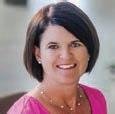
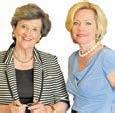
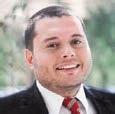

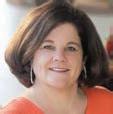
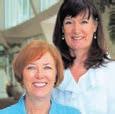

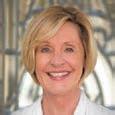

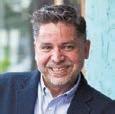

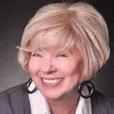
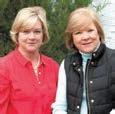
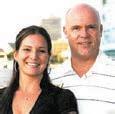
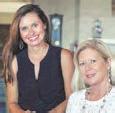
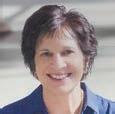



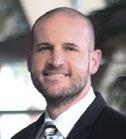
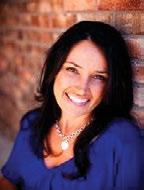
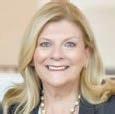




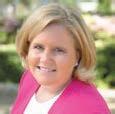


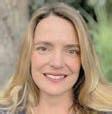

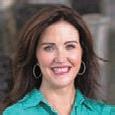










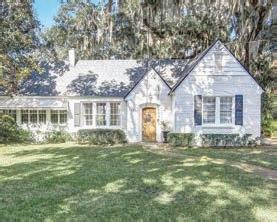
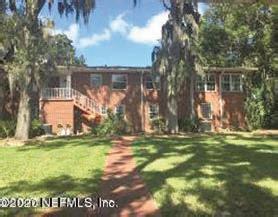







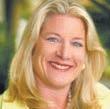
























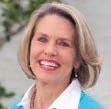






























Brett McClung knew he had big shoes to ll when he took over from Hugh Greene as president and chief executive o cer of Baptist Health eight months ago. Yet, the Texas native, who had never set foot on the First Coast before being considered for Baptist’s top job, appears to t right in as an executive who will build on Greene’s legacy of growth and expand it with a vision of his own.

e son of a Methodist minister, McClung previously worked for Texas Health Resources, one of the largest faith-based, nonpro t health care systems in the United States. At the end of his 26-year tenure, he was executive vice president and chief operations leader for the North Zone of the company, which included nine hospitals and more than 150 points of care.
Taking over from Greene, who retired a er leading the hospital system as president and CEO for 19 years, McClung now heads a locally governed health system comprised of ve hospitals, including Wolfson Children’s Hospital, as well as Baptist Home Health Care, and is also CEO of Coastal Community Health, which is an integrated network of seven hospitals that includes Baptist Health and Southeast Georgia Health System. In short, he oversees a system that cares for more patients than any other in the region.
“I’ve been privileged to be in healthcare for almost 30 years. My dad was a minister, and I grew up feeling like I needed to extend ministry in some way, so I’ve gravitated to faith-based health systems, and there are not many like Baptist Health in the country,” McClung said, noting his new job is similar in scope to what he was doing in Texas. Meeting him, it is clear to see he is ready to choreograph a system that includes Baptist’s extensive hospital network, which recently announced a new $200 million, 100-bed full-service hospital on Fleming Island that will serve Clay County’s growing population.
“It is a privilege to build on the incredible legacy going back 60 years of Baptist Health’s founders – Preston Haskell, Jack Williams, O’Neal Douglas, and Bill Mason – who were completely committed to the health of the community,” he said.
McClung’s vision is one of future growth and will follow Baptist’s new strategic plan that articulates ve important points important to the health system. “Not everything we do is going to be a $200-million new hospital because healthcare is expensive, and we’re really keenly focused on how to make it accessible and easily navigable for the consumer,” he said, adding that he wants to work on integrating Baptist Health’s collection of physician o ces, hospitals, cancer and heart centers and children’s hospital so that
patients can go between them seamlessly. rough collaborating with partners such as Nemours Children’s Specialty Care, he hopes to make Baptist a “one-stop shop, and not just for someone who needs intervention or health services.” He hopes to have the health system be among the top 10% in the country in performance, and to design it so that people can trust Baptist as a source of health information, especially in genomics and tness.
To accomplish this, Baptist will be rolling out its new “My Family App,” in March, which will assist families in coordinating care and managing their health, particularly when members of the family are not sick.
He also plans to install a new electronic health record platform that will allow Baptist patients and customers to view their medical records online in real time.
“Part of growing for the future will be new relationships. Some of those things will be applications like you have on your phone that will make it easy to schedule appointments into a physician’s office. Another will be partnering with health plans, and maybe even employers, around products and services that they may need directly from us. Having seen other markets in the country, we expect the healthcare market will continue to change and evolve dynamically in Northeast Florida, and we will be prepared for that,” he continued.
“We’re also looking beyond Florida at opportunities to partner, collaborate, and learn from likeminded health systems, but then we’re also looking way, way outside of health care for industries that make it easy for people to get the products or services that they need. When you think about travel – how people use Kayak to

get to the right location, or how they use Netflix to watch the right show – we’re in a very digitally consumable marketplace for everything,” he said.
“Our vision, ‘a lifetime of health together,’ which is new, doesn’t say anything about sickness, or illness or fixing people that are broken or even delivering babies,” he continued. “It’s really about folding the walls of our hospitals down and continuing the incredible work that I didn’t start, for sure. It’s about our partnerships with community agencies in Jacksonville, and those community agencies may not be in healthcare but rather are likeminded and interested in what we refer to as the social determinant of health in positively impacting those social determinants like poverty, food scarcity, and lack of family or transportation. We want to look at how we can partner with those agencies locally and afar to improve the health of those in the community,” he said.
One of the community agencies McClung is referring to is the United Way. “Being Baptist Health, we’re the glue for about 25 di erent community agencies where, through grants and relationships or even shared board members, we’re aligned with the work that they’re doing. When we discharge somebody out of one of our hospitals, they go home, and the goal is for them to begin a normal life. Sometimes they need nonhospital resources to do that, and so many of our partner agencies are in a position to provide those things.”
Another important relationship is with Sulzbacher Center. “We know that poverty is the cause of so many things we end up managing from a health perspective and from a city perspective downstream,” he said. “How do we get upstream from poverty? I don’t have a speci c answer for that, but what I can tell you is that we don’t get a pass. We should be part of answering that question, and we will be.”
McClung understands Baptist Health is the single largest private sector employer in Northeast Florida. He regards its 12,000 employees as a sort of family and is committed to assisting them and their family members as well as the outlying community, in ways of being “as healthy as can be” physically, mentally, and spiritually. “I do believe we have an obligation to be a good partner in the community,” he said. “ e community is coming to us and trusting us with their sickness and their health.”
McClung said he and his wife, Nancy, have so fallen in love with Jacksonville that it was a challenge selecting a neighborhood to purchase a home. A er more than 100 days of exploring the area, they nally settled on
Ortega, where they bought a 100-year-old house and began renovations. “It felt like home to us. We love to restore old homes. e one we bought is our fourth one,” he said.
“We had this commitment: Our kids are grown, and they are both in California. is is a new chapter of our life. If we are going to move to Jacksonville, we are going to nd a small, new home close to the o ce that’s not on the water. However, fast forward and 100 days later, we bought a 100-year-old house that’s three stories. It’s not large, but it’s on the other side of the river from the corporate o ce, and it’s on the water. So, we’re 0-4. But we fell in love with the place, that’s why we did it, and we’ve had a lot of fun with it,” he said, noting that when At-large Group 4 City Councilman Matt Carlucci heard about his plans he called it a “trifecta” because McClung and his wife had to redo the plumbing, electrical, and the roof.
Although he lives close to the Timuquana Country Club, McClung is not a golfer. He instead prefers to spend his free time jogging, hiking, fishing, and surfing, and travels out to the beach with his wife at least once a week.
He is also an accomplished musician, who plays piano, brass instruments, drums – anything but guitar – and enjoys singing. In Texas, he was a longtime member of a cover band that has gone by three different names – Providence, Crossroads and Back 40 – and once opened for the Texas stalwart Robert Earl Keen. “Music is in my blood. My dad played guitar. My mom sang. I was on a music scholarship in college,” he said.
And it was in college that he met Nancy, his wife, while sitting in the last row of church. “She was late, and I was later. That was in the fall of 1987,” he laughed, noting he has been married 28 years.
The couple has two daughters: Mackenzie, a senior at the University of Southern California, and Madison, a graduate of Stanford who is now working for a start-up firm in Palo Alto.
Moving to Jacksonville and working at Baptist has been an incredible experience, McClung said. “It’s the best job I’ve ever had.” I love the people I work with. I still think working at a safe, reliable, compassionate place for people that are having the worst day of their life is what I’m called to do.” He added that when he was a boy he would travel with his father in their 1962 standard Volkswagen beetle to visit members of his father’s congregation in the hospital.
“He had a weird schedule as a minister, and to get time with him, I would visit hospitals and we’d go shing a erwards. I grew up around this, which is why I am here,” he said.
“I want Northeast Florida to be the healthiest place to live and the chosen place for people to work. I think we can accomplish that.”
arrive before
• Mike McCue Park and Boat Ramp


Yachtsman Way
• Lonnie Wurn Boat Ramp/Ft. Caroline Club Park

Ferber Rd.
Naval Station Mayport, Jetties Pavilion # 3 | 8 a.m. – 11 a.m.
Exception: Volunteers must have base access or arrange for base access
Urban/Riverside Avondale/San Marco/ Murray Hill/Springfield | 9 a.m. – 11 a.m. Azalea Creek/Boone Park (8 a.m. – 11 a.m.)

• Five Points 1028 Park St. (Meet in front of Sun-Ray Cinema) Hollybrook Park 319 Cherokee St.
• Historic Murray Hill 918 Edgewood Ave. S (Murray Hill Public Library) Klutho Park (9:45 a.m.– 12 p.m.) Meet in parking lot across from the VA, 1536 N. Je erson St.


• Memorial Park 1620 Riverside Ave.
•

Keep Jacksonville Beautiful Commission
Keep Jacksonville Beautiful 37th Anniversary Event

February 28, 2020 6 p.m. -7:30 p.m.
Haskell Co. 111 Riverside Ave. Jacksonville, FL 3220
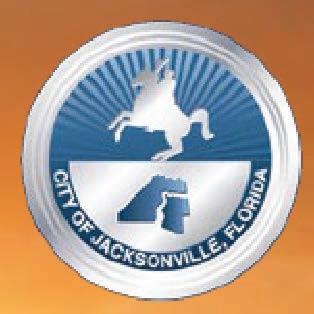
St. Johns River Celebration Cleanup

March 21, 2020 8 a.m. - 12:00 p.m.

Various sites around Duval County
Earth Day Downtown Cleanup
April 18, 2020 8 a.m. – 10 a.m.
Hyatt Regency Jacksonville

225 E. Coastline Dr., Jacksonville, FL 32202

July 5th Beaches Cleanup
7 a.m. - 9 a.m.
Atlantic Beach at the ocean Beach Boulevard at the ocean
International Coastal Cleanup
September 19, 2020 9 a.m. - 11a.m.



Various sites around Duval County
Right Whale Litter Cleanup
November 7, 2020 8 a.m. – 10 a.m.
Seawalk Pavilion 1st St. North
Jacksonville Beach, FL 32250

America Recycles Day
November 13, 2020


Two Locations:
Prime Osborn Convention Center,
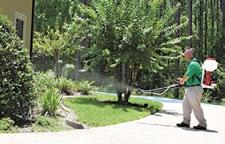
When a suicidal man began firing shots on Hendricks Avenue near Panera Bread and the AshCo shopping center Dec. 6, Panera restaurant manager Mark Latham’s first instinct was to call 9-1-1 and usher customers at Panera Bread into safety in the restaurant’s cooler in the back of the store. Although police were able to settle the matter without anyone being hurt, there is no doubt Latham’s quick response may have saved many lives had things been worse.
Wanting to recognize Latham’s bravery as an act of extreme community service, At-Large Group 4 City Councilman Matt Carlucci has arranged the humble restaurant employee to be honored as a city hero during the City Council meeting April 14.
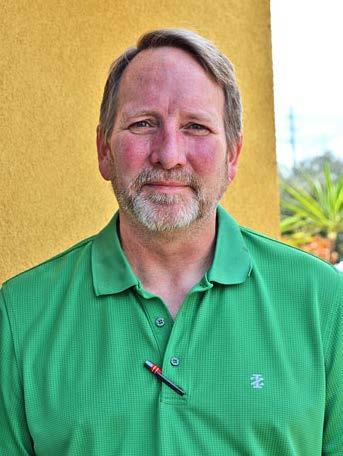
“It’s a bit overwhelming. I just did whatever any normal person would do. I just did what came naturally,” Latham said.


Although Carlucci appreciates Latham’s modesty, he believes strongly he deserves recognition by the city.
“He’s a brave man, and he kept everyone calm while performing such a courageous act, Carlucci said. “You hear all the time

that it will take the entire community to solve our murder rate problem and crime problem, and he’s a part of our community that stood up. It will take all of us in the community working together, and he showed great leadership towards the cause of having the community help in solving this problem.”
While sitting on the patio outside Panera, Latham rst learned he and his customers might be in peril when Ti any Ashurian who works at the neighboring AshCo headquarters alerted him that she had seen a man walking down Hendricks Avenue with a gun in his hand. She asked that he call 9-1-1 because she did not have her phone in hand, Latham said.
Figuring that she must have been mistaken, Latham stepped around the corner of the store to see for himself. “As I watched him, he fired off a shot randomly towards Hendricks when he was still south of Cedar Street,” he recalled.
“It seemed like the gun may have just gone off. He seemed scared so he switched hands with it, putting it in his left hand as he walked toward me. That’s when I realized, ‘this is real,’ and ushered people into Panera. He fired off another shot as I was out of sight of him because you could


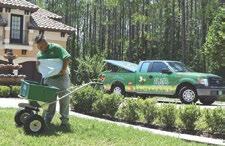
After 4:30 p.m., the Mary Lena Gibbs Community Center, located in Sweetwater and not far from the Lakeshore neighborhood, gets busy when skaters of all ages come out, crowding the basketball area, which thanks to the efforts of local skater Conner Pumphrey, now sports brightly colored obstacles for people to navigate on their skateboards.
A couple of years ago, Pumphrey helped get the skateboard obstacles installed at the center and near a church on Beaver Street in the LaVilla neighborhood, and now he’s thinking about trying to get others installed in other areas of the city. He’s spent months working with City of Jacksonville sta , former District 14 Councilman Jim Love, and Riverside Avondale Preservation members. at was more than two years ago, and now, he’s prepared to pursue a similar path again. “I think I’m going to put in some new requests to get more installed by some other
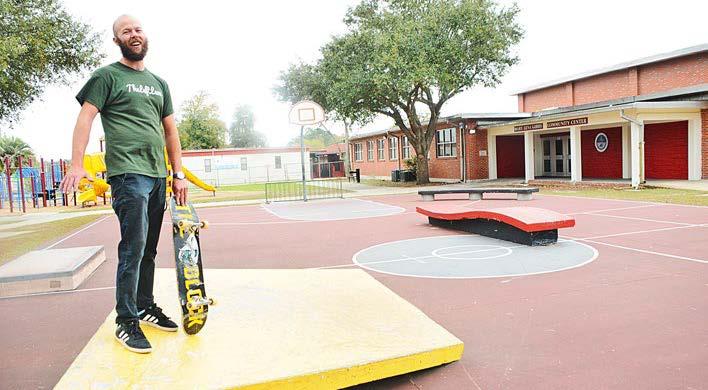
council folks, so I’ll be putting together some new proposals,” he wrote in an email.
e skate spots aren’t meant to be full-blown skate parks, but instead o er less-expensive pieces of equipment that allow skaters to use their boards for more than just coasting along a level surface.
“A skate park is like a putt-putt course,” Pumphrey explained. “ is is like putting one hole in every neighborhood.”
Bud Campbell, coach for SOS Academy, which is located at the same site, said he initially was skeptical about the installation, but he’s come around.
“I didn’t want nothing to do with it,” Campbell said. “But now, it’s cool. You have guys coming from all over, age 45 on down to babies. One guy told me he was from Orange Park, another from Atlantic Boulevard, so that’s a good thing.”
Pumphrey got involved in the project because he likes to stay involved in his community, he said. “I always like trying to have a hand in the neighborhood because this is where I grew up. I’m an avid skater.
hear it. It resonated through the street. I ushered everyone away from the windows out of view. He just walked along Hendricks on the sidewalk. He didn’t come onto the patio. I was on the phone with the 9-1-1 operator and realized the police did not have the right description of the man. They were looking for a black man wearing purple and I told them it was clearly a white man with black on heading north,” he remembered.
As Latham watched, he said he saw the man pocket the gun when a police officer approached. “I pointed out, that’s the guy. He took his gun out and approached three people who were trying to take shelter between the ice cream store and the railroad tracks and asked them for money. By that time multiple officers were there with their rifles out, and I was pointing to the guy. In seconds they had him in custody,” he continued. “Hopefully he will get the help he needs.”
According to the City Council resolution, nearly two thirds of all gun deaths nationally are suicides, resulting in an average of 61 deaths per day. In Florida, an average of 1,626 people die by gun suicide annually, with an average of 80-gun suicides in Duval County each year.
Mark Latham
“Mr. Latham modestly told the media that he acted as anyone under the circumstances and just quickly reacted to do the right thing. However, with 100,000 Americans injured by guns each year, and with 100 killed by guns every day, the situation could have ended in tragedy without Mark Latham’s heroism. The City of Jacksonville hereby commends Mark Latham for his bravery, his composure when faced with danger and for prioritizing the safety of his customers,” said Resolution 2020-28.
If I had one truth about my life, that’s the one thing I can guarantee, that much I know.”
He started skating when he was 11 and when his rst skateboard “looked like something from the ‘80s, like one of those big cruiser boards from the Ninja Turtle movies,” he said, describing a big banana-shaped board with bright pink wheels. “ e graphics were rats in dumpsters and slime and garbage cans – just a little grungy.” Now, he coasts on a board from Block Skate Supply in Spring eld.
He wants to propose pieces that are the same size as those currently installed but that are more abstract, and he wants them to be spread throughout the city.
“You can plop them throughout neighborhoods and communities versus having one skatepark dedicated to the northside, or other neighborhoods,” he explained. “ ey are smaller, cheaper, easier to say yes to, don’t need a lot of funding. ey are picnic-table sizes … nothing that is astronomically huge. I think the biggest piece that’s over at the Beaver Street/LaVilla neighborhood, is 14 feet long, 2 feet wide and 2-and-a-half-feet tall. It’s more like skateable art pieces instead of the big skate (parks) that cost hundreds of thousands of dollars. is just gives every neighborhood kid a place to skate in their neighborhood.”













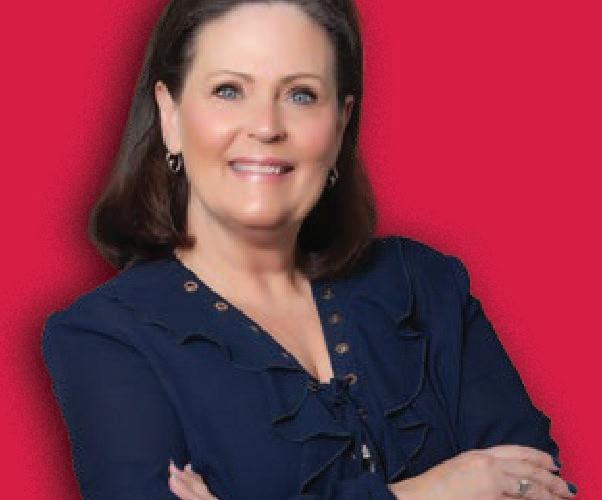



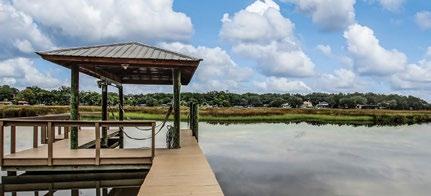




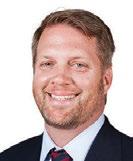
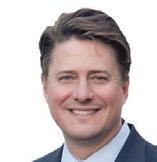
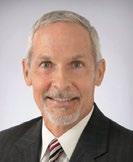
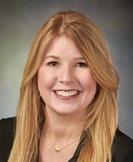
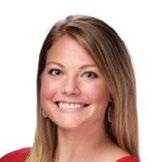
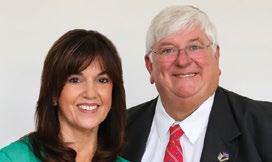






“This will all make sense when I am older. Someday I will see that this makes sense. One day, when I’m old and wise, I’ll think back and realize, that these were all completely normal events.” -Olaf, Frozen 2. When your morning commutes are filled with teddy grahams and Disney tunes, you become overly interested in Nabisco’s parent company, Mondelez as a stock idea and Walt Disney’s wisdom finally breaks through. The previous six months have caused my confusion bucket to overflow but I am no longer worried. In fact, I am comforted, because “I’ll look back and realize that these were all completely normal events.”
Putting money into a Japanese or certain European banks require you to pay the bank to hold your money, aka negative interest rates. Makes sense. The World Trade Organization collapsed and a trade deal was signed that requires China to buy more than double the agriculture products that it consumes. Or as American Action Forum’s Jacqueline Varas puts it, Phase I “necessitate(s) a 150% increase in Chinese purchases over 2017, or a 170% increase over a 5 year average, an increase that cannot possibly reflect market demand.” Command economies beating the old rules based international order, ok. The Astros took the mantel as the most hated team in baseball from the Yankees. I punnily did not see that curveball coming.
According to JP Morgan, corporate defaults increased by 50% last year while we were informed the federal deficit rose to $1 trillion and the Fed dramatically increased its balance sheet. I’ve been told not to worry and don’t dare call it QE. A subtitled movie won the Oscar for best picture. In America, where foreign languages tend to remain that way and, according to the Dept. of Education, only 34% of 8th graders are proficient in reading, this is probably the most surprising thing on the list. ETFs and passive investing continued to become an ever higher percentage of overall investments. The eroding number of active investors selling bad companies and buying good ones surely won’t have any effect on market efficiency. Scott Minerd, CIO of Guggenheim Investments, explained it best in his February report, “If it is in the index, buy it! This is what price discovery has become.” Finally, the coronavirus realistically already threatens China’s GDP growth for the first quarter to be “slashed to -6% annualized”
(Guggenheim 2020) all while the S&P 500 made new highs. Yes, I used to worry about these small idiosyncrasies but I realized the song is right. “There’s no need to be terrified or tense. I’ll just dream about a time when I’m in my aged prime. ‘Cause when you’re older, absolutely everything makes sense. This is fine.” Caleb Cronic is a
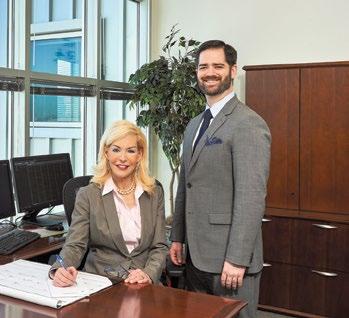
By the second week of February, the National POW/MIA Memorial & Museum had already experienced enough advancements to make 2020 a banner year.
In January, a standing-room only crowd of between 350 and 400 people crowded the recently restored Chapel of the High Speed pass for an o cial groundbreaking on the multi-phase, multi-year project to transform and expand the 26-acre memorial.
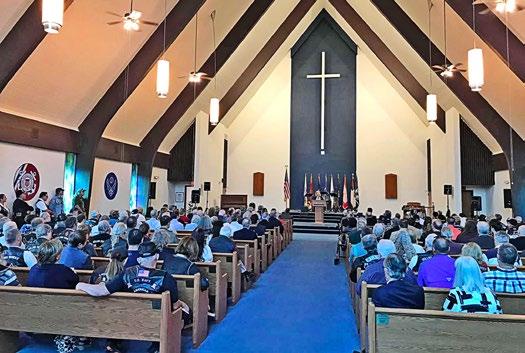

In February, efforts to raise $1 million to bring in four historic aircraft and complete phase 1 of the project were nearing completion.
And, as March closed in, a bill that would give the museum designation as the only national POW/MIA memorial and museum in the country was moving through Congress, Memorial Executive Director Mike Cassata said.
“Unfortunately, the piece in the country that is missing is the ‘missing in action,’ and we will be both a memorial and a museum that will go from World War II up to now,” Cassata said, adding that while there is a national historic site for prisoners of war (POW) memorial near Andersonville, Ga., the site deals primarily with the Civil War and doesn’t include those missing in action (MIA). There’s also POW memorial in California, but it only contains a statue.
“I still get questions about that,” he said.
As far as the full-steam-ahead fundraising, Cassata said the museum had raised more than 70% of the $1 million toward the rst phase, including in-kind services, and had sold out of fundraising memorial bricks for the year, although donors could still purchase bricks for 2021. On top of all that largesse, the North Florida chapter of the Florida Nursery, Growers and Landscape Association, the Florida Irrigation Society and Baker Landscaping, a local company, also collectively donated $150,000 in irrigation and landscaping services and materials to landscape around the four aircra that form the heart of the rst phase. e aircra are to sit in a square formation bounded by a semi-circular walkway northeast of the
chapel, atop a concrete pad the Seabees will pour and form as a donation, said Doug Register, memorial volunteer.
Flying toward the goal
Memorial o cials hope to grace that pad with four speci c planes that either were typical of the type that ew out of the former NAS Cecil Field Master Jet Base (now Cecil Commerce Center and the site of the memorial and museum) or that, preferably, were of that type that ew missions from the base.
On that front, memorial o cials are one down, three to go, said Memorial Communications Director John Sutherland.
Sutherland said that one of the aircra , an A-7 Corsair, was already in hand, which e Resident reported in October, but that it was now in the nal stages of restoration. Pilots from Cecil Field ew the A-7, an attack aircra , in several missions in Vietnam, he said.
“It’s in excellent shape,” Cassata added. “We’re just looking to get a paint job.”
Sutherland said the organization was also working with the Florida-based National Naval Aviation Museum to procure an A-4 Skyhawk, an S-3 Viking, and an FA-18 Hornet. e sta of both the memorial and aviation museum were eyeing three aircra that had previously own from Cecil.

Cassata said the idea for the plane portion of the memorial, which would be placed atop a pad, came from a sculpture already installed at the memorial almost three decades ago.

“A er Desert Storm, the memorial existed but they updated it (with the sculpture) to include (Navy Lt. Cmdr. Michael) Scott Speicher and (Navy Lt. Robert John) ‘B.J.’ Dwyer,” he explained. “Dwyer is still missing in action. In the 1990s, the memorial got a starburst sculpture out there. at’s where we got these four aircra .”
Speicher, a Jacksonville pilot, was the rst casualty of the Persian Gulf War when, on Jan. 17, 1991, his plane was shot down. He was ying an FA-18 and had been stationed aboard the U.S.S. Saratoga. He was identi ed as missing in action, and his fate wasn’t known until 2009, when U.S. Marines in Iraq found his remains a er they learned that the nomads called Bedouins had buried them, according to a U.S. Department of Defense news release. Dwyer went down less than three weeks a er Speicher and neither Dwyer nor his remains have been found. He was also ying an FA-18.
Cassata and Sutherland said fundraising for the memorial continues. One way the group continues to raise money is by selling memorial bricks through its website. e e orts have been so successful that the rst order of bricks has been sold and placed. Sutherland said more than 200 bricks have been spoken for. Donors can still purchase a brick, but they will not be placed until 2021. e memorial bricks will be placed in a benefactor area leading up to the aircra .
Sutherland said the memorial might also soon have an aid to fundraising, or perhaps enlistment, beside the memorial bricks and its other e orts.
“‘Top Gun: Maverick’ is coming out this summer,” Sutherland said. “We’ll have to do something to go along with that. Hopefully, it will get people interested in aviation.”
The film is a sequel to the extremely popular “Top Gun,” which was released in 1986 and starred a young Tom Cruise as a feisty ghter pilot and Kelly McGillis as his love interest. A er the movie came out, enlistment increased as much as 500%, author and longtime journalist David L. Robb wrote in his 2004 book, “Operation Hollywood: How the Pentagon Shapes and Censors the Movies.”


“We can cater to anyone, from the discerning VIP guest to the passionate music lover, and everyone one in between, our goal is to exceed
Live entertainment has never been better in Northeast Florida, and Daily’s Place has been leading the way by hosting star-studded concerts by the likes of Sting, Kenny Chesney, Post Malone, Zac Brown Band and Bob Seger, to name a few. Over the last three years, musical genres across the board have been rocking the amphitheater through a diverse lineup, creating unforgettable moments for lovers of live shows. e best part…there’s not a bad seat in the house. Better yet, VIP options are loaded with amenities to ensure shows are memorable and unparalleled in the industry.

Since 2017, the 5,500-seat, open-air, covered, state-of-the-art theater and ex eld has hosted nearly 430,000 music fans at more than 100 shows. Directly adjacent to TIAA Bank Field, home to our Jacksonville Jaguars, amenities are elevated by shared spaces that only an NFL stadium complex

can o er. e programming and partnership between the Jaguars and the City of Jacksonville delivers a proximity to the performers not o ered in many places across the country and leverages the power of the NFL franchise to bring top-billing artists to the stage.
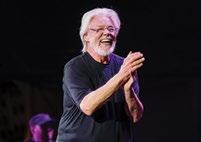


is year’s upcoming season is no exception and ticket sales are in full swing, premium seating through Daily’s Place BLUE, a primetime, high-end experience is poised to deliver for your clients, family and friends. Rod Stewart, e Black Keys, Kane Brown, Alicia Keys, e Doobie Brothers 50th Anniversary Tour, e Lumineers, Matchbox Twenty, and Foreigner are some of the top-notch performers that will grace the stage this season.

Enjoying shows in style, entertaining via premium seating
e management team responsible for Daily’s Place bookings and experiences, Bold Events, has been hard at work to deliver performers that inspire, engage and blow away audiences. Since day one, listening to feedback and taking suggestions from loyal attendees has proven to be a formula for
success. “We’ve always put an emphasis on the personalized services, making sure that a seamless experience can be had for all attendees. We strive for client satisfaction at every turn,” said Chris Gargani, vice president of sales and service. “Our goal is to deliver a world-class experience for not just the artists, but also the fans,” he shared.
Daily’s Place BLUE ticketing programs are the highlight of the venue, with 5-tiers of programming, the experience can be tailored to your liking and budget. Company packages can be arranged for business to business entertaining, or family enjoyment, and individual premium seat licenses can also be purchased so members can have the rst right of refusal, which includes VIP parking and VIP lounge access.
All premium seating packages o er unique access. The upper-most tier, or “Lounge Box”-level package caters to a concierge experience, as patrons have the opportunity to bring anywhere between six and 10 guests
to their 100-level space with the comfort of couches, food and beverage delivery, the avoidance of lines with VIP valet parking, VIP lounge access, pre-loaded ticket credits for food and beverage, and the list goes on.
For Daily’s Place BLUE members, Bold Events is happy to provide a tour, discuss amenities and make sure your preferred seat is available. “We can cater to anyone, from the discerning VIP guest to the passionate music lover, and everyone one in between, our goal is to exceed expectations both before and a er the performers take the stage,” said David Altman, director of premium sales and entertainment. No matter where a guest sits, the entertainers, the lights, the sound and the memories will last a lifetime.
For a complete rundown of amenities and structures of the Daily’s Place BLUE programs, visit DailysPlace.com, click on Premium Seating. Call 633-2000 and mention Resident News [and Daily’s Place BLUE] to be delivered to a member of the sales team today.

Lorri Reynolds, vice president/managing broker/state instructor at Watson Realty Corp’s Avondale O ce, was named the Northeast Florida Association of Realtors©(NEFAR) Humanitarian of the Year during NEFAR’s 2020 Install and Awards Gala.
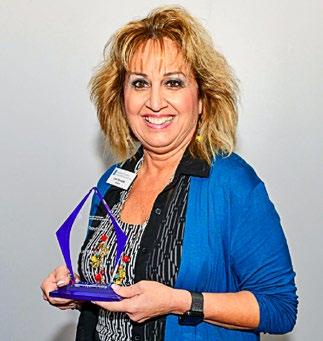
Reynolds is involved in multiple organizations that aim to reduce su ering and pain. She volunteers with Pet Partners of North Florida, facilitating pet and human interactions in environments such as hospitals, schools and nursing homes, according to NEFAR documents. She and her kitty, Sooshi, became the rst cat pet therapy team in Northeast Florida and were recognized nationally as a pet therapy team in 2019. She is also a Pet Partners North Florida board member and instructor for handlers, teaching them how to form a team with their pet. She also serves as a “Read with Me” volunteer.
Reynolds acts as an Emotional Support Human, accompanying people who need support when they put their pet down, or who feel it’s too painful to stay with the pet during the process.
Along with her pet-centered work, Reynolds is involved with the National Alliance of Mental Illness (NAMI), serving as a family-to-family class coordinator since 2013, a Jax Storyteller since 2018, and a Jax Member Advocate since 2018. She also opens her real estate o ce for NAMI meetings and events.
Reynolds continues to serve a host of other community organizations including Community Hospice and Palliative Care, the erapy Animal Coalition, K-LOVE Christian Radio Station and others.


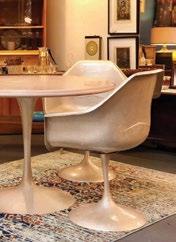

















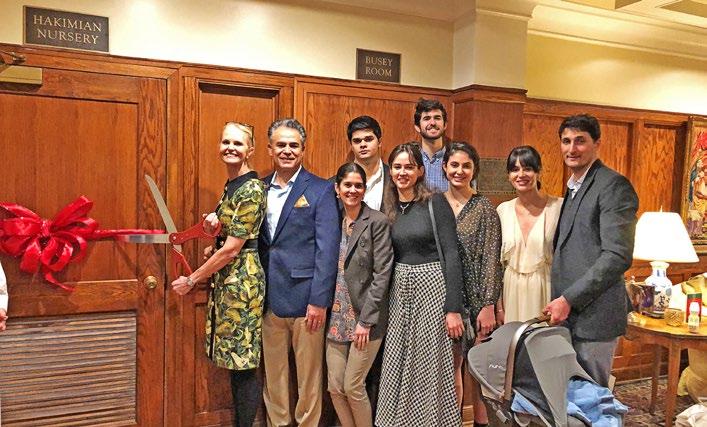
At the beginning of 2019, the vestry at St. John’s Cathedral noticed it had need of a new nursery to replace the existing one. And while a plan was drawn up and an o ce was relocated to create a spacious nursery, St. John’s had another challenge – nding the funding to pay for the new addition.


Paige Hakimian, parishioner, community leader, mother of six, and grandmother of one, immediately responded to the need by rallying her family around the project. Over a period of a few months, and between weddings and the birth of her grandchild, Hakimian and her family brought their time, talent and treasure to create a magical space. What Hakimian and her daughters, Brighton
and Blair, created was a whimsical and welcoming room for babies and their families. Brighton’s custom-designed and hand-painted murals include animals peeking over the Ark door, bunnies in the bathroom, and a butterfly in the “grammable” spot. Blair graced the nursery with the stunning handpainted banner denoting St. John’s Cathedral and Love at the Core.
“ is was truly a gi of love from our family to the Cathedral, a place that I treasure,”














Hakimian said. “As a mother of six, my vision was to create a beautiful, safe place for our little ones, but to also create an environment that could be used by our youth, or other small groups that hold gatherings at the cathedral throughout the week. I couldn’t have done this without my family’s support, especially my daughters, whose creativity and artistic talent played an integral role in shaping the vision for this new space, and for helping bring it to light.”









































More seniors with complex medical needs in Northeast Florida will now have access to Baptist AgeWell’s House Calls program, thanks to a $300,000 three-year grant from Florida Blue Foundation.
House Calls brings the AgeWell care model directly to a patient’s home, expanding access to quality health care for seniors with complex medical needs that make o ce visits di cult. e House Calls program, which began in October 2015, provides routine primary care services that are typically provided in a doctor’s o ce, such as taking vital signs, listening to the heart and lungs, and following up to make sure all medications are being taken. Home visits are made by nurse practitioners and geriatricians who oversee the care.
House Calls is part of Baptist AgeWell, an enriched type of primary care in Northeast Florida for people ages 65+ who want to be proactive with their health to live more independent and productive lives. Board-certi ed doctors, along with nurse practitioners, clinical pharmacists, rehab therapists, social workers and psychologists have a unique, comprehensive and interdisciplinary approach to managing health.
“We are grateful to Florida Blue Foundation for providing the grant that will expand our social services team for the House Calls Program,” said Earl Evens, executive director of Baptist Health’s
AgeWell Institute. “Being able to replicate our model of care in the homes of patients who are not able to make it to the o ce is invaluable to older adults in the Jacksonville community.”



e Community Health Needs Assessment in Northeast Florida from May 2019 highlighted the signi cant need for expanded access to health care, particularly for seniors. e grant for the House Calls program will greatly enhance care for this growing demographic, responding to a critical community need. During the next three years, AgeWell expects to make nearly 6,400 home visits and provide care to more than 545 patients who otherwise may not receive much-needed primary care services.
“The Baptist AgeWell House Calls program aligns with the mission of the Florida Blue Foundation to help people and communities achieve better health,” said Florida Blue Foundation Vice President Susan Towler, a San Marco resident. “The Foundation strategically allocates grants toward community-based solutions through its focus areas and programs that focus on health solutions in the health care system, multicultural and growing populations, and critical issues of affordability, access and quality. The House Calls program is vitally important for many seniors in the Jacksonville community.”
St. Johns Country Day School has named Valorie Baker as its eighth Head of School. Baker will join the School community e ective July 1.
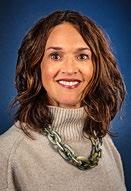
Baker has demonstrated a commitment to gaining the diversity of experience and expertise required to run a school such as St. Johns. She has an extensive track record of championing new ideas, partnerships, and collaborations to extend new opportunities to students and help reach school goals. She is also familiar with the Jacksonville area having previously lived on the First Coast. Her extensive management, administrative, and fiscal experience and her track record of working at some of the finest independent schools in the south, including Webb School, Palmer Trinity, Louisville Collegiate, Episcopal School of Jacksonville, and The Bolles School were instrumental in her selection as the right fit for St. Johns.
"Mrs. Baker's experience, background, and expertise give the Board of Trustees great confidence that she is the right fit for our school,” said President of the Board of Trustees Rick Gregson. “Having previously lived on the First Coast, she is very knowledgeable with the environment in which St. Johns families live and work."
Baker joins St. Johns from the Webb School of Knoxville, Tenn., where, for the past two years she has served as Head of Middle School, directing all aspects of a division of 300 students and 40 faculty and staff. Prior to the Webb School, Baker served at Miami’s Palmer Trinity School as Director of Auxiliary Programs, at Louisville Collegiate as Director of Community Relations, and at two First Coast schools— the Episcopal School of Jacksonville as Director of Counseling and Student Services, and The Bolles School as a College Counselor.
Liberty Landscape Supply, a yard-care company with two other locations in Northeast Florida, has taken over Trad’s Garden Center on San Jose Boulevard.

Owned by Michael Za aroni, who purchased the garden center Nov. 1, 2019, the new company will be called Liberty Landscape Supply at Trad’s, to honor the former garden center’s 48-year legacy. A grand re-opening was held at the store Feb. 29.
Located at 1878 San Jose Blvd., Za aroni said Trad’s prime location was its biggest draw. “The location is in an absolutely incredible part of Jacksonville,” he said.
Trad’s Garden Center was opened in 1971 by Betty and Lou Trad, and their daughter, Denise, will continue to run Trad’s pest control business.
Liberty o ers soil, mulch, gravel, pine straw, sod and large, eld-grown trees as well as expert information about planting and other garden-related issues.
Everything in the store is also available for purchase on-line and can be delivered, services that separate Liberty from other garden centers. Liberty also stands apart from other garden centers because it does
not sell trinkets like bird feeders, wind chimes, or lawn ornaments, said Za aroni. “We focus on core materials and supplies people need to make their landscape projects successful,” he said.
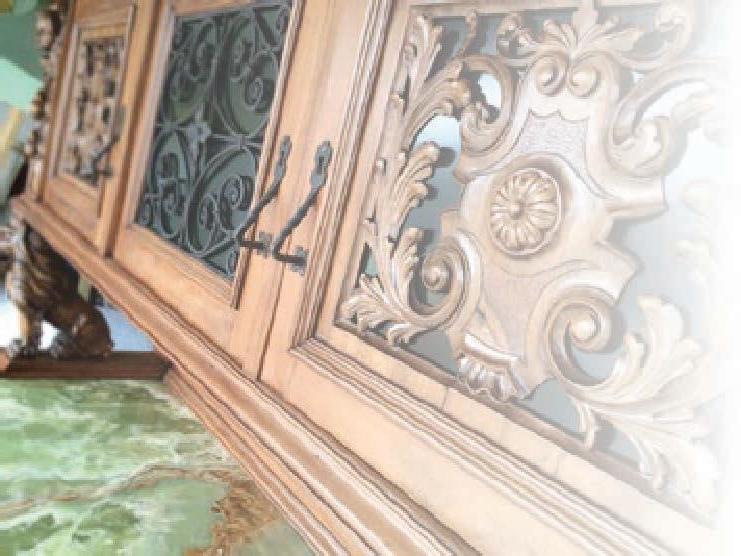
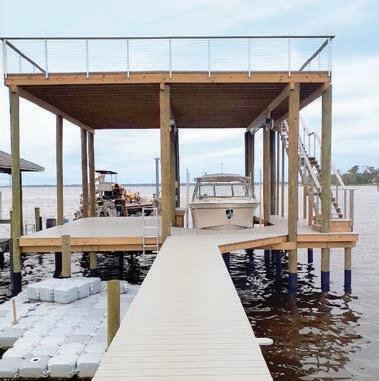


Anita Vining of the San Marco/San Jose o ce of Berkshire Hathaway Home Services was honored as the company’s Top Transaction Agent with more than 151 transactions, during the company’s Annual Awards.
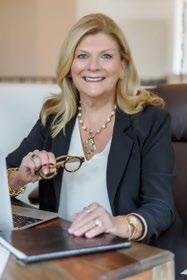
Every year, the Berkshire Hathaway Home Services Florida Network Realty team turns its attention to the company’s Annual Awards. Interest, anticipation and enthusiasm builds leading up to the event, when hundreds of real estate professionals gather to celebrate, connect and learn who earned the company’s highest honors.
With a red-carpet entrance and Hollywood glam, the lively and imaginative event demonstrated how excellence earned through dedicated e orts inspires prosperity,
recognition, respect and satisfaction. e company is proud to represent real estate’s “Forever Brand” and celebrate its Realtors’ award-winning achievements.
“Our Forever Agents are dedicated industry leaders with an enduring commitment to their clients and the community, and I am so appreciative of their loyalty and contributions to our success,” said Berkshire Hathaway HomeServices Florida Network Realty President and CEO Christy Budnick. “Our team understands that the concept of home buying and selling doesn’t start or end with the transaction. Together, our company will forever serve the lives, lifestyle and needs of our clients.”
Smith Hulsey & Busey welcomed its newest lawyer, John Wallace, as a shareholder in the rm in February.

Wallace, a San Marco resident, represents clients in the areas of environmental law, real estate, and land use and zoning law, with an emphasis on litigation. He helps clients navigate regulatory and compliance issues before state and federal agencies and has extensive experience litigating environmental matters.
“John is an outstanding addition to our team,” said Steve Busey, chairman of the rm. “His land use, regulatory and compliance experience will be of tremendous value to our growing environmental and real estate practice groups.”
Prior to joining Smith Hulsey & Busey, Wallace practiced with two other Jacksonville rms and served as an Assistant State Attorney in the Fourth Judicial Circuit, where he tried numerous jury trials and bench trials.
John WallaceA Jacksonville native, Wallace graduated from the University of Georgia School of Law and received a bachelor’s degree in political science from Auburn University.
City Rescue Mission is excited to announce our Transforming Lives by Transforming Lawns 2020 Mulch Program
Get your yard looking great for the upcoming season and support the hungry, homeless and addicted in Northeast Florida! City Rescue Mission was started by local businessmen in 1946 with a passion for helping those in need. Today, the Mission has served thousands of men, women and children as they provide addiction recovery, meals, shelter, and clothing for the community.
Your support in 2019 provided:

• 220,390 hot meals
• 67,761 nights of safe shelter
• 994 free medical visits

• 373 free dental services
Mulch $3.00/bag
Pine Nuggets $3.95/bag
Pine Straw $4.75/bale

Delivery Fee $25.00/order
• 98% of CRM Workforce Development students found full time employment

How does my mulch purchase help those in need?

• 10 bags of mulch provides 5 hot meals

• 20 bags of mulch provides a night of shelter and 2 hot meals
We invite you to take part in CRM’s 2020 Mulch Program. Each order helps to provide hope, healing and change to those who need it most. Thank you!
Please call 904-421-5150 for more information or visit our website to place an order. Mulch can also be picked up at 426 McDu Ave South.
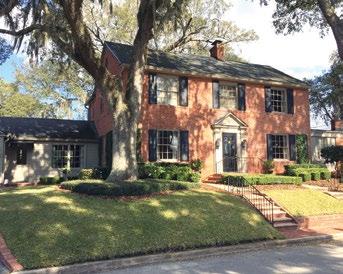
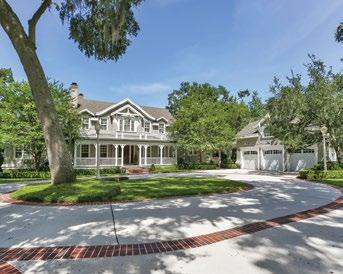



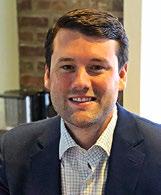
North Florida Land Trust (NFLT) has named Melissa Long and Ryan Switzer to its board of directors. Long and Switzer were both recommended to the board by a current member and elected unanimously at the Jan. 21 board of directors meeting. Long and Switzer will both serve a three-year term.
“We look forward to having Melissa and Ryan on our team as we continue our mission to protect the natural resources, historic places and working lands in north Florida,” said Jim McCarthy, president of NFLT. “Melissa’s passion for improving water quality and Ryan’s background in commercial land acquisitions will bring new perspectives to our board and will help guide our decisions as we continue conserving environmentally-sensitive lands.”

Long serves as chief of the environmental quality division with the City of Jacksonville where she focuses on surface and groundwater, along with air, tanks, hazardous waste and petroleum cleanup. She previously worked for the Department of Environmental Protection’s Northeast District where she was a water facilities administrator and worked with industrial
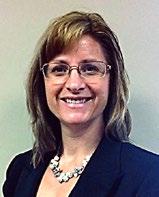
Melissa Long Ryan Switzer and domestic wastewater facilities, drinking water, water quality issues and state lands and wetlands. Long earned her Bachelor of Science in Chemical Engineering from Florida State University. Switzer is a licensed sales associate with Cantrell & Morgan where he focuses on commercial retail properties throughout the Southeast. He works on both land acquisitions and shopping center acquisitions as well as representing both tenants and landlords. Switzer is also the co-founder and CEO of Beau Outfitters, a clothing, gift and accessories store located in San Marco. Switzer is a graduate of Auburn University where he earned a Bachelor of Science in Economics.
Both Long and Switzer’s positions on the board are new and grow the nonpro t land conservation organization’s board to 13 members. Long and Switzer will serve as members at large along with seven others.



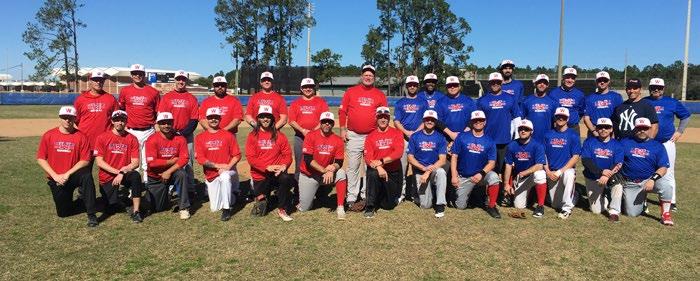
e baseball team from Samuel Wolfson School of Advanced Studies and Leadership hosted its second annual alumni game on Feb. 8. Players from Wolfson High graduating classes spanning 1971 to the 2000s formed teams for a red vs. blue game of hardball. e players, some with their parents and children in the stands, wore custom alumni jerseys and hats. A er seven innings, the red team was victorious, 10-5. In the home-run derby, Josh Veres defended his title as the derby king with a sensational hit that cleared the out eld fence.
VyStar Credit Union’s has pledged $2.5 million donation to the Museum of Science and History on the Southbank to support the MOSH 2.0 capital campaign.











e Jacksonville-headquartered credit union will be recognized as the title sponsor for the VyStar Credit Union Cultural Ecosystem, an area within the museum that will explore Jacksonville’s roots and the many facets of its identity. As a blend of history and culture, the visitor will experience within the Cultural Ecosystem a celebration of the city’s rich diversity through storytelling, music, art and dance.
“MOSH 2.0 will transform Downtown Jacksonville while advancing our mission of inspiring the joy of lifelong learning for the region’s residents and visitors,” said Maria Hane, MOSH president. “We are inspired to welcome VyStar Credit Union as a partner in creating a new center for science, culture and innovation and a reimagined Downtown experience.”
In addition to supporting the Museum’s expansion plans, VyStar Credit Union will sponsor free admission for all military personnel and their families on Saturday, April 18 —representing an extension of the credit union’s longstanding commitment to recognizing and honoring the service of Northeast Florida’s military community. e partnership also includes having Brian Wol urg, president and CEO of VyStar Credit Union, join the museum’s board of trustees. His three-year term will begin on June 1.


“We are honored to expand our partnership with MOSH to empower and inspire our leaders of tomorrow through education and nancial literacy, while also supporting and respecting our military,” said Wol urg. “VyStar is proud to support MOSH’s bold vision for the future —and I am personally looking forward to collaborating with the board of trustees to bring that vision to life.”
To date, VyStar Credit Union has provided more than $115,000 in support of MOSH. VyStar is the title sponsor of MOSH’s core exhibit, Atlantic Tails: Coastal Creatures of Northeast Florida. VyStar Credit Union members and employees receive special bene ts at the Museum, such as $5 admission with a VyStar debit or credit card or employee identi cation; $10 o annual membership fees; and discounted admission for a erhours events, including MOSH A er Dark and shows in the Bryan-Gooding Planetarium.



Jacksonville Area Legal Aid (JALA) has committed to raising $1 million for an endowment that the Baptist Health Foundation will multiply by 125%. e money will be used to help pediatric patients and their families with their legal needs through the Northeast Florida Medical-Legal (NFML) partnership, meaning that families who can’t a ord to pay for legal services will be represented in a variety of ways.
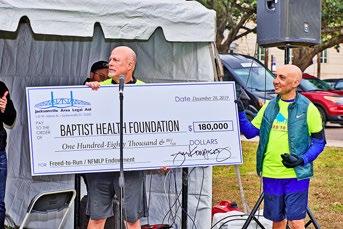
Freed to Run 3.0, the latest in a series of fundraising marathons organized by Mike Freed of the corporate law rm Gunster, continues to help meet that high goal. In late December, fundraising relay teams raised $180,000, which will be matched by the foundation. Freed to Run is the largest fundraiser for the partnership.
Freed ran all six marathons alone in 2017 and has continued to run them alongside the relay teams, each of which jointly tackled a single marathon in ensuing years.
Freed to Run 3.0 is co-chaired by Darnell Smith, Florida Blue market president –North Florida Region, Ryan Ludwick, shareholder with Fisher, Tousey, Leas & Ball and Eric Krall, mortgage sales manager with Community First Credit Union.
e 22 teams, each of which set an individual fundraising goal, include the following businesses, law rms, higher education institutions, government o ces, community and philanthropic organizations and individuals: Gunster; Florida Blue; Community First Credit Union; Fisher, Tousey, Leas &
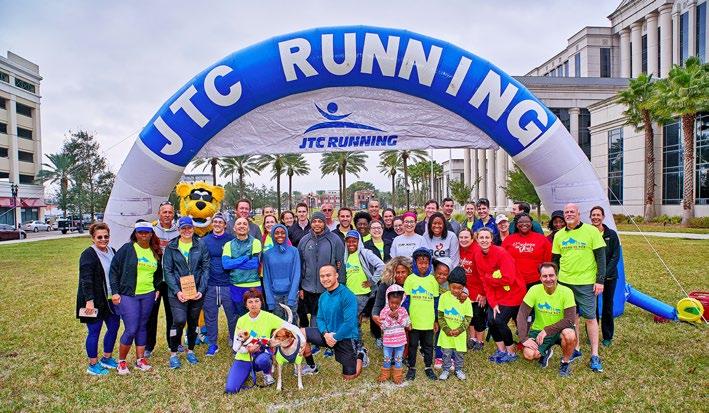
Ball; JAX Chamber; Jacksonville Bar Association (Solo & Small Firms); Abel Bean Law, P.A.; Harrell & Harrell; Akerman LLP; e Truck Accident Law Firm; e Pajcic Smith Group | Merrill Lynch; Forbes & Gilham; Smoak Davis & Nixon LLP; State Attorney’s O ce-4th Judicial Circuit; e Defenders- O ce of Public Defender Charlie Cofer; Women’s Giving Alliance; UNF School of Music; Jacksonville University; Team Bowzer; Pavement Killers; JALA Sta ; and JALA Board of Directors.




So far this year, fundraising e orts toward the endowment have accumulated $405,000, said campaign spokeswoman Nancy Kinnally. She said Freed deserves much credit for starting the e orts.
“Freed has gotten lots of teams on board, he has been the Pied Piper of this in spite of the fact that he runs all six marathons himself,” she said.
As the oldest child-service agency in Florida, Daniel has evolved to meet the needs of our changing community for more than 135 years. One of the many ways the agency does this is through the Glyn S. Cook Memorial Scholarship. is scholarship serves as a lasting legacy for longtime esteemed Daniel board member Glyn S. Cook. Mr. Cook believed that higher education could unlock countless opportunities for the children Daniel serves. His memorial scholarship provides nancial assistance to quali ed youth seeking to further their education at an accredited university, college, or trade school. Daniel has raised funds for this scholarship for more than a decade.
A er careful consideration, Daniel’s executive committee has decided to launch the inaugural “Home at Daniel Built: An Evening Under the Pavilion” to support Mr. Cook’s educational vision, while also funding essential renovations to Daniel’s campus cottages.
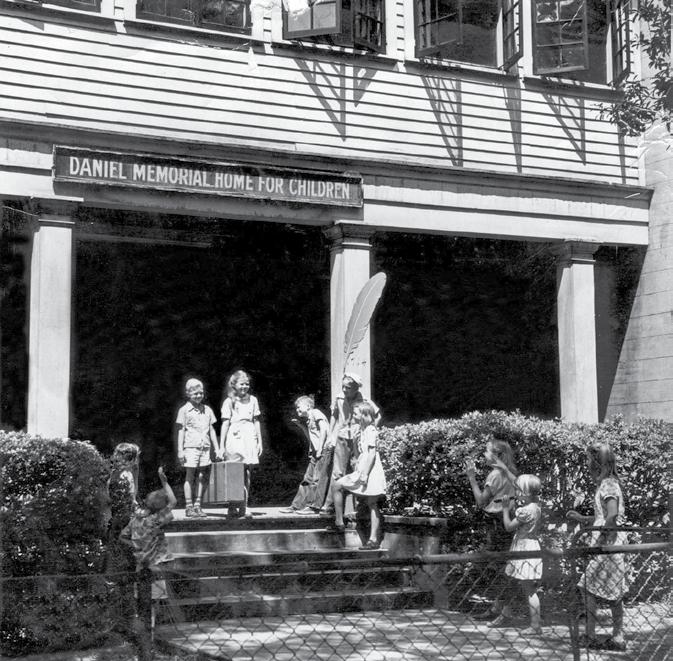
Event attendees will enjoy an open bar, dinner, a silent and live auction as well as live music and dancing. ey will also have the opportunity to take campus tours guided by Daniel kids and enjoy watching deserving Daniel youth receive this year’s Glyn S. Cook Memorial Scholarships. With your help, we can continue our mission of improving the lives of children and families. Please consider joining us for this special event.
SAVE THE DATE:
“ e Home at Daniel Built: An Evening Under the Pavilion”
Saturday, April 25 at 6 p.m.
Daniel Residential Campus 3725 Belfort Rd, Jacksonville, FL 32216 Learn more at www.danielkids.org
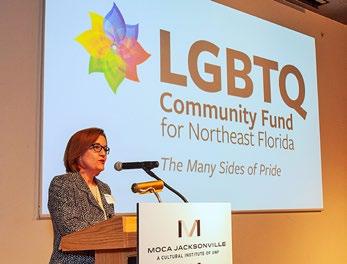
e LGBTQ Community Fund for Northeast Florida will underwrite Jacksonville’s rst annual LGBTQ Film Festival in downtown Jacksonville, to take place at MOCA Jacksonville June 11-14, 2020. e Many Sides of Pride Film Festival will feature the best in LGBTQ lm as well as lms directed by members of the LGBTQ community to celebrate their diverse impact on the world of cinema.

“We are eager to bring to Northeast Florida a high caliber selection of lms with timely topics for those in the LGBTQ community and their allies,” said Joe Barton, chair of the advisory board of the LGBTQ Community Fund. “ ere is a wealth of talent creating lms for and by the LGBTQ community, and my fellow board members feel strongly that this is a special opportunity for our city.”
e LGBTQ Community Fund has made a grant of $36,700 to the Museum of Contemporary Art (MOCA) Jacksonville, a Cultural Institute of the University of North Florida, to create this inaugural event. Over the course of four days, MOCA Jacksonville will present eight lms, including documentaries and shorts, highlighting the diversity of LGBTQ stories and storytellers. Programming will include presentations from lmmakers, panel discussions with members of Jacksonville’s LGBTQ community, and moderated post- lm conversations. One of the many lms to be featured is executive producer Patrick Dempsey’s newest project, “Hurley,” a lm about the legendary sports-car racing driver Hurley Haywood. Haywood, who lives in St. Augustine, is expected to attend e Many Sides of Pride Film Festival.
“ e Many Sides of Pride Film Festival will be an opportunity for all to explore the many powerful stories of the LGBTQ community through the lens of lm,” says MOCA Director Caitlín Doherty. “MOCA Jacksonville is grateful to partner with the LGBTQ Community Fund in creating this exciting cultural program for our city.” As part of its annual grantmaking, the LGBTQ Community Fund also made three additional grants: $25,000 to OneJax Institute, an interfaith organization, to implement OUTLook, a leadership development program for LGBTQ youth ages
Wolfson Children’s Hospital and Baptist Medical Center Jacksonville received a $25,000 grant Feb. 18 from CVS Health to help establish a Baptist Behavioral Health acute-care clinic for patients at risk of experiencing a mental health crisis.
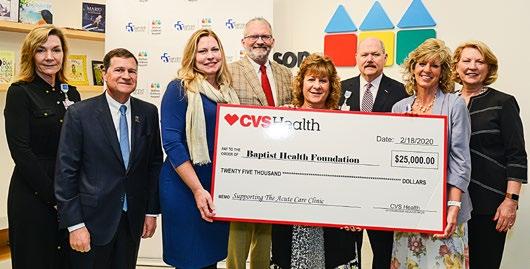
e grant is part of CVS’s initiative to invest in health care throughout Florida.


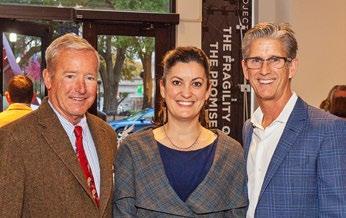
The purpose of the grant is to help Baptist Health better meet the needs of patients for same-day acute mental health care. The new Baptist Behavioral Health acute-care clinic will create a bridge between inpatient and outpatient care, providing adults and children who are at risk of a mental health crisis with time-sensitive intervention or counseling by a mental health professional in an office setting.
The expanded clinic will be funded, in part, by the $25,000 grant. As part of Baptist’s commitment to increase access to mental health care, a portion of the grant will be used for
14-19; $20,000 to the Nonpro t Center of Northeast Florida to support the launch of the LGBTQIA+ Emerging Leaders Program to invest in and develop the next generation of nonpro t leaders; and $4,000 to PFLAG for administrative support and community outreach as a bridge grant.
e LGBTQ Community Fund for Northeast Florida, housed at e Community Foundation for Northeast Florida, has awarded $725,000 since it began making grants in 2014— including substantial grants to organizations representing LGBTQ Youth, LGBTQ elders and LGBTQ on-campus services—which were areas identi ed by research as signi cant opportunities for assistance. e Fund has also invested $168,000 in local research and convenings to improve the lives of those in the LGBTQ community.

Junior Achievement (JA) of North Florida is a winner in the Chick-fil-A Foundation’s 2020 True Inspiration Awards. The nonprofit organization was named a regional finalist in September and asked the community to help them win a $20,000 grant from the foundation by voting on Chick-filA’s mobile app. The votes have been counted and JA of North Florida was named as one of the 22 recipients of this year’s award.
JA of North Florida was one of five organizations that were in the running for the award in the Southeast region. The program the grant will support is part of the JA Work and Career Readiness Pathway which is designed to help students acquire the skills and mindset needed to be financially capable and ready for the workforce. It will benefit students from low to moderate-income, Title 1 schools and those associated with partnering nonprofit organizations.
“We are so thankful for the community who took the time to vote for us and we are also thankful to the Chick-fil-A Foundation for this wonderful opportunity,” said Ti any Mackey Guthrie, director of development for JA of North Florida. “ e money we have received from the foundation will be used to teach our JA My Way program to hundreds of students from ages 12 to 18 to help prepare them for the workforce.”
The True Inspiration Awards were established in 2015 to help nonpro t organizations that serve children and youth in the elds of education, youth homelessness and poverty, or economic empowerment. ey honor Chick- l-A Founder S. Truett Cathy, who was dedicated to inspiring the unlimited potential in children. Each year, the Chick- l-A Foundation chooses 22 community organizations to honor and celebrate with the True Inspiration Awards. JA of North Florida will be honored along with the other recipients at the Chickl-A Foundation’s annual event in May.

Health grant to help establish mental health acute-care clinic at Baptist
Two out-of-state banks are merging in order to pool $34 billion in assets and reach 18 high-growth markets in six states throughout the Southeast, according to a news release.
Center State bank is based in Winter Park, Fla., while South State Bank is headquartered in Columbia, S.C. Under the terms of the merger agreement, which was unanimously approved by the Boards of Directors of both companies, CenterState shareholders will receive 0.3001 shares of South State common stock for each share of CenterState common stock they own. CenterState shareholders will own approximately 53% and South State shareholders will own approximately 47% of the combined company. e combined company will operate under the South State Bank name and will trade under the South State ticker symbol SSB on the Nasdaq stock market. e company will be headquartered in Winter Haven, Florida and will maintain a signi cant presence in both Columbia, S.C. and Charleston, S.C.; Charlotte, N.C.; and Atlanta, Ga. However, there is a y in the ointment. A law rm announced at the end of January that it would be investigating whether the merger was fair to shareholders.
Halper Sadeh LLP may seek increased consideration for shareholders, additional disclosures, and information concerning the proposed transaction, or other relief and benefits, according to a separate news release posted by Globe Newswire.








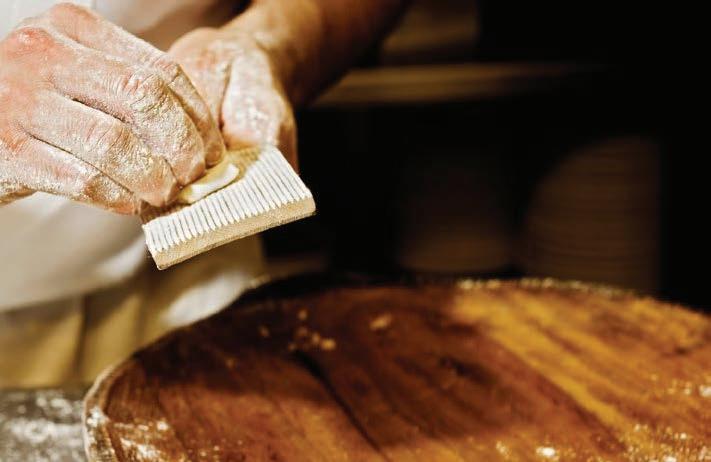


The Fourth Circuit Judicial Nominating Committee interviewed 12 applicants on Feb. 10, for a vacancy created by Judge Gregg McCaulie’s retirement, according to the Florida Bar. The interviews took place at the Duval County Courthouse on Adams Street.
ose interviewed were: Jeb Branham, attorney at Jeb. T. Branham PA in Jacksonville Beach; Fourth Circuit Assistant Public Defender Melina E. Buncome; Janet A. Carver of Carver & Adams Law in Fernandina Beach; F. Susannah Collins, with Robinson Collins PL in Jacksonville; Ronald J. Davis II of Ronald J. Davis PA of the San Jose

ousands of runners took to the streets of Jacksonville Jan. 25 for the 11th annual Wolfson Children’s Challenge, a day of races and family-friendly events to raise more than $250,000 for Wolfson Children’s Hospital. e nal amount raised will be matched 125% by Baptist Health.


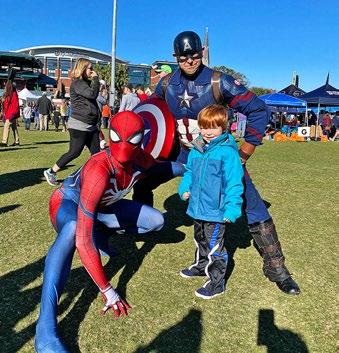
e event included a 55-kilometer ultramarathon and a 30-kilometer individual run while teams could participate in the 55-kilometer ultra-relay. For children and beginning runners, there was the one-mile fun run.
area; Gilbert Lee Feltel Jr., chief legal counsel for the Jacksonville Port Authority; James E. Kallaher of Kallaher, DeLuca & Naughton in Orange Park; Duval County Magistrate Robin E. Lanigan; Stacey L. Myers of Orange Park; Rhonda Denise Peoples-Waters of Rhonda Peoples-Waters in Jacksonville; William Joel Powell of Edwards & Ragatz PA in Jacksonville; and Julie K. Taylor, 4th Judicial Circuit court counsel.


If the committee decides to make a recommendation, the candidate’s application and information is to be forwarded to Gov. Ron DeSantis’ o ce for consideration for the appointment.

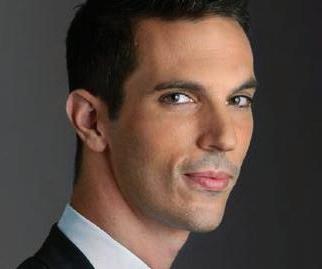
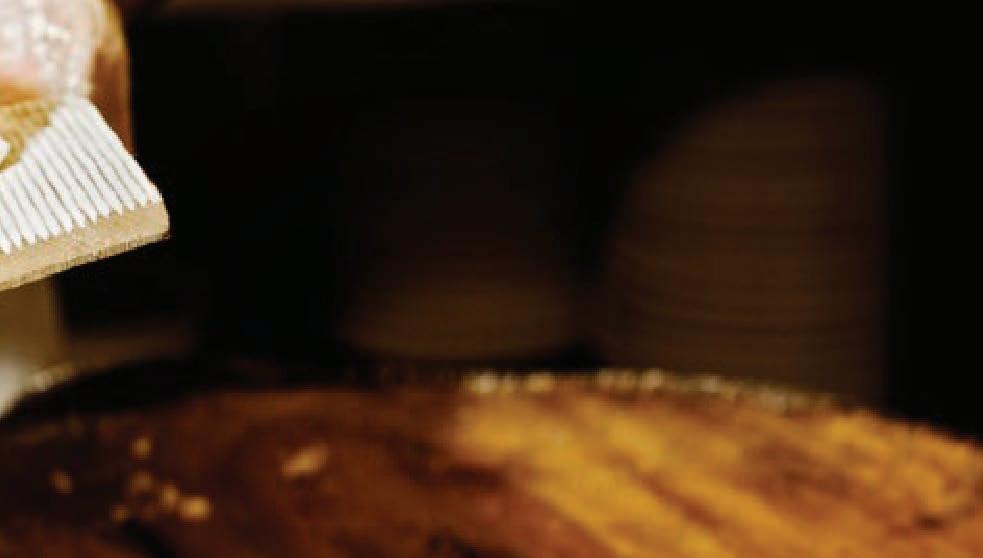
e Jacksonville Symphony Orchestra was one of only four symphonies chosen nationally to perform before a federal legislative and executive delegation at the John F. Kennedy Center for the Performing Arts in Washington, D.C. e symphony will be the rst to perform there on Tuesday, Mar. 24, with a program that will explore the in uence jazz artists and composers have on traditional classical composers, according to a news release. Two Jacksonville-centered pieces will be included in the program: Bridges, written by the Symphony’s 2018-2019 Mary Carr Patton and Composer-in-Residence Courtney Bryan as well as Celebration, a piece written by Duke Ellington in 1972 in celebration of the City of Jacksonville’s 150th anniversary.
Mayor Lenny Curry’s wife, Molly Curry, will be the honorary chair for the trip.
“We are delighted to have the First Lady with us as we represent the City of Jacksonville in front of a national audience,” Music Director Courtney Lewis said. “With its rich history of jazz and symphonic music, Jacksonville takes pride in its contribution to the country’s arts and cultural landscape. I couldn’t be proud of our musicians and the organization for achieving the artistic excellence necessary to reach this goal.”
During the event, 55 children of all ages who represent the wide range of conditions that are treated at Wolfson Children’s Hospital are honored as the “Wolfson 55.” Each family shares their inspiring story.
e inspiration for the Wolfson Children’s Challenge came from Paul Wilson, whose newborn son, Luke, underwent surgery just hours a er his birth. Wilson endeavored to raise $5,000 by running 55 miles, the age of the hospital when his son was a patient. Since then his mission has far surpassed his initial goal, with the fundraising event tallying $211,000 in 2019 alone.
is year, proceeds from the event are to be used to convert an existing patient room on the hospital’s oncology oor into a MIBG therapy room. e new room, the rst of its kind in Florida, will give the hospital the ability to offer the newest upfront treatment for children with
neuroblastoma, the most common solid tumor of childhood cancer. MIBG therapy is a radioactive treatment that must be administered to pediatric patients in a special room designed to protect staff, patients and families in surrounding rooms from radiation. During the treatment, patients must be kept isolated in the specialized room for three to five days to prevent radiation exposure to other patients and sta . e new MIBG room already has a separate, adjoining living space to accommodate parents and families with voice and video communication equipment installed in the rooms allowing patients and their families to remain connected.
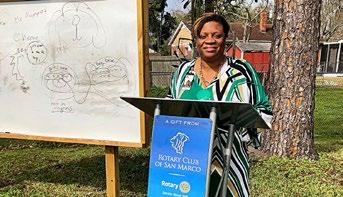
e Rotary Club of San Marco recently completed the construction of an outdoor classroom for Spring Park Elementary School. e classroom consists of six vinyl-clad metal benches, an aluminum podium and 4’x 8’ whiteboard.
e total cost of the project was just under $3,000, and the members of the club contributed the funds and participated in the


construction and installation. Mike Todd of Sargent Seat Covers donated a commercially sewn, custom vinyl cover for the podium.
Davina Parker, principal of Spring Park Elementary School, used research conducted by the University of Wisconsin-Stevens Point when requesting the construction of an outdoor classroom. Learning outdoors is active and increases students’ physical, mental and social health. Some studies have even shown follow-up (e.g., non-school) physical activity increases with outdoor learning. Access to nature has also been shown to decrease the symptoms of ADHD. Outdoor learning and access to nature also decrease stress levels of students and teachers, she said.
“We really appreciate the commitment of the Rotary Club of San Marco to our school.
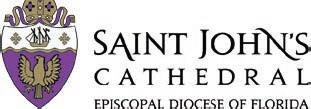
e outdoor classroom is an incredible resource for our students to engage in
learning opportunities outside of the typical classroom. Teachers are holding literature circles, conducting weather observations and even just using the outdoor classroom as a change of venue for regular instruction. It is adding new dynamics to our students’ learning experience.” said Parker.
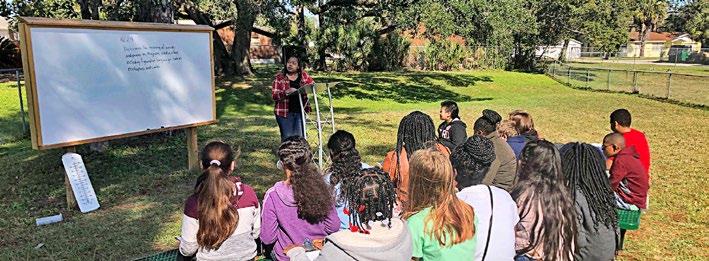
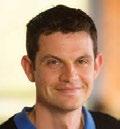
Long-time Cummer Museum of Art and Gardens supporters J. Wayne and Delores Barr Weaver recently gi ed $3 million to endow the chief curator position for the museum. e newly endowed position will be named a er the couple and is to ensure the museum attracts top talent, according to a news release. e position oversees e orts to build, present, and conserve the museum’s permanent collection and directs the presentation of exhibitions.

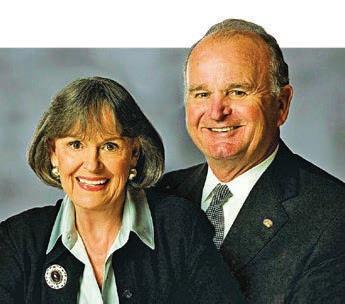
Holly Keris, current chief curator, has made major contributions over the past 17 years and those who come a er her will similarly shape the institution’s vision and mission and lead its artistic program, according to the release.
“ rough our longstanding association with Holly Keris and the Cummer, we have come to appreciate the tremendous value and profound in uence of a chief curator,” noted Delores Barr Weaver. “We are particularly grateful for Holly’s extended e orts as both chief curator and interim director for nearly two years, during a challenging period when the Gardens were ravaged by Hurricane Irma and the Women’s Club building had to be razed because of termites.”
She added that the gift was meant to vouchsafe the curator’s position as “a leading voice in our cultural community for generations to come.”

e Weavers’ decades of generosity to and leadership at the Cummer Museum began in

1997 and have included important initiatives such as Weaver First Saturday Free for All –free admission for all visitors the rst Saturday of each month. eir Weaver Family Foundation Fund at The Community Foundation for Northeast Florida also has provided long-term support for Art Connections, the Museum’s interactive learning center for children and adolescents, as well as Cummer in the Classroom, a comprehensive art education program for Title 1 elementary school children.
“ e core of an art museum is its artistic program — it is this content that engages diverse audiences, that provides the stimulus for educational programming, and, at our institution, that connects gardens and galleries,” said Pam D. Paul, chair of the



The Rotary Club of San Marco was chartered in 2008 and has 31 active members. Breakfast meetings are held every Tuesday at 7:30 a.m. at the DoubleTree Riverfront Hotel. The club is one of 21 clubs in Northeast Florida and 62 clubs in the North Florida District.

Cummer
of Trustees. “ e work of developing this program belongs rst and foremost to the chief curator, and Delores and Wayne’s thoughtful gi guarantees quality in this role into the future — ensuring both the Cummer Museum’s sustainability, as well as its continued relevance to Jacksonville and Northeast Florida.”



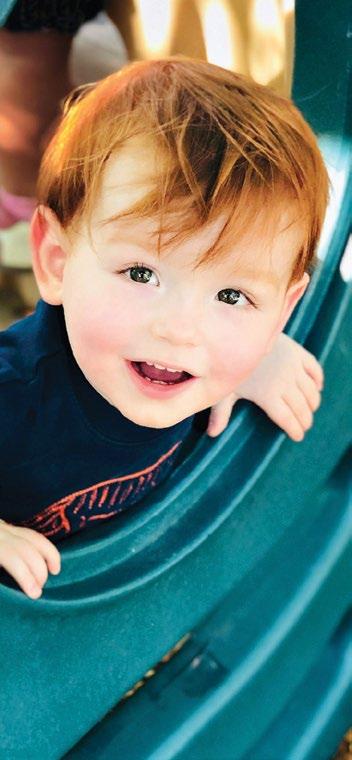

With Jacksonville so spread out with varied landmarks depending on what side of the water you’re on, it’s not uncommon to hear about on-going revitalizations that turn into big city projects. Yet, sometimes one person can take the initiative to revamp a small area that has a big impact for their neighbors and the community itself.
at’s what happened to the little round pocket park in the Colonial Manor subdivision where Lakewood Road and Northwood Road intersect. is circular plot of land, a roundabout in the area, had been neglected for many years. Although the city owns it and is responsible for its upkeep, it somehow passed under its radar, and the area became so overgrown that contractors were parking on it, not realizing it was a small park of sorts.
Although many neighbors passed by the intersection without giving it a second thought, like the saying goes, it takes just one person – the rst to notice and take action – to start an improvement movement. at’s just what Dennis Campay did. Starting about ve years ago, Campay turned his artistic sensibilities to turning the eye-sore into a pleasing natural garden to match the immaculate lawns and landscaping of this beautifully established, colonial-style, neighborhood in San Marco.
“When people enter Colonial Manor, they have to go past the roundabout, so it needed to be attractive,” said Campay. “ e plan was simply to change a nonidenti able, basically ugly place, into what it is now, an attractive greenspace, which ultimately has brought together the neighbors near it. ey have been excited to play a part.”
Campay started the revamp by hiring a crew to clean out the area and remove one
of two trees that had died, paying for it himself. He noticed his neighbors nearby the park, Keena and Kevin Finn, were remodeling both inside and out and asked if they would donate nearly 30 boxwood bushes that they were having removed from their front yard, which they did.
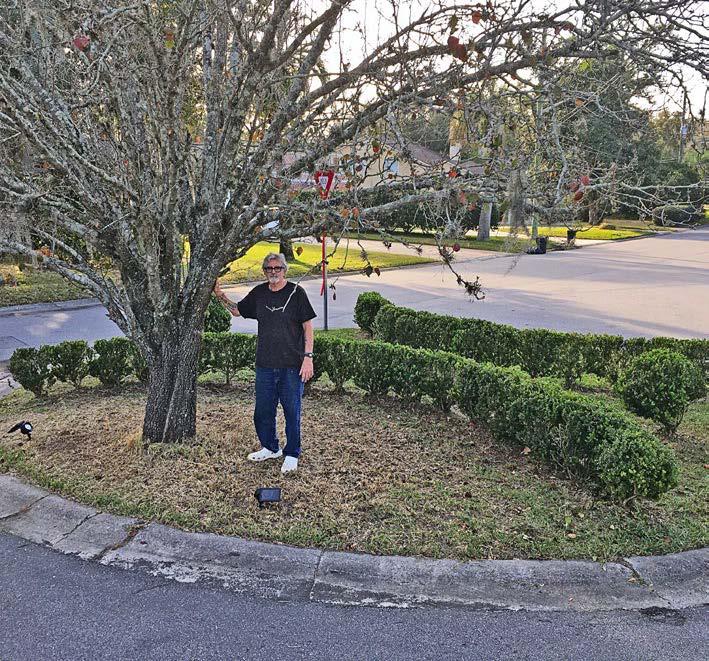
Needing to get them in the ground quickly, Campay took to sketching landscape designs and collaborating with friends from Cascade Designs, coming up with a landscape plan for the boxwoods. He hired his lawn maintenance crew to plant the boxwoods and began the task of watering the bushes twice a day for weeks so the roots would set. Campay also took his hoses and hooked them up to several neighbors’ hoses, including the Finns and a few others, who kindly supplied the water source to establish the boxwoods.
“It's a great community with everyone always willing to help and care about each other,” said Campay.

More neighbors are involved keeping-up with the maintenance of the little pocket park with some trimming the bushes and others with ideas for planting some native owers this spring. Kathy and Chris Swindell trim the bushes and want to give it a French garden air.
Several years ago, neighbor John Ambrose began routinely mowing the area. “It’s everyone’s civic duty to pitch in and help their community when they see a need,” said Ambrose. Someone else placed a cute, rustic birdhouse on the electric pole, adding to the area’s charm.
Because the neighborhood has a lot of evening walkers and kids playing in the area, Campay has been working on lighting the roundabout. A er contacting JEA (Jacksonville Electric Authority), he discovered it was
too complicated to put a meter on the site, so he began experimenting with solar lighting to shine on the pear tree. Not feeling it was bright enough, he’s toying with the idea of a larger solar panel for the lights. is year’s plan is also to dig out the area around the pear tree and replace it with river rock and low-maintenance plants. Neighbors are also wanting a bench, so that will probably be added, too.
“Now it’s just a delightful little circle being nurtured by our community, which is what community is all about,” said Campay.

One unexpected outcome of the project is that kids in the neighborhood, who never seemed to notice the roundabout before, are now using it as a meet-up zone, he said, noting they tell their friends, “we’ll meet you at the roundabout.”
“It’s encouraging for people to see the renewed roundabout, showing how little actions can make a big difference and uplift a neighborhood,” said neighbor Paula Joyner. “It was doable thing, but he didn’t have to do it.”
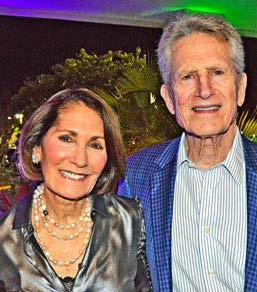
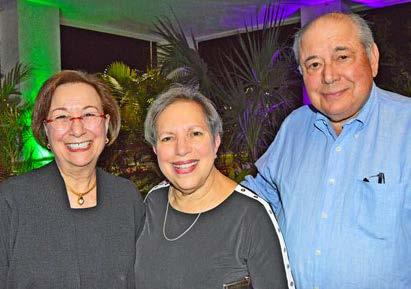
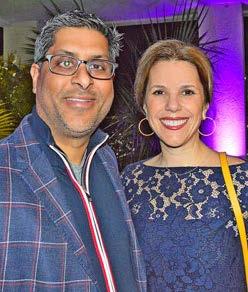
The Jewish Community Alliance was transformed into a Night in New Orleans, a lavish a air complete with Mardi Gras beads, Cajun food, stilt walkers, and a second-line parade.
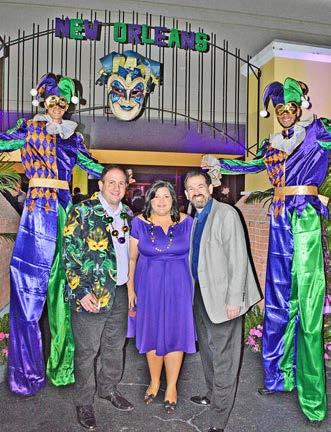
e annual fundraiser was held to bene t JCA’s scholarship services for children, families and senior adults in need because JCA never turns anyone away due to an inability to pay, said Lior Spring, JCA spokeswoman.
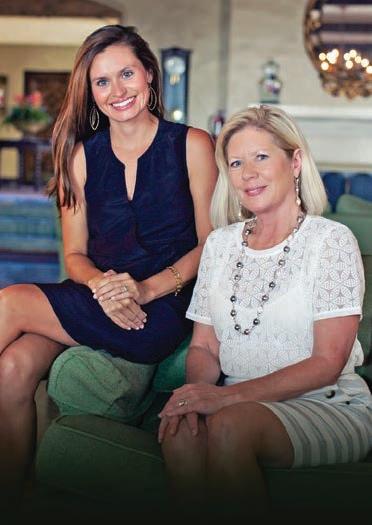
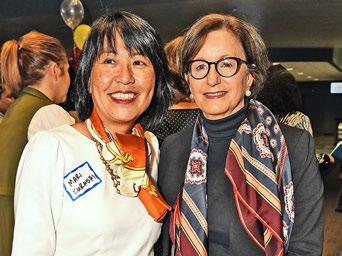
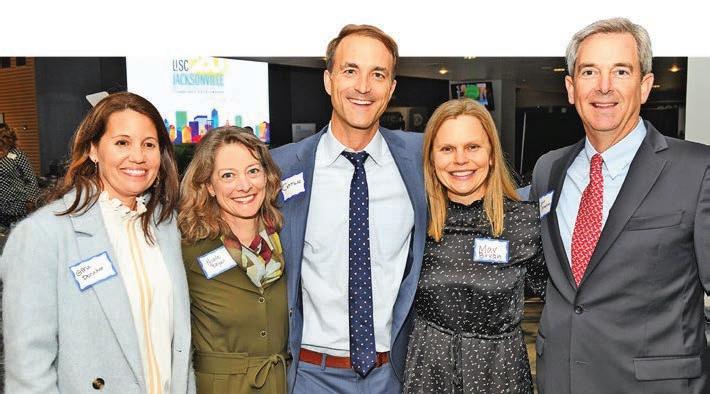
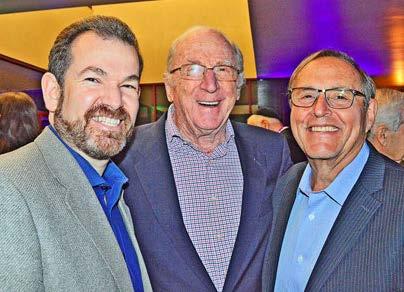
During the evening there was dinner, dancing and New Orleans-style entertainment provided by the Junco Royals jazz band.

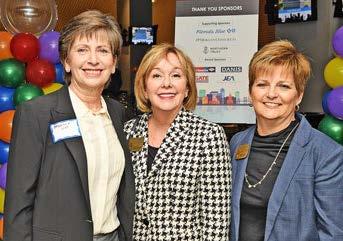


Except for the wait. Except for the smell. Except I’m not sure how sanitary everything is. Except I can’t book online. Except the menu is confusing. Except for the bathroom that’s also a utility closet. Except guys don’t feel welcome. Except for the random stu in the corner. Except the nail polish can’t be healthy. Except getting square nails when I asked for round. Except for



At its recent 20th Anniversary celebration, LISC or Local Initiatives Support Corporation Jacksonville announced ve Community Development Award winners during its most recent event at TIAA Bank Field’s East Club, Feb. 20.
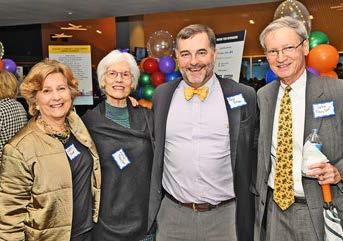
e awards, which recognize those that align best with the mission to partner with public, private and non-profit groups to transform distressed neighborhoods into good places to live, work, conduct business and raise children. e event also honored the 20-year leadership of J.F. Bryan, IV, who was instrumental in the organization’s founding and has served as the organization’s Advisory Board Chair since its inception in 1999. Awards given during the evening’s program were: Igniter Award: Hope McMath, Yellow House Gallery of Art; Building Block Award: Vestcor Companies; Power of Community Award (Collective Impact): Arlington 20|20; Champion of Main Street Award: VyStar Credit Union; and the EPIC Award: Barnett Tower, LLC.
“ e award winners are beacons of positive change in Jacksonville and collectively represent millions of dollars in economic impact,” said Janet Owens, executive director of LISC Jacksonville. “Furthermore, it is important to note that LISC Jacksonville—as well as
our partnerships with all of the past and present winners and nominees—would never have been possible if it were not for J.F. Bryan and his tenacity and commitment to bringing LISC to Jacksonville 20 years ago. We owe him a tremendous debt of gratitude.”
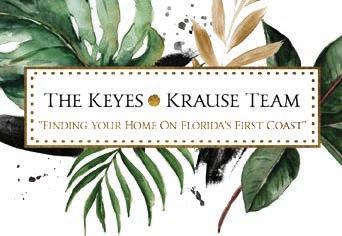
Bryan, a Jacksonville native, spearheaded the $1.25 million fundraising initiative that enabled LISC Jacksonville to open its doors. Under his leadership during the past 20 years, LISC Jacksonville has partnered with public, private and nonpro t organizations to invest nearly $500 million in Jacksonville’s urban core neighborhoods. ese investments have resulted in building or preserving 2,105 a ordable housing units and developing more than 1.7 million square feet of retail and community space, helping create more than 3,000 new jobs while reducing crime by 40-50% in Jacksonville’s urban neighborhoods.
For more information about LISC Jacksonville and details about the awards, visit www.lisc.org/jacksonville.



For more than 45 years, The Law Firm of Pajcic & Pajcic has specialized in representing individuals and families who have suffered a serious injury or wrongful death because of the fault of others.


Our former client, Bishop Wayne Wilson, wanted to do something for students who didn't have access to a computer.
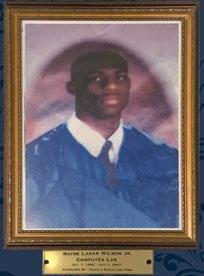
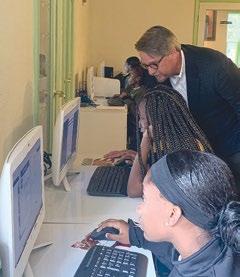
Pajcic & Pajcic decided to donate all the computers and printers so a computer lab could be set up in Wilson's church. The lab is named after Bishop Wilson's son, Wayne Junior, who was killed tragically more than a decade ago.
Pajcic employees climb the 19 flights to our offices four times a year for a prize and a little exercise. We decided to take the stair challenge to the extreme and join the American Lung Association "Fight for Air Climb." The Pajcic & Pajcic Peak Performers climbed up 36 flights in the Bank of America building downtown. That's 713 stairs to be precise. The Lung Association raised over $122,000 during the event.
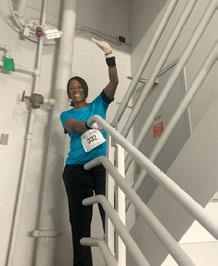
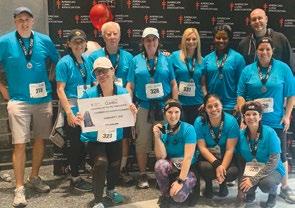






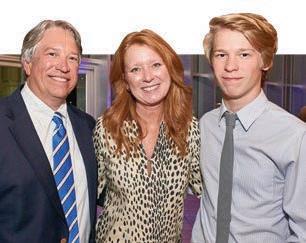

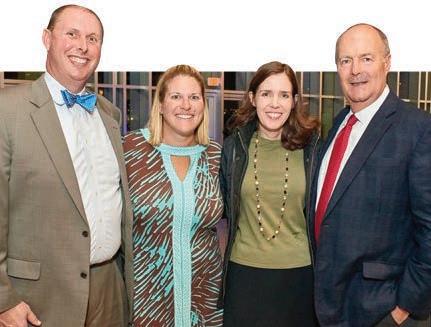
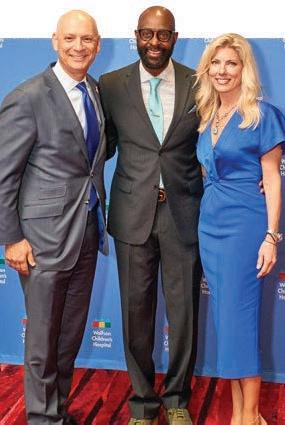





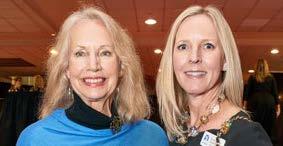
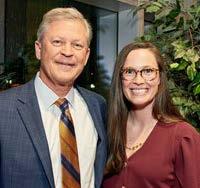
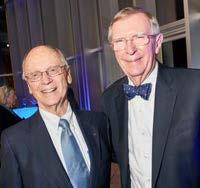
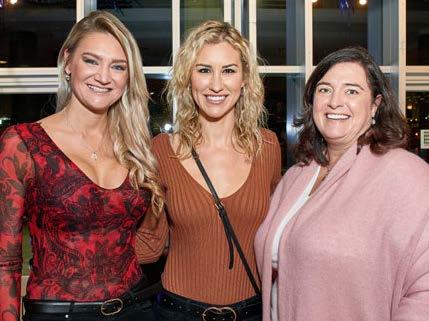
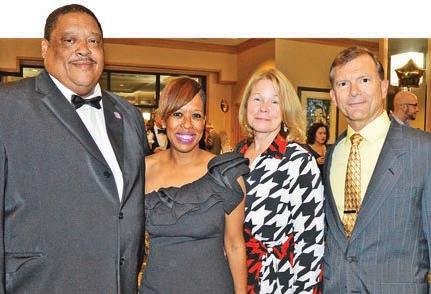




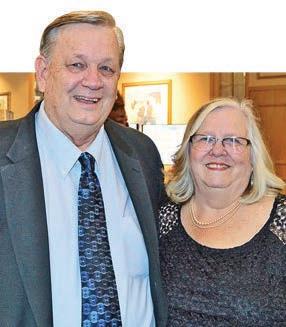
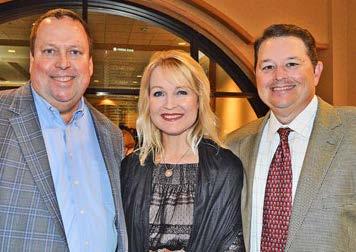

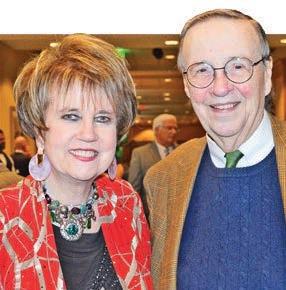
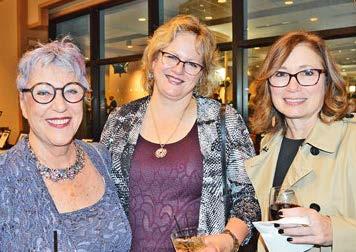
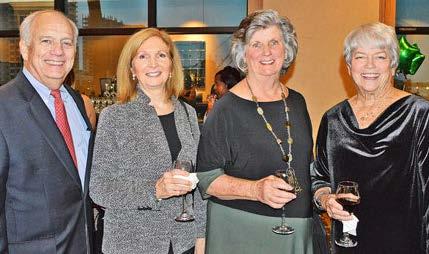
Over 30 years Communities in Schools has worked with Duval County Public Schools in assisting 110,000 students to reach their graduation goals. To celebrate, the nonprofit hosted its Toast to the Tassel gala at the Hyatt Regency Jacksonville Jan. 31. The evening included cocktails, a silent auction, and dinner, as well as the unveiling of new student-focused videos and an interactive gallery experience. “Tonight is exciting because we are able to celebrate 30 years of service in Duval County Public Schools,” said CEO Leon Baxton, who has served the Communities in Schools agency for 28 years.
Crowds gathered to hear Hall-of-Fame wide receiver and three-time Super Bowl champion Jerry Rice relay tales from his storied career Feb. 25, as the final speaker in this year’s Florida Forum speaker series, sponsored by the Women’s Board of Wolfson Children’s Hospital. Funds raised through the forum go to help build and equip an improved neonatal intensive care unit at Wolfson. Winner of three Super Bowls during his 15-year career with the San Francisco 49ers, Rice also played three seasons with the Oakland Raiders and a season with the Seattle Seahawks before retiring in 2005. He was elected into the Pro Football Hall of Fame in January 2010.




















Things will be coming up roses for Ascension St. Vincent’s Mobile Health Outreach Ministry thanks to those who attended the St. Vincent Foundation’s annual Red Rose Ball Feb. 21. Guests sparkled in glittering gowns and elegant black-tie attire during the River Club event, which featured a progressive dinner, live music and dancing. For nearly four decades, the gala has supported di erent programs at the medical complex. This year’s recipient, the mobile ministry, provides preventative and acute medical care to low-income, uninsured, and underinsured individuals and families throughout Northeast Florida, through a fully sta ed, doctors’o ces-on-wheels to neighborhoods and areas where services are most needed.

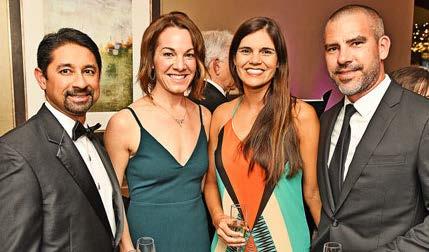
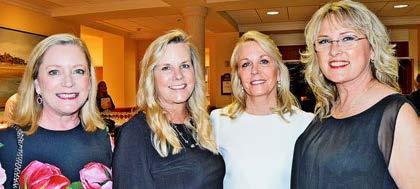
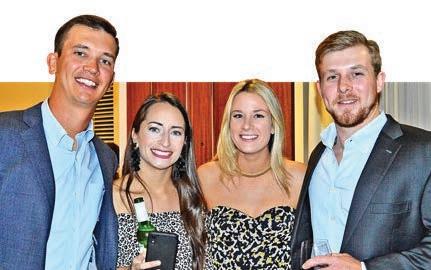
In 10 minutes, HEAL pulled in $122,000 as a result of its “Bid from the Heart” live auction segment during the nonprofit’s annual Valley of Dreams gala Feb. 20 at the Ponte Vedra Inn and Club. Triggering the emotional impact were six to eight nonverbal autistic children, who rode among the crowd on trikes that were the focus of HEAL’s fundraising e ort this year. So far HEAL has provided 100 tricycles to public schools in Duval County and has plans to present two trikes to each school in Northeast Florida. “It was so wonderful for people to see how these kids can ride a bike when they normally wouldn’t be able to balance on two wheels,” said HEAL Founder Leslie Weed.


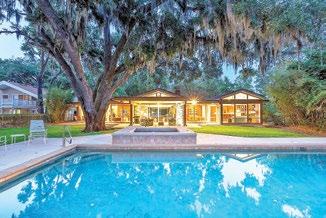



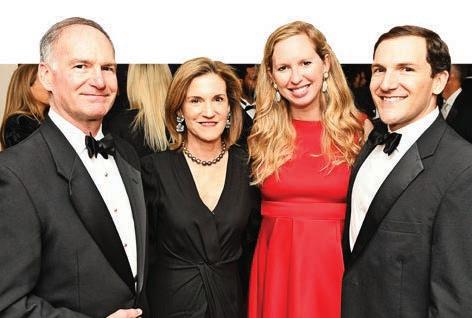
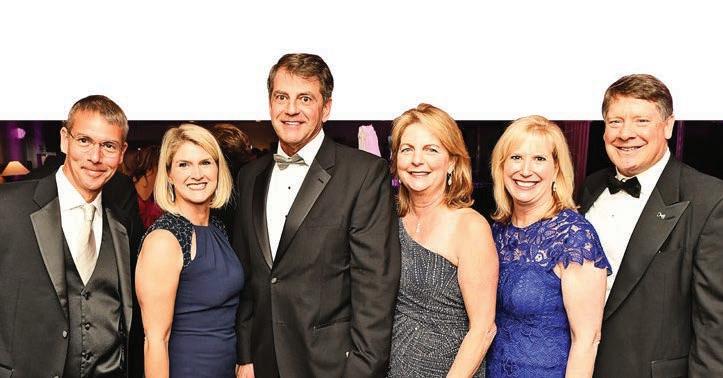
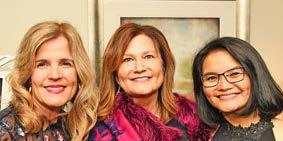

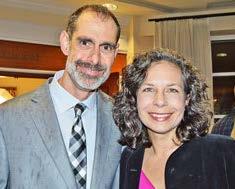
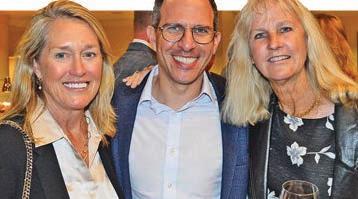
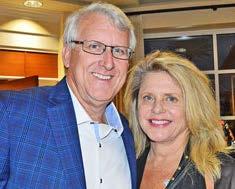
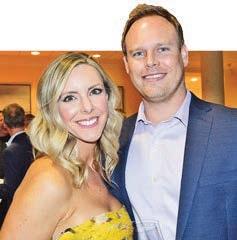
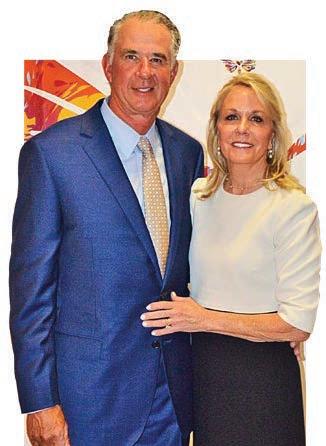
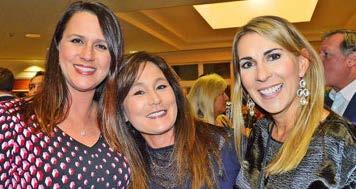 Monica Pajcic with Jen McGarity and Cindy King
Monica Pajcic with Jen McGarity and Cindy King



Loss



This set of RECHARGEABLE HEARING AIDS plus one set of Bluetooth cell phone compatible HEADSET STYLE HEARING AIDS AS LOW AS $999

VALUED AT OVER $4000 NATIONWIDE


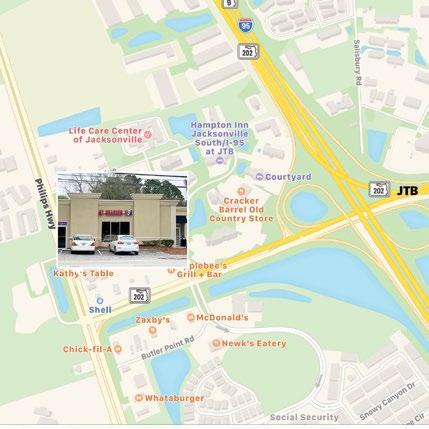
THE FIRST 100 PEOPLE to order a set of OTE hearing aids for as low as $899 will also receive a 2ND SET of our Bluetooth cell phone compatible hearing aids FREE OF CHARGE.


Hear much more. See much less.
We guarantee complete satisfaction! 30 DAY TRIAL




We are local hearing aid specialists that can help you achieve your best you. We go above and beyond to help our patients with easyto-use and affordable hearing aids. We charge a fourth of what our competitors do and we want to give that discount to you. We provide quick, in-house solutions and are local – so we are always here when you have questions.




CHANGE YOUR LIFE with better hearing in 2 HOURS OR LESS. Call us at (904) 612-6580 for a FREE no-obligation hearing consultation and see how EZ HEARING U S A can help you!

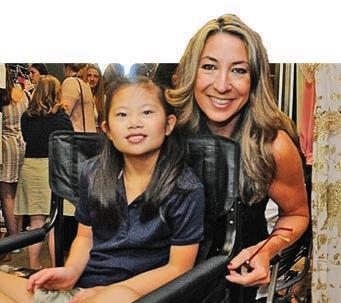

Fashion mavens, kid-loving community members and North Florida School of Special Education parents, students and staff gathered the day before Valentine’s Day for a special fashion show full of love for beautiful clothes and beautiful children.
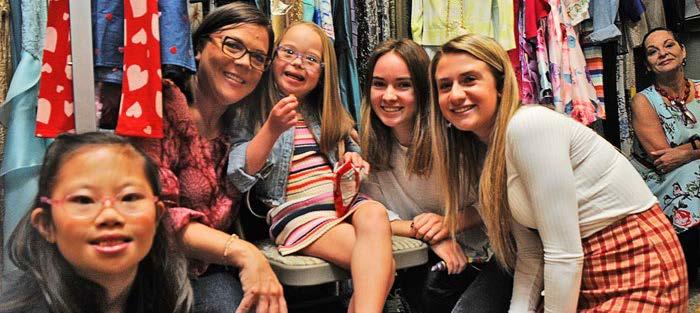
Heart of the Runway attracted scores of patrons who dined on elegant fare in the Mediterranean-style courtyard of Linda Cunningham Designer Boutique in San Marco, while the school’s students and their adult partners modeled singular designs, all in an event aimed at raising money for the school.
Community members donated makeup and hair design services to get the models ready for the show and the kids got to take a break and spend some time hanging out with each other, too. Jacksonville Jaguars kicker Josh Lambo also attend the event.
“He’s such a great friend and supporter of the school,” said Jessica Waugaman, school director of advancement. “He doesn’t do it for publicity, he comes out and hangs out with the kids.”
Heather Crawford of First Coast News emceed the show and reverse-inclusion
club, Bolles Buddies, also attended to support the children. Reverse inclusion is a technique in which typical students and adults visit the school and immerse themselves in special education classrooms. Reverse inclusion also helps the students and participants, allowing both to establish friendships that extend outside the classroom.
“ is exposes others to the magic that takes place in the schools,” explained Kit omas, director of annual and capital campaigns for the school.
Beth Mueller, head of the North Florida School Parent Service Organization, was there with her son Nick, 19, who helped at the event.
“He was here last year, and he loves it,” she said. “He loves to talk to the buddies.”

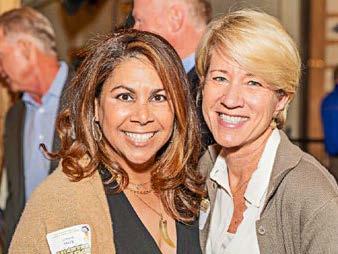
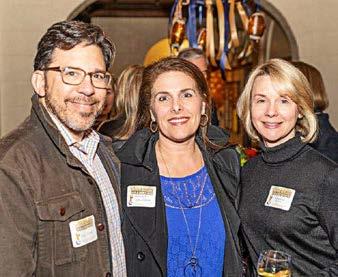
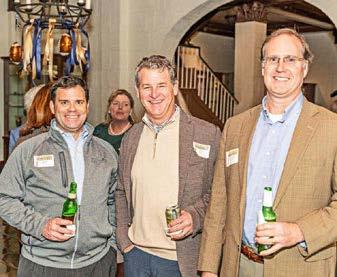
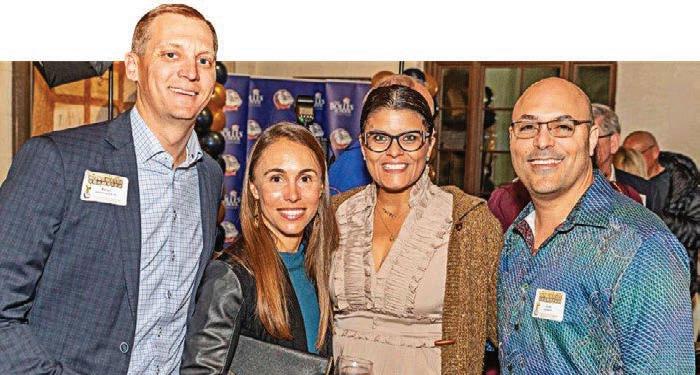
e Bolles School hosted its 39th Annual Super Bolles “party of champions” Jan. 30. e festivities were held to celebrate and thank the school’s Agnes Cain Painter and Glynlea and Heritage Society donors. e event was held in Bolles Hall and included tailgate fare and live music with half-time remarks from President and Head of School Tyler Hodges.
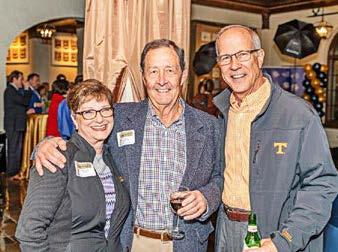
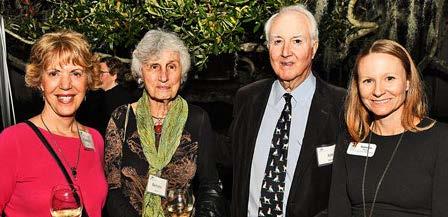
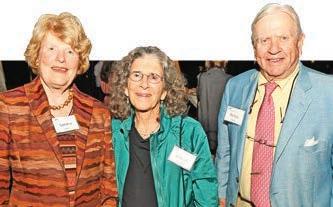
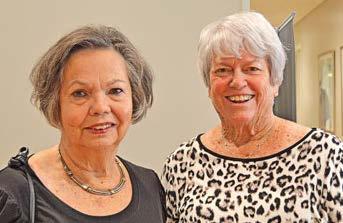
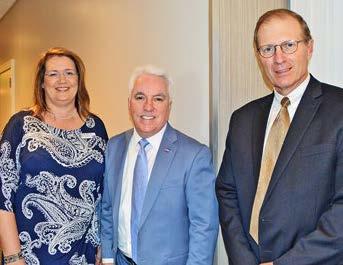
e North Florida Land Trust (NFLT) welcomed guests to the nonpro t’s annual meeting appropriately held at the Cummer Museum of Art and Gardens in Riverside, as sprawling oaks and expansive gardens were a tting backdrop for the organization tasked with preserving wild lands and tracts throughout North Florida. As the leading advocacy group for land preservation and wildlife habitat throughout Baker, Bradford, Clay, Columbia, Duval, Flagler, Nassau, Putnam, St. Johns, Union and Volusia Counties, the organization continues to protect Florida’s great outdoors. The group celebrated major milestones in conservation in 2019, reflected on the past 20 years, while also looking ahead to the next 20 years.
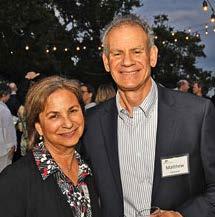

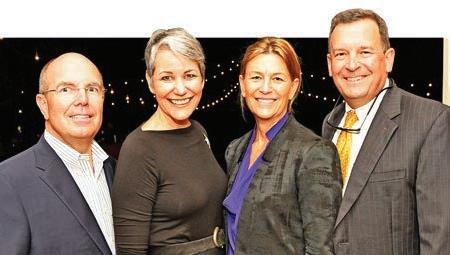
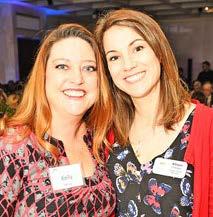
At the annual meeting, NFLT leaders recognized donors, volunteers and advocates for their dedication and commitment to the mission, which included awards for members of the McQuilkin Society. The award honors major donors to the land conservation organization and pays tribute to NFLT founder, Bill McQuilkin. Inductees were Kathi Chalk, Andrus and Natalie Healy, Bob and Cynthia Kastner, Connie and Ken McDaniel, Chuck and Diane Newman, Sally and Tony Perez, Matthew Rapp, Sandra and Richey Smith, Elizabeth Strawbridge, as well as Ben and Louann Williams. The event took place Feb. 19, 2020.
Cancer patients now have a free place they can call home when they come to Jacksonville for treatment with the opening of the Richard M. Schulze Family Foundation Hope Lodge on the Mayo Clinic campus. The American Cancer Society celebrated the launch of what is its 34th residence within the United States for cancer patients, their families and caregivers with a celebratory ribbon-cutting Feb. 4.
Gathered at the ceremony were guests, philanthropists and others interested in the mission of the new residential facility, which will allow patients to stay for as long as their treatment lasts.

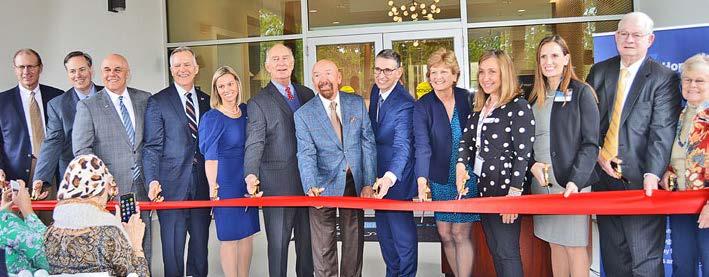
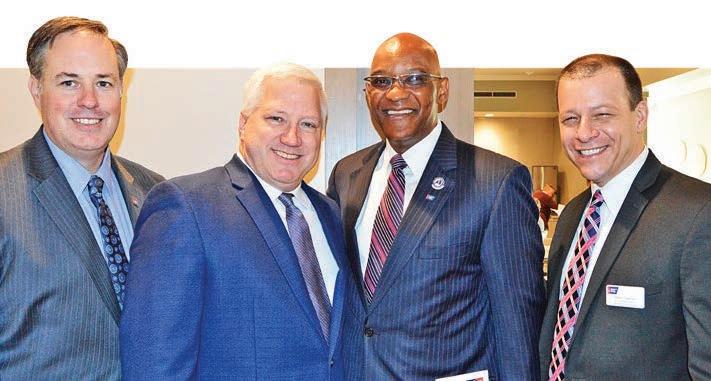
Speaking at the event were Gary Reedy, CEO of the American Cancer Society, Pat Geraghty, president and CEO of Florida Blue and a member of the American Cancer Society board of directors, Charlie Tomm, chair of the Hope Lodge Capital Campaign, Dr. Kent Thielen, CEO of Mayo Clinic, Florida, and the lodge’s main benefactor,
Richard M. Schulze, who has helped to build ve Hope Lodges around the country. Also speaking was Erin Tusa, a Hope Lodge guest. Also in attendance were some members of the lodge’s capital campaign committee that included Carter and Cheryl Bryan, Sheila Collier, George Egan, Syd Gervin, Dick and Marcia Morales, Gil Pomar III, Susan and Jay Williams and Carol Tucker.
“ is is a very special place in the heart of our family,” said Schulze, noting that he lost his wife and the mother of his children 18 years ago to mesothelioma. “ ere were many trips we had to take, and there were many challenges that surrounded all the treatments that she had to go through. We had an opportunity in that process to really see what people go through when they’re enduring treatment. It just became obvious to us that if we could add some value to the lives of those that are going through that process, it would mean so much to our family and in remembrance to my late wife.”
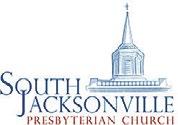









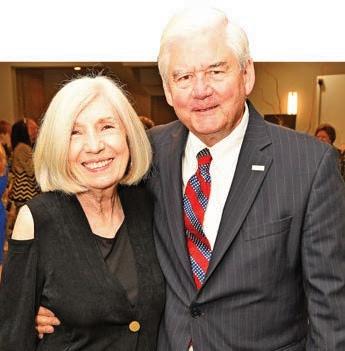





e City Rescue Mission held its 5th annual Di erence Makers banquet to honor those that contribute to hope, healing and change for Jacksonville’s homeless. By way of considerate donors, faith-based actions of sta , volunteers and leadership, countless lives have been changed and transformed.
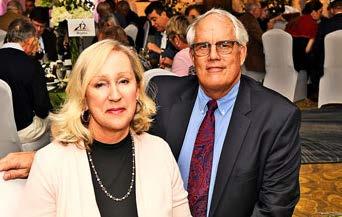
e event, held at the Lexington Hotel and Conference Center, Feb. 18, recognized Jeannie Blaylock Lyle, Ray and Richard Martin, as well as Jerri Lynn and Maurice Tedrick for their contributions and consideration of the mission. e evening also recognized New York Times bestselling author, Charles Martin, who dives deep into his faith while writing compelling stories that resonate with readers from all walks


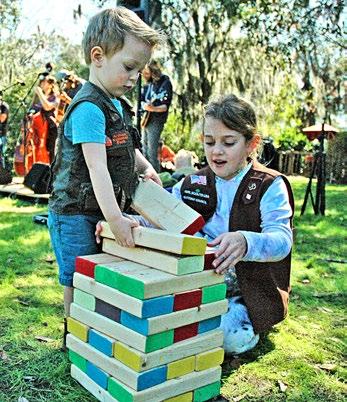
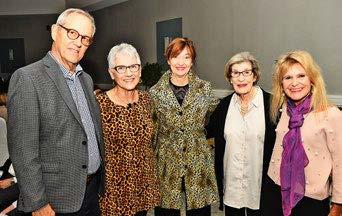
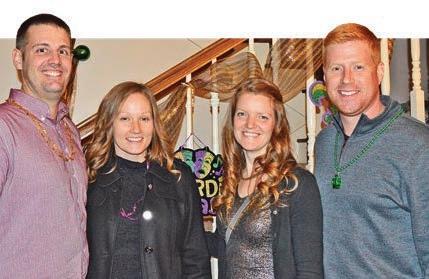

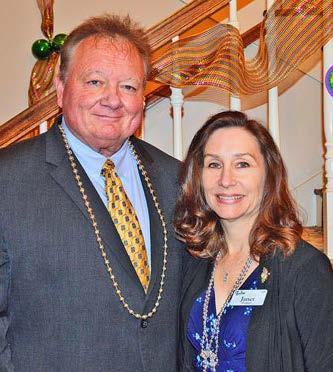
Mardi Gras beads, funny hats, and colorful masks were the attire of choice for nearly 200 guests during Friday Musicale’s annual fundraiser Feb. 8 in Riverside.
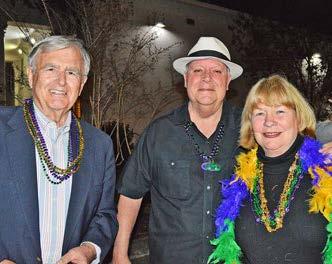
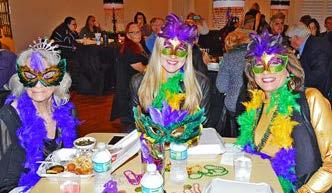
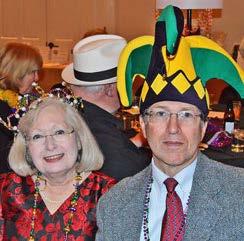
of life. Martin is a local Jacksonville native and was on-hand locally to sign books and inspire others to pursue their dreams.
e City Rescue Mission’s goal, through various programs is to transform lives of the homeless and needy, serving them through the love and compassion of Jesus Christ. More can be found about CRM and the opportunities to serve as the organization celebrates 75 years can be found by visiting www.crmjax.org.
The event was reminiscent of a grand picnic as guests selected dinner from two food trucks and then bounced between two venues – Friday Musicale’s main auditorium and L’Engle Hall next door – for their musical pleasure. Featured entertainment for the evening was J.B. Scott’s Swingin’ All Stars band and Junco Royale. The evening also included dancing, dessert, and a silent auction. Money raised from the event benefited Friday Musicale’s free-to-the-public concert season, which is celebrating its 130th year, as well scholarships to aspiring young musicians and community outreach to local schools.









e patio at Southern Grounds in San Marco was lled with St. Nicholas residents as they enjoyed a meet and greet social courtesy of the St. Nicholas Area Preservation Society (SNAP) Feb. 13.


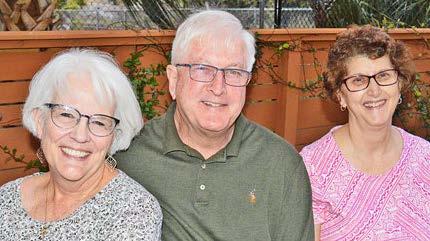
During the mixer, new residents and old got to know each other as they chatted about the neighborhood and new initiatives SNAP is bringing to the area including new lighting in Palmer Terrace Park and new street signs along Atlantic Boulevard. Seen among the crowd were SNAP President Jay Harrington and Vice President Bubba Miller.




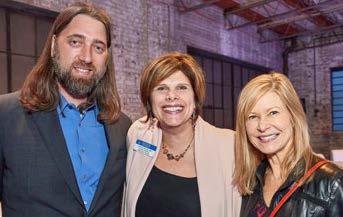
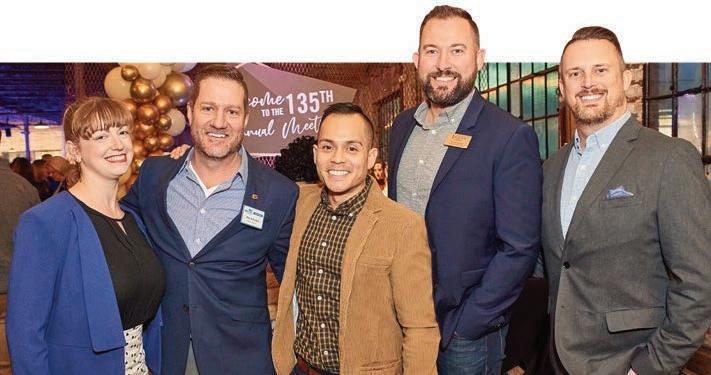

e JaxChamber celebrated its 135th annual “meeting” with an event that resembled an anniversary party.
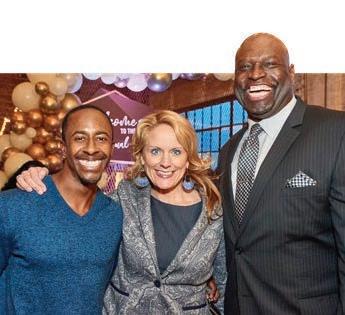
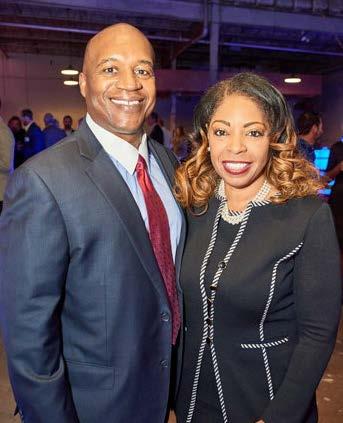
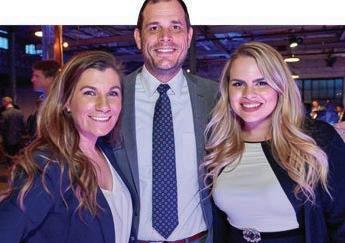
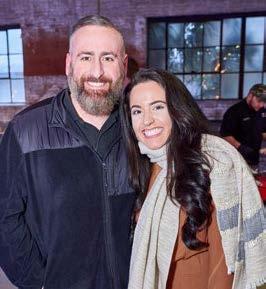
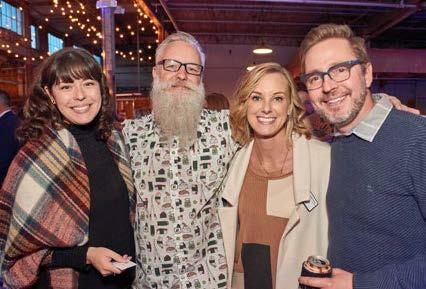
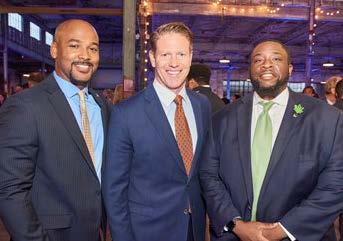
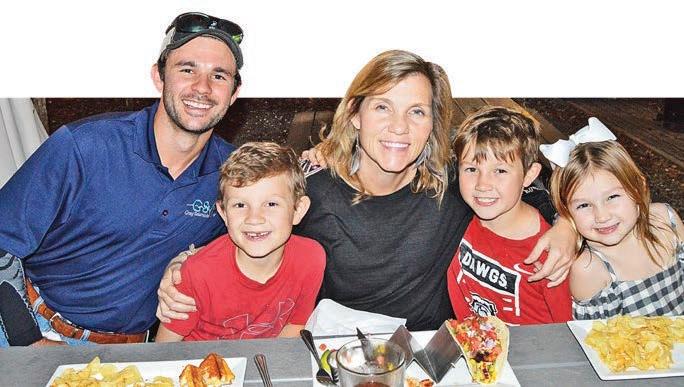
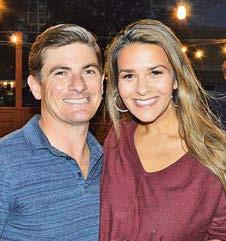
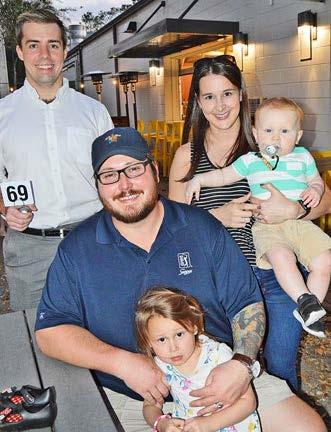
e landmark occasion took place at the Glass Factory in the Rail Yard District and included cigar rolling, a ball cage, casino games, dancing and food from 3 G’s Grilled and Soul Food, Anthony’s Gourmet Catering, Bono’s and Pastiche Catering, Catered Cocktails, Condaxis Co ee and Tea, Cooper’s Hawk Winery and Restaurant, Exotico Co ee Company, House of Leaf and Bean, Ida Claire, Jacksonville Farmers’ Market, Monroe’s Smokehouse Bar-B-Q and Catering, Prati Italia and Town Hall, Ruth’s Chris Steak House and Seasons 52.
e Chris omas Band provided live entertainment.



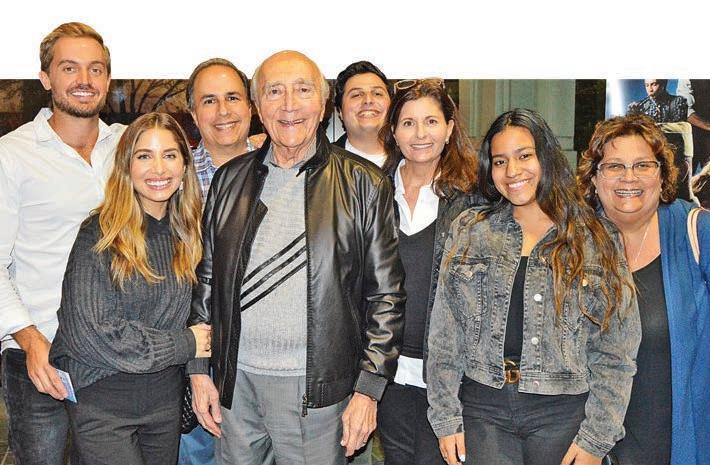
It was a evening of celebration as major donors, former and current Jacksonville City Council members, Duval County Public School leaders, local school board members and parents joined local arts connoisseurs at Douglas Anderson School for the Arts 34th Annual Extravaganza, Feb. 7 at the Times Union Center for the Performing Arts.
The event offered DA’s elite class of art students the opportunity to showcase their talents. Dance, vocal, creative writing, orchestra (guitar, chamber, wind instruments) cinematic arts, musical theatre, and jazz students displayed their best stuff as they performed before the packed house.
Gilchrist Berg and Sen. Audrey Gibson served as honorary chairs joining Event Chair Gary McCalla, who has enjoyed the role as the event’s top patron for the past 15 consecutive years.
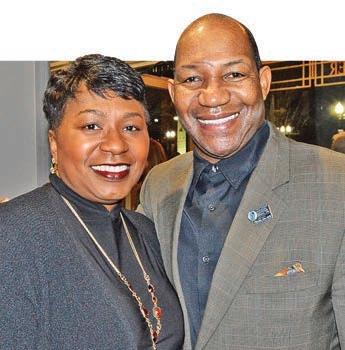
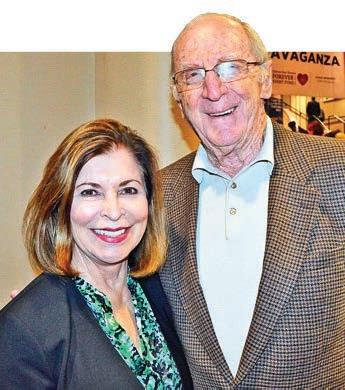
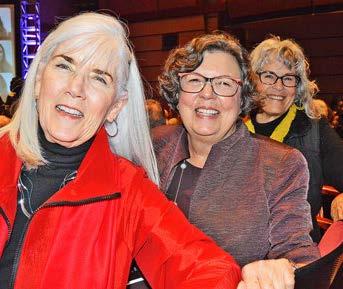
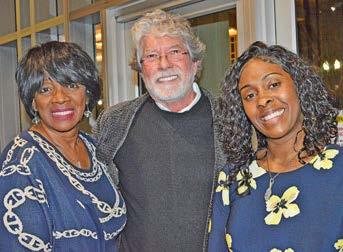
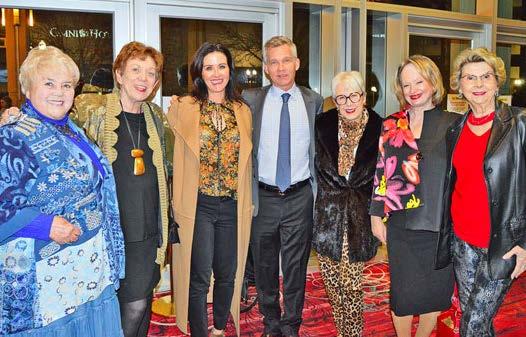
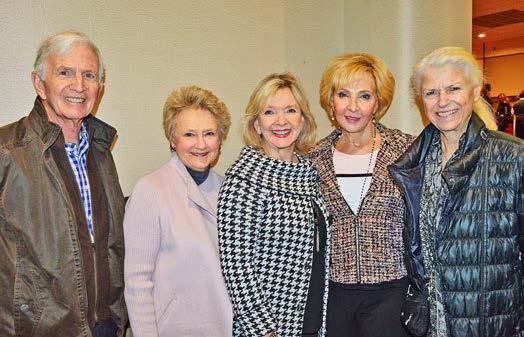
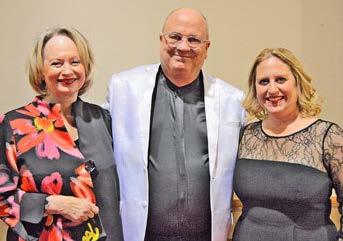




Our ER care teams work quickly to listen and understand your needs and provide compassionate care. Because we’re more than emergency care, we connect you to the follow-up care that’s right for you. When it comes to big emergencies like cardiac care, trust your care to the right specialists. Because we’re more than emergency care, we connect you to the follow-up care that’s right for you.


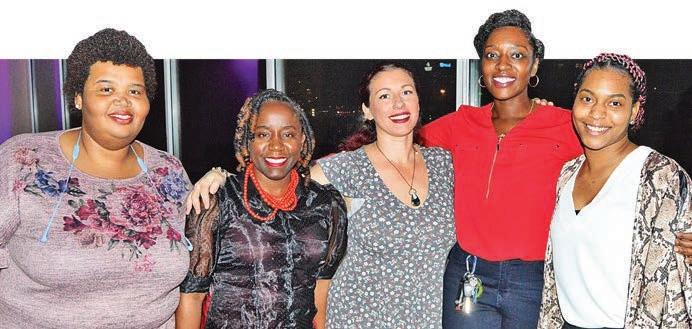
It was a game-changing, life-enhancing experience for the more than 155 working women who attended the 3rd Annual Women at Werk Empowerment conference at the Lexington Hotel on the Southbank, Jan. 10-12.
The 3-day weekend offered the women the opportunity to meet and greet each other during a “High” Maintenance NetWERK Mixer, the Women at Werk Empowerment Conference, and “The Big Give” Community Service event, which benefitted Hubbard House.

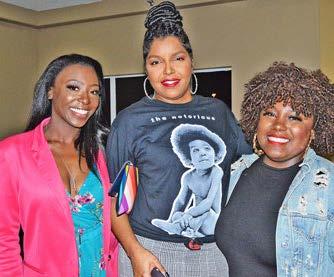
e “wellness” weekend o ered participants a chance to listen to dynamic speakers, network, enjoy brunch, shopping, freebies, and to participate in community service. As a global woman's networking event, the conference was designed to empower, educate, and equip women from diverse backgrounds by creating a platform for professionals, entrepreneurs, and all women to better set an example in their communities. Women at Werk partnered with Hubbard House as part of their community service initiative.

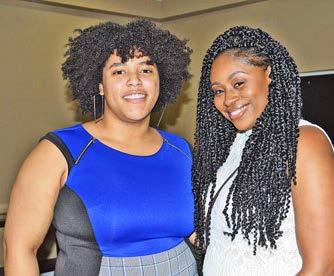
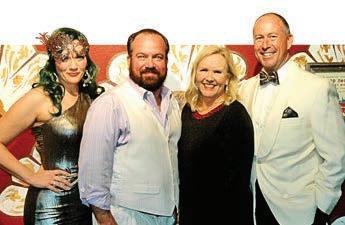
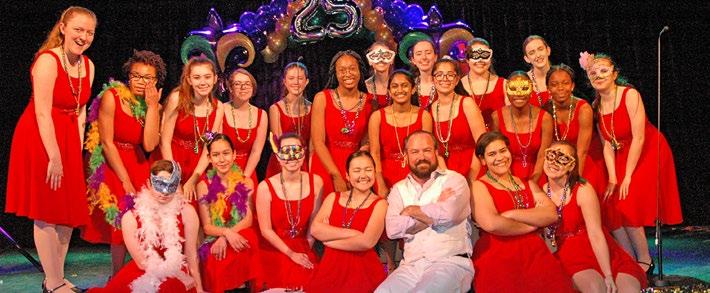
Scores of guests were dazzled throughout the night at the Jacksonville Children’s Chorus (JCC) 25th anniversary Mardi Gras party at the Ponte Vedra Concert Hall Feb.15. e event drew partygoers from throughout Northeast Florida, who enjoyed delectable Mexican-style hors d’ouevres, bid on a long list of services and prizes in a silent auction and were entertained by the chorus, chorus alumni and entertainment and aerial arts from Bittersweet Studios, among others.
JCC alumni, now adults, warmed up the crowd with the first performance, followed later by the chorus itself. A tarot card reader kept guests entertained, as did Bittersweet stilt walker Kayla Thornton. Dinner was served and Jacksonville Sheriff’s Office Assistant Chief Lakesha Burton headed up a live auction, with proceeds from the event and the live and silent auctions going to fund the program.
“ e importance of this fundraiser is that we are raising money for scholarships and ongoing programming,” explained JCC President and Artistic Director Darren Dailey. “ is event is becoming increasingly important to the funding of the children’s chorus.” Every year, hundreds of local children participate in the chorus, which was founded in 1995.
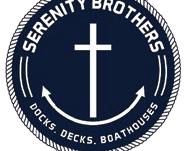
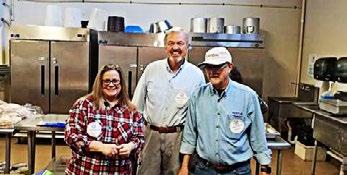
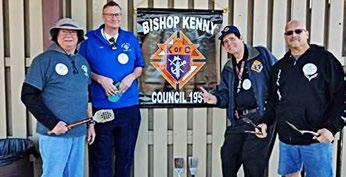
e Bishop Kenny Council of the Knights of Columbus prepped and cooked lunch for the students and faculty of Assumption Catholic School for Student Appreciation Day and Catholic School Week, Jan. 28.
The Aging True Home Health Agency is ACHC accredited and Medicare certified, and offers a holistic and comprehensive system of in-home senior care. Our mission is to ensure the continuity of care and coordination of services with our clients and their physicians.






We preserve our clients’ independence and help them reach their optimal health potential. @AgingTrue




In a quest to see who could offer the tastiest and/or spiciest chili, with some offerings certain to set off five alarms, representatives of the Young Lawyers Section of the Jacksonville Bar squared off to see which law firm might be judged the winner during the 12th Annual Charity Chili Cookoff at Riverside Arts Market Feb. 15.
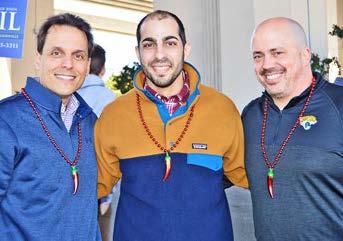
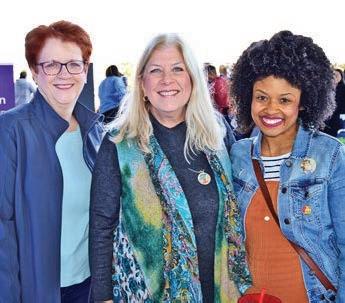
During the event, which exclusively bene ted Clarke Schools for Hearing and Speech, members of the public roamed about tasting various versions of the Tex-Mex cuisine from 45 di erent law rms while 12 or more judges sampled each one’s specialty and would later proclaim a winner. To keep things fair and legal, the judges, who wore Mardi Gras beads with a chili charm around their necks, actually hold court as judges in Duval, Clay and St. Johns County. Included among the jurists were Judge John Guy, Judge Steven Whittington, Judge Adrian Soud, Judge Anthony Salem and Judge Collins Cooper.
Several representatives from Clarke Schools for Hearing and Speech were also on hand including Clarke Co-Director Cynthia Robinson, Melanie Jensen, Judy Wingate, Aisha Doggette, Stacie Wilkinson and Kevin Copeland. Jensen said she was thrilled that the young lawyers’ group had selected her school as the beneficiary since she had learned last year’s event raised nearly $18,000. e goal of the event was to raise approximately $20,000 from corporate sponsorships, donations and the law rms, said event organizer Kayla Haines of Smith, Hulsey & Busey. Members of the public sampled all the chilis for free.
Nearly 60 guests became much better acquainted with Jacksonville landmarks downtown and in San Marco as they competed in a photo scavenger hunt fundraiser Feb. 23 for Helping WIN, a nonpro t that supplies emergency funds to women in need. Based out of the Grape and Grain Exchange in San Marco, seven teams comprised of eight to 10 players were ferried around in limousines donated by Barrs Transportation while seeking to interpret clues in an elaborate scavenger hunt concocted by Alan Howard and his wife, Helping WIN Executive Director Gwen Gallagher-Howard to raise money for Gallagher-Howard’s nonprofit. Each team visited as many as 30 landmarks, earning points throughout the process, to subsequently raise $10,000 for the two-year-old nonprofit that supplies emergency cash assistance with dignity to women in need.
Since its inception, Helping WIN has funded 61 grants by assisting nine partner agencies, with 80% of its grants focused toward housing assistance.

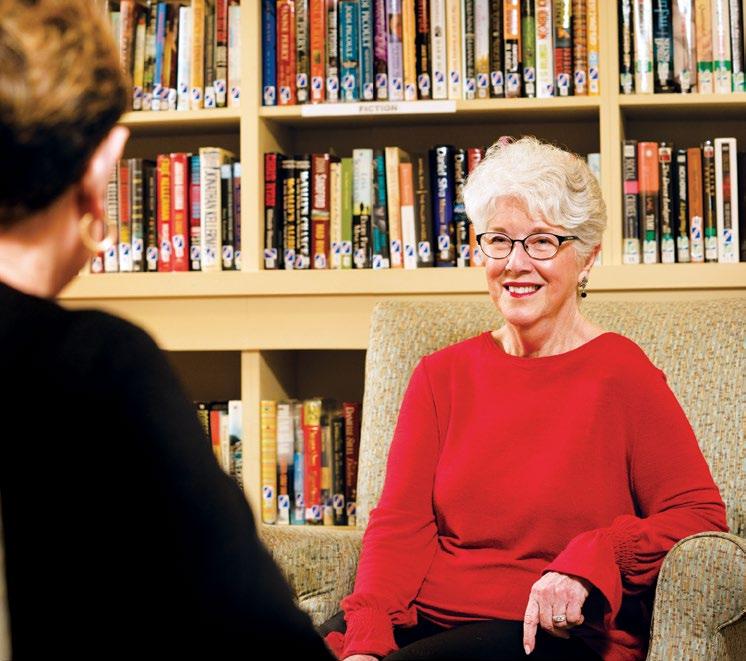
Winning the event was the team Ain’t Too Proud To Buy Clues led by former San Marco resident Ryan Schwartz. Schwartz’s team included Kim Kristo of Riverside, Kelly Kristo of San Marco, Mary Calcote of Avondale and Dan Stocker of San Marco.
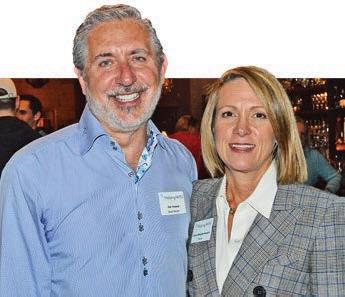
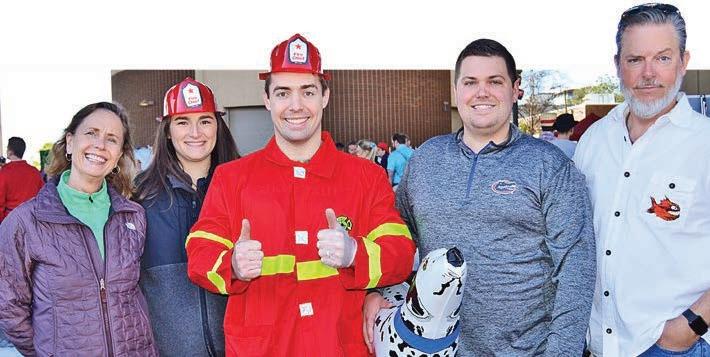
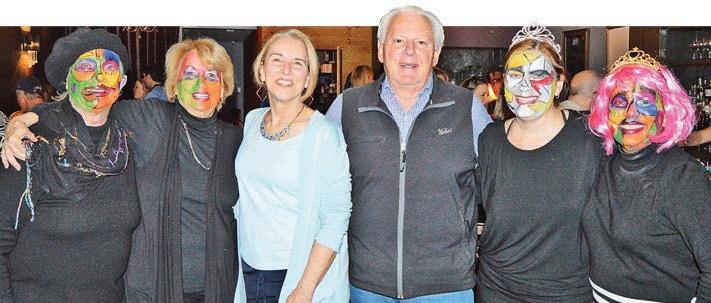
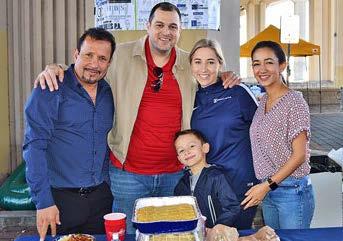
“It was so much fun,” said Kim Kristo a er the event.
e a er party included drinks in the Grape and Grain’s back room and refreshments catered by Biscotti’s and a ra e.






Michele Zavon Steinfeld’s life is steeped in San Marco history.
She was a member of Wolfson High School’s rst graduating class in 1966 and assisted her mother in opening the rst Shoe Rack on Hendricks Avenue in 1975. She was also a charter member and ambassador for the JCA (Jewish Community Alliance), an organization that she has encouraged many of her San Marco friends to join.
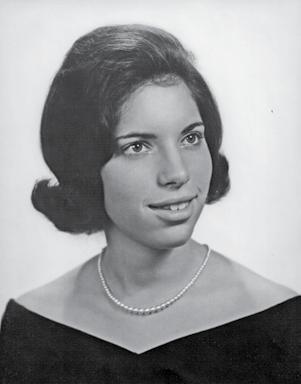
A bubbly, outgoing promoter of all things San Marco and JCA, Steinfeld spent her formative years, along with her younger brother, David, growing up on Lakewood Road in Colonial Manor. Born to Molly and Saul Zavon, both Michele and David inherited their parents’, love of sales and building friendships, which, when they grew older, helped greatly with the family’s wholesale leather company, located in downtown Jacksonville at 1076 West Adams Street.
had to share the exciting news with her friend, Betty Pelz. When Steinfeld called Pelz, her mom said that she wasn’t available because Klausner was there and had brought her a box of candy, too.

“I received my rst box of Valentine’s candy and my rst heartbreak all within an hour,” recalled Steinfeld.
While in elementary school, Steinfeld’s mom, along with her friend, Becky Bromberg, opened a little girls’ clothing store called Clothes Closet that was also located in the Flamingo Shopping Center. Although Steinfeld’s mom passed away in 1992 at the age of 79, Bromberg just celebrated her 101 birthday and lives at the River Garden Senior Services facility where Steinfeld serves as membership vice-president for the River Garden Auxiliary.
A er graduating from sixth grade, Steinfeld’s friends and classmates found themselves separated for the rst time because they were assigned to attend either Landon or DuPont High Schools, depending on where they lived. Steinfeld was assigned to Landon, and she recalled many wonderful times with her Landon friends in San Marco. “Before school, many of us would meet at Mim’s Bakery where my favorite breakfast was a heated nut Danish with a glass of milk,” said Steinfeld. “A er school, the place to be was Stand ‘n Snack for chili hotdogs and pickles.”
Fortunately, she and her friends were destined to reunite when the new Wolfson High School was built and opened in 1965. Landon and DuPont became middle schools, and Steinfeld’s friends from the neighborhood were back together again, sharing teenage angst and secrets. “It was exciting for us as we got to pick out Wolfson’s colors and mascot,” she said.
About 50 years ago, Colonial Manor was an idyllic community. It was a simpler time, one where all the kids in the neighborhood were close playmates, attended Hendricks Avenue Elementary School together, and parents did not need to lock doors.
“Our neighborhood was wonderful with lots of children, friendly neighbors, and the famous duck pond on San Jose,” said Steinfeld. “Some of the girls would get together and play kick ball in the street until it was dark.”
As a youngster, Steinfeld took dance lessons – tap, ballet, and then ballroom – at Earl Bagley’s Dance Studio in the Flamingo Shopping Center on Hendricks Avenue where nearby neighborhoods would get their groceries and household needs. It just so happened during ballroom lessons that Steinfeld often would be matched-up with Steve Klausner who also lived on Lakewood Road.
Her sixth grade Valentine’s Day was one she’ll never forget. Klausner brought her a box of Valentine’s candy and, of course, she
In the late 1960s, San Marco Square included White’s Book Store, the movie theater, a bowling alley, Bolin’s (lady’s clothing), the Little eater (now called eater Jacksonville), Geisenhof’s Gi store and the historic fountain in the middle of the square. “When I look at those lion statues,
I like to think they were inspired by the Landon lions,” said Steinfeld with a grin.
Steinfeld recalled that she and a few girl friends would leave Wolfson for lunch by getting a pass from the study hall teacher and say they’re going to the library, but, of course, heading to the library really meant going o campus to Burger King. She remains close with her Burger King buddies, and today they still meet for birthdays or at least once a year for dinner. “Every time I see them it seems like we just met last week, which is one way to know who your friends are,” she said.
Steinfeld grew up during the time when middle-school-aged girls were required to study home economics and boys attended shop class. She laughingly recalled a sewing disaster where the pattern for the top of a two-piece outfit got mixed-up with that of another seamstress and her top ended-up being a sleeveless crop-top on one side and a cap sleeve tucked-in shirt on the other. “I didn’t have the nerve to ask the teacher for help until it was almost completed, but we did eventually straighten it all out,” she remembered.
Steinfeld also recalled feeling apprehensive watching atbed trucks drive transport missiles down Hendricks Avenue in October
BY CHRISTINA SWANSON RESIDENT COMMUNITY1962. “It was during the Cuban Missile Crisis and it was scary when one of our neighbors on the east side of Hendricks had a fall-out shelter built,” she said. “In school, we practiced evacuating the building and walking over to the railroad tracks to wait for a train to take us to St Augustine.”
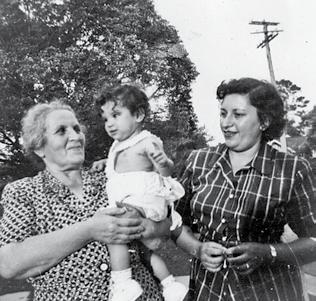

A er graduating from high school, Steinfeld took accounting classes and earned an Associate of Arts degree in the rst graduating class of Florida Junior College, Jacksonville. One of her electives was creative dance, and when the teacher suggested they enter the school’s talent show, their dance group ended up winning best creative dance, while also acing their “ nal exam.” She later took a job in the purchasing department of Blue Cross/Blue Shield (BC/BS) Insurance Company, which is still on Riverside Avenue. During that time, she met her future husband, David Steinfeld, at a singles party, and they still have the shirt he wore when they rst met, “even though it doesn’t t now.”
Recalling their rst date, Steinfeld said they went to see a movie at the Florida eatre on Forsyth Street and then to Leb’s for a snack. David thought it was kind of unusual that she wanted matzo ball soup instead of a dessert, she said. “He should have known right then to get up and leave,” joked Steinfeld. She got her soup, but David wanted her to try a dessert she’d never had before, cheesecake, “and it’s been downhill ever since.” “I can still see the fork coming towards me,” she laughed.
While she was working at BC/BS, she and David got married. It was around this time that her father unexpectedly passed away. A er his death, Steinfeld’s mother decided to do the one thing she always wanted to do – open a shoe store. It ended up being the Shoe Rack on Hendricks Avenue near the elementary school.

CONTINUED ON PAGE 35


Steinfeld le insurance to assist her mother as the main salesperson with the rst of her three sons, Shane, in tow. Meanwhile, her brother, David, helped with the overall purchasing and running of operations.
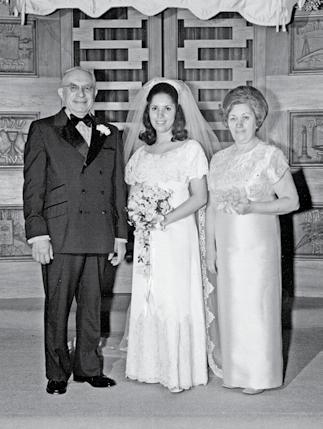
Two years later, Steinfeld’s second son, Kyle, was born, and Steinfeld continued to sell shoes, volunteer with non-pro ts, her synagogue and, eventually, her children’s school. By the time her third son, Jerad, arrived, her brother, David, had opened a second Shoe Rack at the Town and Country Shopping Center and had moved the rst store to the little yellow house on St. Augustine Road across from the Yum Yum Tree.

Unfortunately, competition of the “big box” stores and the inability to get the good deals they were used to, along with her mother’s declining health, caused both Shoe Racks to close after 18 years. Steinfeld worked a few years in Maison Blanche’s shoe department at the Avenues Mall before her family moved to Milwaukee, Wis., in 1994, following her husband’s career, for “what seemed like nine consecutive winters.”

Missing the selling biz, Steinfeld worked part time for Marshall Fields. She said she felt like it was her store because she enjoyed learning about all the merchandise and could tell people where in the store to nd good deals. However, she missed the warmth of Jacksonville and couldn’t wait to return,
although one of her sons ended up staying in Wisconsin and, today, Jerad still lives in Milwaukee and is the father of two little girls.
When the Steinfelds returned to Jacksonville in 2003, the city had grown, especially the Villages of San Jose, a condominium community where Steinfeld and her husband now live. A charter member of the Jewish Community Alliance, Steinfeld started a new chapter of her career as JCA director of the J Institute (adult programming) where for five years she developed weekly programs in five different categories including: learn (beginning bridge, digital photography, jewelry making, book clubs, wine tastings), wellness (nutrition, walking club, west African dance), socialize (belly dancing, and the coffee-tea-and-something-crafty group), explore (Zen kayak tour, evening at the theatre, horseback riding), and programs for all (conversations with authors, educators on interesting topics).

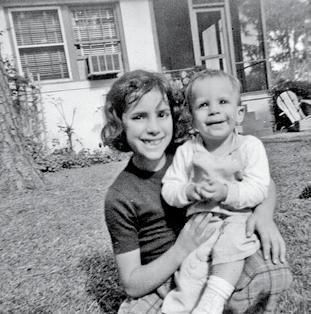
“It was important to me that the people who belong to JCA not only have good programs to experience but also build friendships,” said Steinfeld. “This was facilitated by building a support system and promoting inclusion by introducing new people or sending out cards when someone was sick and just making people feel like they were in the show “Cheers,” where everybody knows your name.”
Over the ve years, Steinfeld got quite creative in introducing all the various program presenters. One time she fooled everyone by pretending to be a Barbra Streisand impersonator before the real impersonator they had hired arrived. Wearing a wig, gown and long fake ngernails, and badly singing ‘On a Clear Day’ acapella, she ed the stage as the real entertainer came out, guring the audience probably thought it wasn’t much of a tribute, she laughingly recalled.
When Steinfeld’s rst grandchild was born in California in February 2012, she le the J Institute director position to help with the newborn, but her passion for JCA never waivers. Today she continues at JCA as an ambassador and serves on the cultural arts and fundraising committees. She also serves as a board member of the Auxiliary at River Garden Senior Services and with the Kelsi Young Gift of Care through Community Hospice.
Her many life-long friendships and love for her alma mater, Wolfson High School, have also never faltered. She has joined Rose Kolchin Tincher, a database wiz, in the planning of many class reunions, including Wolfson’s 10th, 20th, 25th, 30th, 40th and 50th. “We had as much fun at the meetings planning the reunions and reminiscing as during the actual event,” said Steinfeld.
In the past few years, both Steinfeld and her husband have battled cancer and won. She’s a breast cancer survivor who was rst diagnosed in June 2014. Meanwhile, David Steinfeld is a bladder cancer survivor rst

diagnosed in June 2018. “With cancer, you’ve got to immediately jump in and ght it,” said Steinfeld.

























Today, her days are lled with her volunteer work, meeting friends at the JCA, and recording funny stories of her time working in retail on commission as well as special family experiences, into what will be a book she can hand down to her grandchildren. She and her husband, David, have been married for nearly 49 years. She said they are proud of what their three sons and their “very special wives” have accomplished, as well as their four “incredible” grandchildren. Son, Shane, works as director of Sales Technology Development at McKesson in Jacksonville, while Kyle is a tenured associate professor of architecture at the University of California, Berkley. Jerad is an agency
Because the extended Steinfeld family is scattered all over the country, in 2015 they began gathering for a reunion-type vacation each June and have made memories in Illinois, Breckenridge, Colo., at a lake house on Lake Geneva in Wisconsin, and at a farm house just outside California’s wine country.

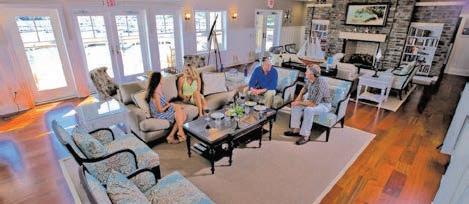




Steinfeld has had a lot of success in sales over-the-years and has made many longtime friends simply because she enjoys helping and sharing with others – something she learned by example from her mother. “It doesn’t cost a dime to be nice to someone, and that kindness is usually returned downthe-road,” said Steinfeld, noting her mother taught her not to worry about things because no one knows what’s going to happen until it happens. “Don’t think about the what-ifs but just cross that bridge when you get
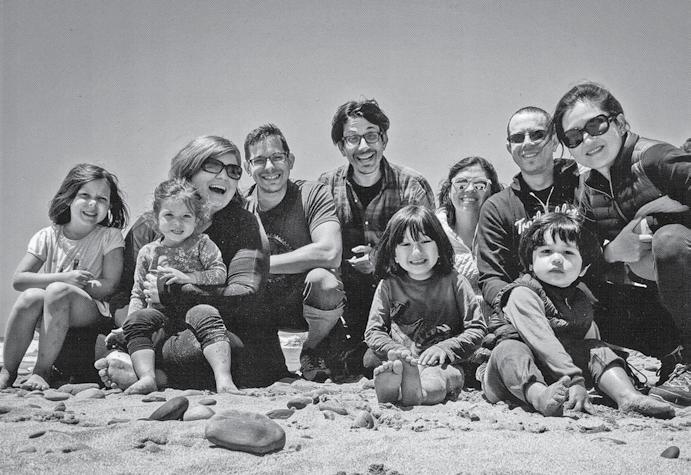
Feb. 14, 1920 to Dec. 15, 2019
Though never a shipper or cargo carrier, David Asbury Howard Sr. was one of the most influential people in the maritime industry. From his office in Jacksonville, the writer and publisher informed leaders in shipping and navigation of emerging and complex regulations, earned the trust and respect of industry representatives worldwide, and received many awards, including Shipping Industry Man of the Year.
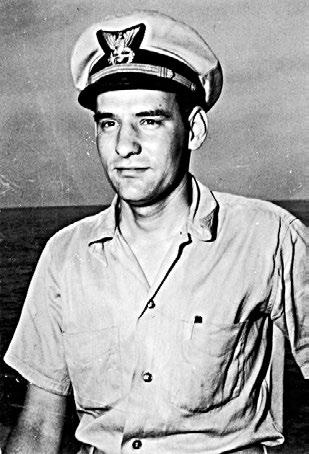
By the time he died at age 99 on Dec. 15, 2019, Howard had called Jacksonville’s Historic District home for nearly three quarters of a century. A er serving with the U.S. Coast Guard during World War II in the North Atlantic, North Africa, Caribbean and Paci c, in 1945 he started working for United Press International in Raleigh, N.C.
On Dec. 23, 1946, he married Kitty Jo Hickman from Jacksonville and the newlyweds settled into an apartment in Avondale then started raising a family in a small home in Ortega around the corner from her parents. When their third child, Hayes Howard, was a toddler, the family moved from Baltic Circle to Venetia where their four children grew up. Hayes’ son Edward now lives in that house.
Two years a er his mother died in 2000, his father married Nancy Cavanaugh Tucker, who survives him, said Hayes, calling them both extraordinary women.
Lovingly remembered by his three sons and daughter as a hard worker and near-perfectionist who had extremely high
expectations of all of them, Howard was respected by his neighbors, friends and business associates for his dedication to his family and profession, strong convictions, wit and intelligence.
“He stood firm in what he believed, but he would listen to reason. He liked to be in control of what was happening, which he passed down to us,” Hayes said. “He enjoyed life.”
Born Feb. 14, 1920, in Nashville, N.C., to educators Fred and Annie Howard, he was raised in nearby Black Creek. He started college at the University of North Carolina as a math major until, as he o en claimed, a B grade early on changed his direction. Not willing to accept a B for such a precise science, Howard switched majors and graduated from the university with a journalism degree in 1940.
New to Jacksonville, the young reporter worked for e Florida Times-Union covering the port and maritime industry and quickly learning the ropes, so to speak. Because of his expert knowledge and accurate reporting, industry leaders asked him to start a port magazine devoted to their trade. e rst edition of the Jacksonville Seafarer came out in 1952. He formed Howard Publications, Inc., in 1954 and launched the Florida Journal of Commerce, a maritime and trade publication, in 1959.
“As a reporter he understood the value of building relationships and being able to talk to people about their concerns and issues, especially in a specialized business
such as international logistics,” said Hayes, who became his dad’s business partner and now serves as president of ComPair Data, Inc., operator of the BlueWater Reporting ocean shipping research service.
In the early 1970s, with increased global competition and the introduction of containerization, both carriers and shippers looked to Howard to create a national publication to assist them with the complexity of serving international markets. “He knew people on the carrier side managing international cargo and the shipper side, such as DuPont and Corning people,” Hayes said. “They knew his reputation as a reporter, and when they didn’t understand the changes taking place, they turned to him for help. Both shippers and carriers, seeing a need for a publication to help bridge the misunderstandings that were occurring because of the growing complexity, encouraged my father to start American Shipper .”
In 1974, Howard and his son Hayes expanded the Florida Journal of Commerce
and renamed it American Shipper. Howard, who became editor emeritus in 2000, remained involved with the publication until they sold it to FreightWaves, Inc., last year. Also, in 2000, Howard was inducted into the Maritime Hall of Fame for his editorial contributions to the development of the maritime industry.
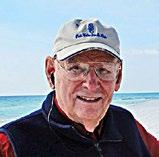
“It was a good partnership,” said Hayes, who was in charge of sales. “He had the knowledge of the industry and was an incredibly strong editor who had the ability to train young reporters how to go a er information and present it.”
Howard led by example and if there was an error in the magazine his employees knew to call the people involved before they saw it. “He believed very strongly in being honest and fair, and if you make a mistake, you own up to it as quickly as possible,” Hayes said.
An avid reader, mostly of science and history, Howard was happiest outdoors— from family trips to the Okefenokee Swamp to cultivating wife Nancy’s rose garden in his later years. He enjoyed yearly trips to the mountains, too. Acknowledging his support of education and the environment, his family requests that memorial contributions be made to the Okefenokee Swamp Park Foundation Education Fund, 5700 OSP Road, Waycross, GA 31503.
In addition to Nancy and Hayes, Howard is survived by sons David and Linn, daughter Kathy Houser, Nancy’s daughters Jane Sigalos and Mary Fouraker, 10 grandchildren and nine great-grandchildren. One goal he barely missed was living to be 100 like his siblings. Sister Margaret Nicholson is 103 and sister Francis Norton is 101. His brother, Fred, died last year at 104.
Hayes believes his father will be remembered mostly for his honesty and approach to life. “He was always honest and straight forward with everyone,” he said.
Hardage-Giddens funeral homes have a long and storied history in the Jacksonville community. We’re going on a century of providing funeral, burial, cremation and cemetery services through what has grown to be a group of 10 funeral homes and 5 cemeteries in Florida’s Duval and Clay counties.
Though times have changed and our services have expanded, our commitment to compassionate care, attention to detail and creative funeral solutions has always remained strong.

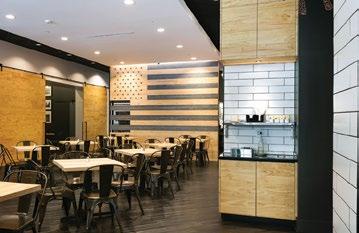
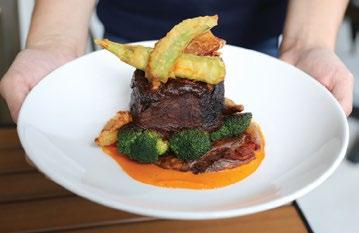
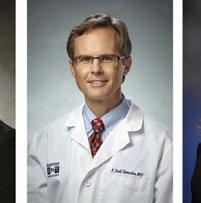

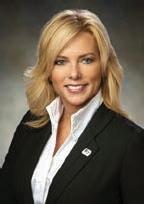

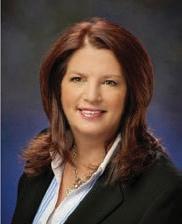


THE PLAYERS Championship 2020 at TPC Sawgrass in Ponte Vedra Beach – March 10-15 – marks nearly six decades since the creation of the tournament by a small group of avid golfers who met regularly at San Jose Country Club back in the 1960’s.

THE PLAYERS 2020 also marks the launch of a big, beautiful book that pays tribute to that small group of pioneers and their predecessors whose tournament has resulted in over $100 million donated to local charities.
e book, entitled “ e Honorable Company of Past Chairmen, e Volunteer Spirit of Our Community,” chronicles the evolution of a local golf tournament with a $50,000 purse – the Greater Jacksonville Open (GJO) in 1965 – to a major globally recognized PGA Tournament, THE PLAYERS 2020, with a $15 million dollar purse!
e written history of the tournament’s volunteer chairmen, who are called the Redcoats, begins with an eloquent introduction by longtime Jacksonville sportscaster Sam Kouvaris. Noting how “golf brings people together,” and how, through the tournament, “a sleepy stretch of beach called Ponte Vedra, framed by Butler Boulevard to the north and Sawgrass Country Club to the south, was transformed into a vibrant, growing community,” Kouvaris calls the book “a love story.”
A love story, indeed, there is a common thread that weaves itself through the story of every Redcoat ... a spirit of generosity and caring that transcends the game of golf. Each member of the Honorable Company of Past Chairmen, including THE PLAYERS 2020 Chairman, Andy Carroll, is a community leader in his or her own right. Each Redcoat, past and present, has impacted thousands
of others through charitable donations engendered by the tournament, and all of the Chairmen have volunteered tirelessly for something bigger than themselves.
Among the many fascinating stories in the book is that of San Marco resident John Tucker, the rst Redcoat and chairman of the 1965 GJO, whose main claim to fame in the 1960’s was that he worked for Southern Bell and could make all the long-distance phone calls he wanted. In those days, long distance was used primarily for emergencies. At no cost, Tucker could call big-name golfers across the nation and invite them to Jacksonville. He eventually became friends with several pros.
Tucker and Jack Niklaus used to go on father-son hunting and shing trips with the late John Montgomery (1967 GJO Chairman). “ e deal was that the rst day of either hunting or shing, you couldn’t take your own son; you had to take one of the other boys,” recalls Tucker. When Nicklaus played the TPC at Sawgrass in 1978, he had thousands of people following him when he stopped to speak to Tucker’s 14-year old son, Clay. “I’ve got some pictures for you from our duck hunt,” he told Clay. Remembering, Tucker smiles. “ e whole world stopped while Jack dug in his bag and found the pictures to give to Clay. en he walked on and won the tournament. at’s the kind of man Jack Nicklaus is.”
Another great Nicklaus story came from Kevin Gay, whose Dad, the late J. omas “Tommy” Gay, chaired the rst Tournament Players Championship (TPC) at Sawgrass Country Club in 1977. An average golfer, Tommy Gay nervously walked up to the practice range between Johnny Miller and Jack Nicklaus, took a practice swing and hit the bucket of balls by mistake. “All the balls rolled out through Nicklaus’s legs and in between his feet,” said Kevin Gay. “Everybody froze. Nicklaus turned around and said, ‘Tommy, I’ve played a lot of golf, but this is the rst time I’ve been hit on the practice range.’” Kevin Gay, CEO and founder of Operation New Hope, volunteered at the tournament throughout his boyhood and notes that his Dad never forgot the grace with which Nicklaus handled the practice range situation.
Golf irons abound at THE PLAYERS, but how about ironies? e late Don Davis, who served in the Florida House of Representatives and held many other civic and community positions, was the 1988 Chairman of the Mazda Senior TPC. Ironically, the rst golf game Don Davis ever played was in Coronado, California at a high school match between Gene Littler and Billy Casper’s golf team
and Don’s edgling team. Many years later, gol ng great Billy Casper won the tournament Don Davis was chairing!
Don Davis’s son, Robert Davis, Jr., chaired the 2013 PLAYERS Championship, won by Tiger Woods. “ e tournament has been a part of my life since I was a kid. I grew up in it,” recalls Robert. “I remember when we used to make and sell cardboard periscopes with a mirror on the bottom and on the top and sell them to the spectators ... that was before the stadium course was built, giving everyone a great view of what was happening.”


Davis is a legacy Redcoat, as is Kevin Robbins, the 2004 PLAYERS chair, who followed in his father, GJO 1975 Chairman Frederick Robbins’ footsteps. Fuller Tresca, Jr. was the 1983 TPC Chairman and his son, Tim Tresca, chaired the 2007 PLAYERS Championship. Many of the past chairmen have children who have volunteered at the tournament for years and may someday follow their parents’ lead.
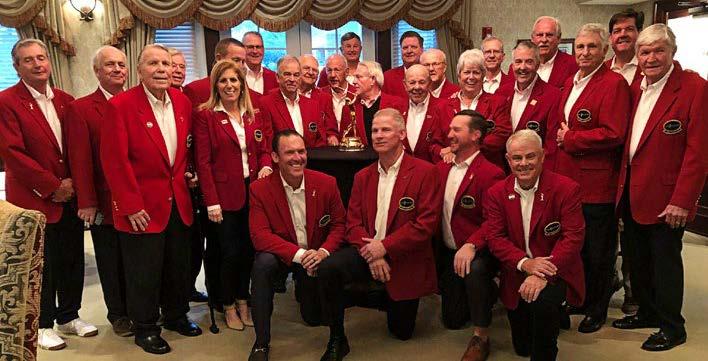
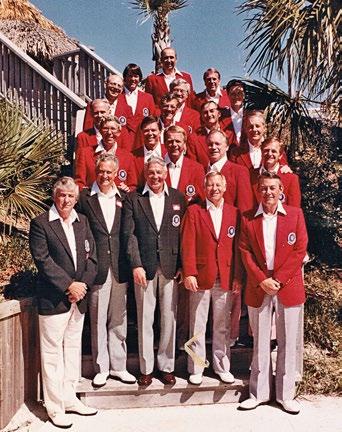
Rufus Dowell of San Marco married John and Ewo Tucker’s daughter, Angel, and learned about the art of volunteering from his father-in-law. “Watching John Tucker for many years,” said Rufus. “I’ve seen the way he works with and treats people. Volunteers need to respect you, don’t ask them to do anything you wouldn’t do.” All of the Redcoats, including Dowell, credit the volunteers with making the tournament successful, from the GJO’s volunteer force of 500 to today’s 6,000 plus volunteers at THE PLAYERS.
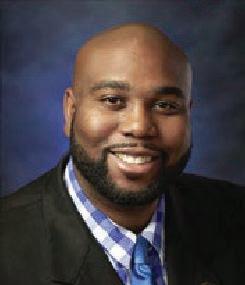
Anne Nimnicht of Lakewood, widow of the late Billie Nimnicht of the Nimnicht Family of Car Dealerships, was the rst Lady Chairman of the TPC. Having volunteered since 1975 purely for the love of the tournament, Anne said it was a big surprise when her brother-in-law, Ed Nimnicht (Chair of the 1978 TPC), asked her to come to the San Jose Country Club and talk to
the Redcoat’s selection committee. As she rose up the ranks of the Vice-Chairmen (Bluecoats) for the next ve years, Anne was singled out by newspaper headlines such as “Fore! Woman on Board!” Today, Anne’s son, Lee Nimnicht, is a Bluecoat on Chairman Andy Carroll’s 2020 Leadership Team, working toward a possible legacy chairmanship.
en, there’s the story of Lester Varn of Ortega (1968 GJO Chairman) and Arnold Palmer (the golfer and the dog), and the story of the late Marc Smith (2003 PLAYERS Chairman) and his famous rendition of Jeremiah was a Bullfrog ... the stories are rich, and as Kouvaris indicated, lled with love.
There is a section in the book that is dedicated to the Professional Golf Association’s (PGA) Commissioners, Deane Beman (1974-1994), Tim Finchem (1995 – 2016) and Jay Monahan (2017 – present) who have helped make the tournament what it is today. Beman played the Greater Jacksonville Open in 1968 as a professional golfer, and in 1977, as PGA Commissioner, brought the TPC to the Sawgrass County Club. Beman wanted a permanent PGA Headquarters and he remembers “Richard Martin [1971 GJO Chairman] and I rented a helicopter and looked west to Green Cove Springs and north to the Georgia border and between here and St. Augustine ... We convinced the Fletcher brothers that if they would sell us enough property – 415 acres – for $1.00, it would be to everyone’s benefit.” Beman kept the $1.00 check, and his prediction definitely came true.


Ed Nimnicht, who still holds the distinction of being the youngest Redcoat at age 34, said, “If I was a professional golfer today, I would have a picture of Deane Beman and Arnold Palmer on my mantel. Palmer had the magnetism to get endorsements. He was the one that led all the athletes of today. Beman had the incredible vision.”
e book, by Susan D. Brandenburg and published by Hartley Press of Lakewood (Redcoat Michael Hartley chaired the 1998 PLAYERS Championship), will be available for pre-order at the 2020 PLAYERS Championship. Members of the Honorable Company of Past Chairmen who volunteered their time, talent and treasure to make THE PLAYERS Championship what it is today are hopeful that those who read this book will catch the charitable Redcoat spirit and volunteer in 2021.

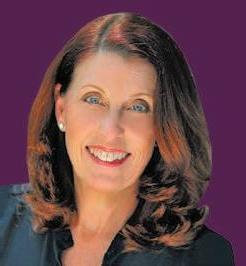

Okapi. at’s “the coolest animal you never heard of,” according to Lucas Meers, a Lakewood man who hunts the mammal in the Congo. He longs to trap and shoot them—with a camera, that is.
The okapi is the cultural symbol of the Democratic Republic of the Congo (DRC), like the bald eagle is to the United States. Each okapi has its own unique stripe pattern, like a human fingerprint, which allows blending into the shafts of light created by the dense tree canopy of the tropical rain forest.

Because of okapis’ striped coats, many people mistakenly think they are zebras’ relatives, but that’s not so. ey actually make up a species of their own and are, evolutionarily, the oldest living relatives of gira es, although not discovered by Western scientists until 1901. is is due, in part, to the okapi’s highly reclusive nature. In fact, Meers has not yet had the opportunity to see one in the wild except on camera trap. He enjoys spending time though with the one currently living at the Jacksonville Zoo and Gardens (JZG).
It’s his role as Program O cer for the Okapi Conservation Project (OCP) that has thrice brought Meers to the heart of Africa, the Congo, the location of the Okapi Wildlife Reserve, an over-5,000-square-mile area where OCP is based. e organization’s mission is to save and to bring awareness of this extraordinary mammal, now endangered due to the impact of human activities like deforestation, poaching, and mining.
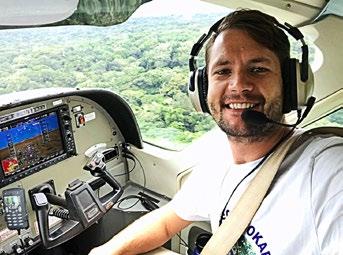
Meers’s most recent trip to the DRC in late 2019 was spent with a sta of 35 focused
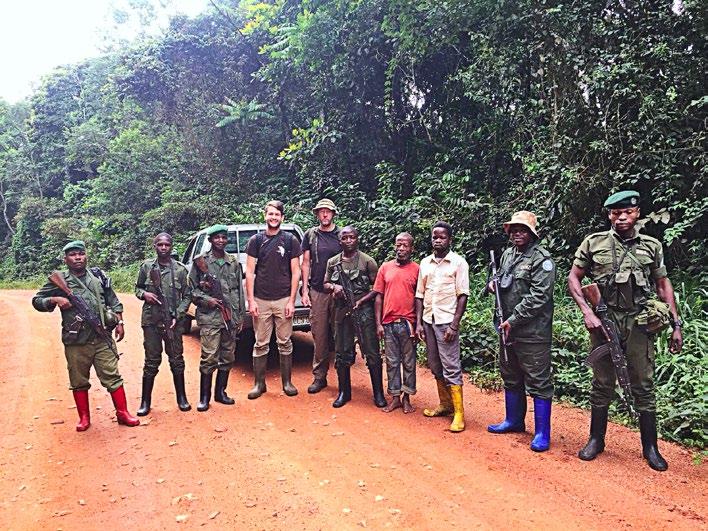
on planning end-of-year programs, setting up 2020’s budget, making sure the forest is protected, and celebrating World Okapi Day on October 18, which annually centers around fun activities like parades, soccer games, and races, combined with educational messaging. “Another interesting component to the visit was the complications of navigating the e ects and impact of Ebola and the general instability and insecurity in the region due to rebel groups,” noted Meers.
The Project has established “a balance between people and the environment,” Meers said. In their attempts to rescue the okapi from extinction, OCP did not want to expel the indigenous people from their villages; so, they live inside the Reserve with distinct zones designated for farming of crops and hunting of certain species. Coordinated programs teach farmers crop rotation strategies, and community assistance supports healthcare centers and schools throughout the Reserve, which has increased the standard of living in and around the okapi habitat.
A leading proponent of these e orts is JZG, employing Meers in a unique hybrid
position. Half of Meers’s work hours are involved with the OCP. Although a separate organization, part of the Zoo’s contribution to the project is allowing Meers not only to participate in eld expeditions but also to use o ce space at the Zoo for OCP administrative functions.
e other half of Meers’s working hours are spent on JZG’s conservation e orts; this includes protecting animals as well as plants because, as Meers pointed out, they “are very interconnected.” He has a hand in sending sta to elds, educating guests, and developing a speaker series. Meers is endeavoring to make the Zoo a conservation resource for the entire Southeastern region of the United States.
In addition to his role with the Okapi Conservation Project and his employment at the Zoo, Meers has volunteered for nearly a decade with the Mickler’s Landing Turtle Patrol, part of the Florida Fish and Wildlife Conservation Commission’s Marine Turtle Research and Management program. The group patrols beachfront, collects trash, records data, protects nests, and reports violations.
e lure of the beaches initially brought this midwestern Saint Louis boy to Florida and to Jacksonville University, where Meers dual majored in biology and marine science. Although suggested to him by some, he didn’t want to study veterinary medicine. Meers preferred to be in the eld. “Being outside is my Zen,” he said. It’s where he nds his peace.
A er graduation, Meers couldn’t bring himself to leave the area. While living in Neptune Beach, he began his employment at JZG in a fundraising capacity and then shifted to an interim role as the Zoo’s coordinator of special events and public
relations before making his way in May 2016 to the conservation department.
On Dec. 30, 2019, Meers was proud to announce the three-year anniversary of owning his home in Lakewood, a neighborhood he and his wife “fell in love with”

a er witnessing the daily dog-walking and children-playing that mark its pulse. e live oak tree overarching his back deck and the 10 acres of woods abutting the backyard, which Meers o en explores, prompt reminiscing about his own childhood.

As a boy, Meers spent many an a ernoon wading in a creek, collecting turtles, snakes, and crawdads, which he’d bring home as specimens to study and friends to cherish. “I’ve always been drawn to animal life, always distracted by birds,” he admitted.
In high school, before AP science classes were offered on the curriculum, Meers convinced his guidance counselor to make an exception to a rule and allow him to take the AP bio exam. He scored high. ere was no doubt that Meers was meant to work with animals and that someday his vision would come to pass.
Lucas Meers, “lover of all things science” as his Twitter profile points out, is passionate about animal conservation and educating the public. When most American boys are asked what they want to be when they grow up, Conservation Program Officer working with wildlife rangers and indigenous people of Africa is not high on their list. But for Lucas Meers, the 32-year-old who describes himself as “outdoorsy,” that title has him living his dream. His days in the creek back in Saint Louis seem to have prepared him well for his current career. “I’ve always had a vision of working with animals,” he said. And he’s doing just that, right here in Jacksonville.















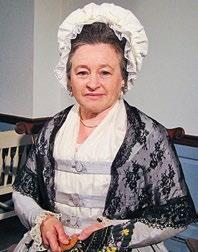
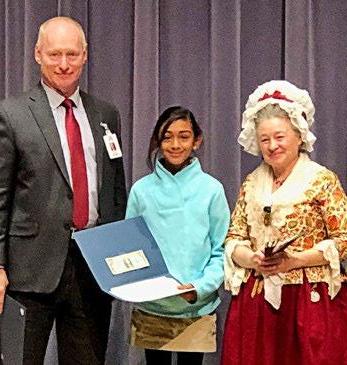
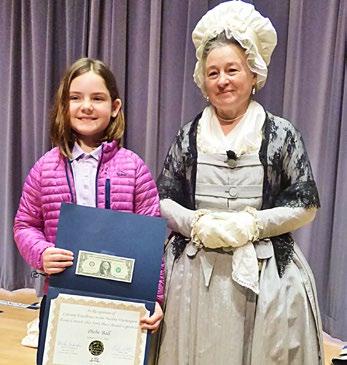
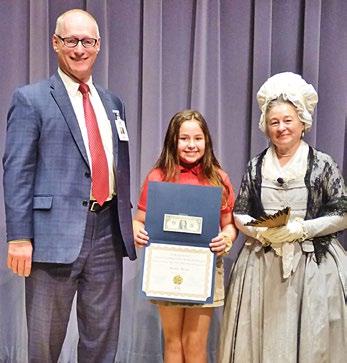
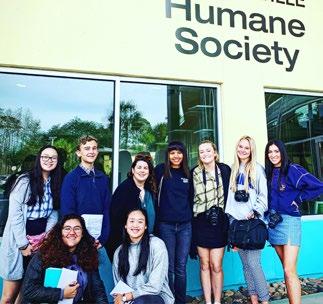 By Peggy Harrell Jennings Resident Community News
By Peggy Harrell Jennings Resident Community News














































Being able to meet with Martha Washington at the Public Library was a helpful tool in teaching fifth grade social studies, said Leslie Bransford, a teacher at St. Mark’s Episcopal School. The program presented by reenactor Carol Spacht from Pennsylvania to the students in Duval County “was right in line with the students’ studies, and their upcoming trip to Washington D.C. will be a culmination of those studies,” she said.
The program, a collaboration between Duval County Schools and the National Society of Colonial Dames of America, Florida, offered students a firsthand visit with the historical first lady. NSCDA Historical Activities Chair Elizabeth Barrs Howard said this year was the largest group of students in attendance, with over 5,000 students over the fiveday series of presentations in Jacksonville and St. Johns County. Students from schools around Duval County have been preparing essays about Martha Washington for the essay competition, and Bransford’s student, Marley Moret won the contest for St. Mark’s Episcopal.
Stevie Ball took rst place for Riverside Presbyterian Day School, and Kavya Patel for e Bolles School. Other winners include Ava
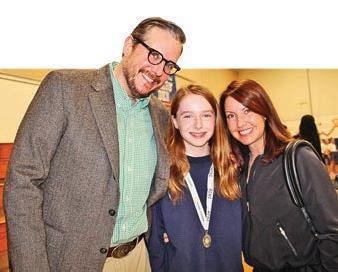
Maggie Pajcic of San Marco, a sixth grader at San Jose Episcopal Day School won a school-level competition of the 2020 National Geographic GeoBee Jan. 16. It was Pajcic’s knowledge of the Ascension Islands that put her over the top and and enabled her to take the online state qualifying test Feb. 7 to see if she will advance to further competitions. Pajcic is a two-time champion – she won the school-level competition in 2018 as well.
McDonald and Stevie Rukab from Hendricks Elementary and Baily Conner, St. Johns Country Day School.
Mrs. Washington engaged the students with lessons in manners of the period including proper ways to bow and curtsey. ere was plenty of interaction with the audience as she called students up to represent the 13 colonies and England’s King George III. Her explanations of taxation without representation included a resounding chorus of “NO!” from the students when asked if they thought the colonists liked the taxes levied on stamps, sugar and tea.
Mrs. Washington also emphasized the roles women played in the ght for independence. Student volunteers represented various women including spies for the Patriot cause such as Deborah Sampson, who disguised herself as a man to ght in the war, Sally Franklin Bache – Benjamin Franklin’s daughter – who rallied women to collect $300,000 dollars and make 2,000 shirts for soldiers, Molly “Pitcher” Hays, who manned a canon, Mercy Otis Warren who de ed the British by writing a play calling the British soldiers “blockheads,” and Phillis Wheatley, the renowned slave poetess.
Part of the mission of the Colonial Dames is education about the colonial period of American history. Sponsors for the event included the Roger L. and Rochelle S. Main Charitable Trust and St. John’s House Bed and Breakfast.


Bolles upper school students from its photography IV and e Bugle classes participated in a special service project at the Jacksonville Humane Society Feb 4. e experience was a lesson in using skills and trade to make a di erence in the lives of others – particularly many of the society’s four-legged residents. At the Humane Society the students met some of the animals. e photography students used their cameras to capture pet portraits of the adoptable dogs and cats while journalism students wrote pet bios. e goal of their work was to promote the adoption of the animals. Humane Society o cials will use the photos and write-ups to engage with the community on pets looking for a local home. Students from Jacksonville’s historical neighborhoods who took part in the program were Atticus Dickson of San Marco, Kloe Brill of San Jose, Brooke Geddes of Ortega, and Ashley Khoo of San Jose.
Fourth through eighth grade students from nearly 10,000 schools across the United States competed in the 2020 National Geographic GeoBee for a chance to win college scholarships and the glory of being the National Geographic GeoBee Champion.
Bryce Johnson, a junior at Samuel Wolfson School for Advanced Studies and Leadership has been crowned Miss Wolfson 2020. After a three-year hiatus, the Miss Wolfson Pageant returned to Wolfson High School Feb. 7. Junior class girls competed in scholarship, interview, talent and evening gown competitions.

Ashley Shakib of San Marco was named rst runner up followed by Morgan Renfro as second runner up.
Johnson performed a dance in the talent competition.


















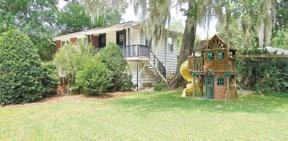
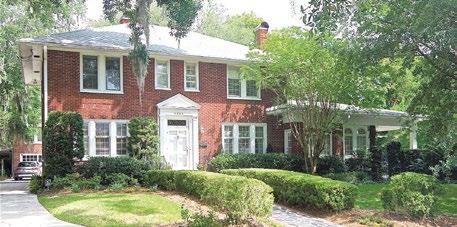


e auditorium at Samuel Wolfson School for Advanced Studies and Leadership was transformed into a courtroom Feb. 5, when three judges from the United States District Court, Middle District of Florida, Jacksonville Division, presided over the first ever Naturalization Ceremony to be held in a Duval County public school.
e idea to have the ceremony, where 30 citizen candidates from 18 countries would recite the Oath of Allegiance to their new homeland, at the San Jose-based public high school came from a statement written by Chief Justice of the United States John G. Roberts, Jr. in his 2019 Year-end report on the Federal Judiciary.
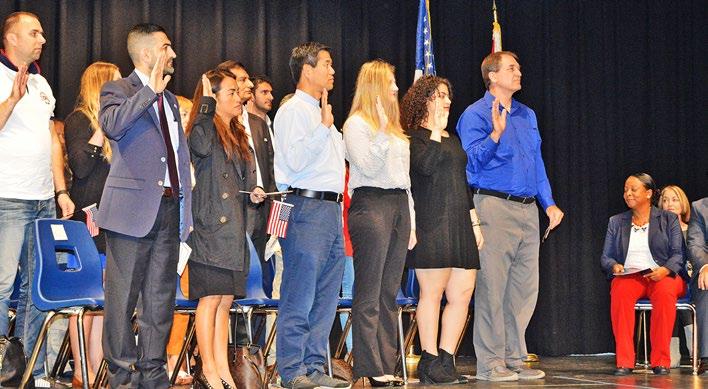
“We have come to take democracy for granted, and civic education has fallen by the wayside. In our age, when social media can instantly spread rumor and false information on a grand scale, the public’s need to understand our government, and the protections it provides, is ever more vital. The judiciary has an important role to play in civics education, and I am pleased to report that the judges and staff of our federal courts are taking up the challenge,” Roberts wrote.
In his report, Roberts emphasized the importance of the federal court’s involvement in civics education, and the Middle District Court decided to take up the challenge, according to a press release.

To demonstrate the importance of the ceremony and its presentation in a Duval County School, three active Jacksonville federal district judges, The Honorable Timothy J. Corrigan, e Honorable Marcia Morales Howard, and the Honorable Brian J. Davis, were in attendance and took part in the ceremony. Meanwhile, Dr. Diana Greene, superintendent of Duval County Schools, served as keynote speaker.
Also in attendance were Matthew Dews, sta assistant from U.S. Senator Marco Rubio’s o ce, Garry Hollis, district director, and Hunter Anderson, deputy district director from U.S. Senator Rick Scott’s o ce, as well as ve members of the Duval County School Board – Cheryl Grymes, Ashley Smith Juarez, Darryl Willie, Charlotte Joyce and Lori Hershey. Dr. Dana Kriznar, deputy superintendent of Duval County Public
Schools and Wolfson Principal Christopher Begley were also in attendance.
e focal point of the event were the 30 new citizens who hailed from 18 countries including Canada, Syria, Russia, South Korea, e Philippines, Iraq, Albania, Cuba, the United Kingdom, Belarus, India, Bolivia, France, Vietnam, Indonesia, Brazil, South Africa, and Haiti. However, Wolfson High School students also played an important major role in the ceremony as well.
Members of the Wolfson Army JROTC served to escort dignitaries onto the campus and took part in the “presentation of colors” at the start of the ceremony. Leading the JROTC contingent were three students, Capt. Michelle Kilgore, Lt. Col. Carmi Smith and Command Sgt. Major Jada Breaker. Members of the JROTC who took part in the ceremony were Marllen Cuesta-Granados, Maria Gonzalez, Ngan Nguyen, Sara Ramirez and Eseneiaso Tuimaseve.
Wolfson’s vocal ensemble sang both “ e Star Spangled Banner,” and “America the Beautiful,” within the ceremony, and 64
student ambassadors took part with 30 students providing individual introductions for each of the citizen candidates. e oldest new citizen, Kevin O’Conner of Canada, and the youngest, 19-year-old Vivian Zeidan of Syria, were presented special American ags by Judge Howard and Begley. Charlotte Caccam, a freshman, led the entire assembly, including the audience of more than 700 students, in reciting the Pledge of Allegiance to the Flag.
Begley said having the ceremony at Wolfson was very special and greatly enhanced his students’ education in civics. “It means the world to the education of our students because you read a lot about this process in our civics lessons, but you don’t feel the emotion of it in our civics lessons,” he said. “As you saw with our student body today, they hung on every word. You saw students even wiping tears from their eyes because it’s an emotional ceremony. So, while they’ve learned the why and the how in class, they learned the heart today, and I’m really proud of that.”
Savannah LeNoble, a junior at Samuel Wolfson School for Advanced Studies, has been honored for her exemplary volunteer service with the President’s Volunteer Service Award.
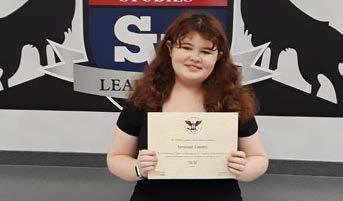
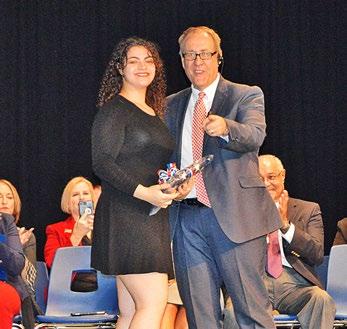
e award, which recognized Americans of all ages who have volunteered signi cant amounts of their time to serve their communities and their country, was granted by e Prudential spirit of Community Awards program. Samuel Wolfson School for Advanced Studies nominated Savannah for national honors this fall in recognition of her volunteer service at e Young Leaders of Today, eater Jax and WJCT. In its 25th year, e Prudential Spirit of Community Awards, sponsored by Prudential Financial in partnership with the National Association of Secondary School Principals, recognizes high school students across American for outstanding volunteer service.
Savannah LeNoble
“ roughout the United States many students need to be recognized for the great contribution they are giving to many organizations throughout their own community,” said Wolfson Principal Chrisopher Begley.
“Savannah is a great example of how the youth of today are doing their part. Savannah is an amazing student who is very involved in the Fine Arts Department at Wolfson and still nds time to clock many hours of extra community service. We are proud that she is part of the Wolfpack!”
Five students from Jacksonville’s historic neighborhoods were among 36 student artists from St. Johns Country Day School, to be recognized in the 2020 Scholastic Art & Writing Awards. Collectively, the St. John’s students took home 89 awards.
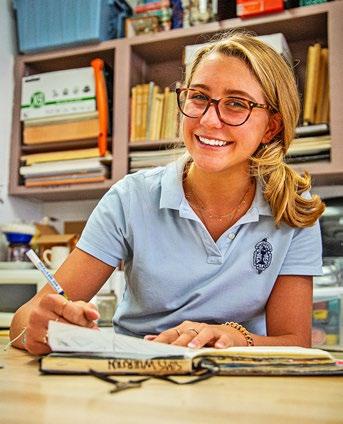
Haley Juskowski of Ortega Farms took home a Gold Key and an Honorable Mention. Abbey Lantinberg of San Jose was recognized with a Silver Key and an Honorable Mention, while Lulu Nowicki of Avondale earned a Silver Key, and Zoë Roberts of Murray Hill won a Gold Key. Sims Wulbern of Ortega Forest took home with three awards – two Honorable Mentions and a Silver Key. "It's a signi cant achievement to earn any of these awards," said Visual Arts Department Chair Anna Reynolds-Patterson. "Each
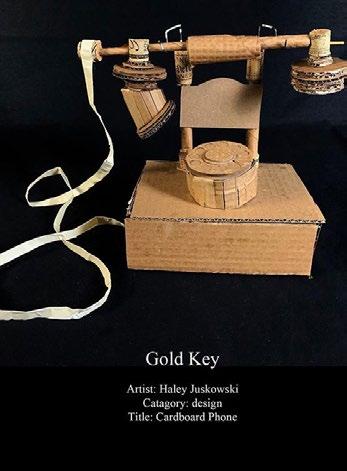
award represents our students' dedication to creative and technical artistic skill. We are proud of these artists for excelling at this level, especially considering many of the awards were received by students still in Middle School."

Since 1923, the Scholastic Art & Writing Awards have recognized the vision, ingenuity, and talent of youth throughout the United States and provided opportunities for creative teens to be celebrated. The Awards are presented by the Alliance for Young Artists & Writers. The Alliance is a 501(c)(3) nonpro t organization whose mission is to identify students with exceptional artistic and literary talent and present their remarkable work to the world through the Scholastic Art & Writing Awards. e Awards give
students opportunities for recognition, exhibition, publication, and scholarships.
Students across America submitted nearly 320,000 original works this year in 29 different categories of art and writing.
Also winning awards for St. Johns were: Yashas Aprameya, Olivia Belland, Landon Brafford, Kassie Burton, Addison Ellis, Brooke Ferris, Kelsey Gregson, Kinley Hall, Kyla Hartwell, Lea Hartwell, Natalie Higingbotham, Desiree Holmberg, Anna Kemp, Mary Kate Kent, Khloe Lloyd, Michael Maytin , Tyce Moore, Ava Morin, Mia Morin, Riley Myers, Delaney Payton, Kylie Rodriguez, Kendall Sage, Noelle Sanford, Emma Schultz, Claire Trammell, Laney Valdivia, Reagan Wagstaff, Laura Walden, Ruihong Wang, and Sophia Woolard.
9 a.m.-1 p.m. April 4
Tweed Ride | Linus Bike Contest
Blessing of the Bikes | Plant Sale
8:30-10 a.m. April 5
Palm Sunday Service | Blessing of the Bikes
Jacksonville Symphony | District Choirs
cathedraldistrict-jax.org
9 a.m.-3 p.m. April 4
Plant Sale | Greenscape Tree Giveaway
Kids Zone | Educational Programs
Green Market | Food Trucks
Preview Party 5-8 p.m. April 3


Buy your tickets for music, wine, and fun!
gardenclubjax.org
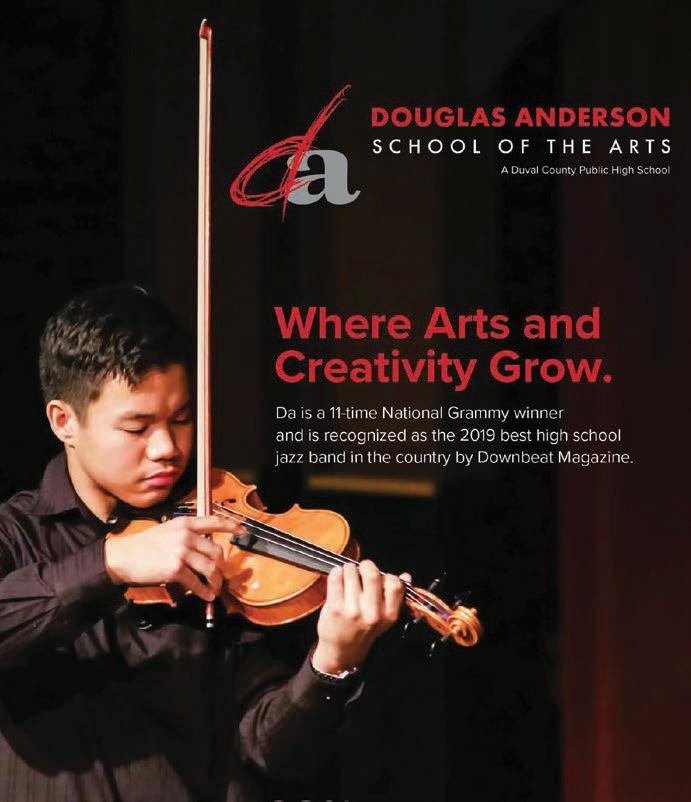
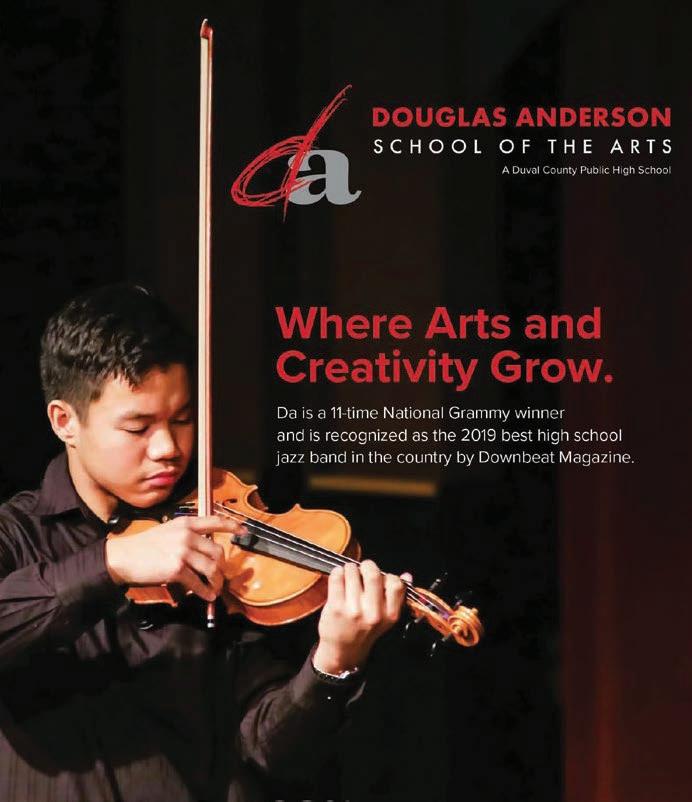
ree students at Douglas Anderson School of the Arts have been recognized as National Merit Scholar nalists.
Adam Agonoy, Samuel Pabon, and Mallorie Sievert were among 15,000 students nationally to be considered for a National Merit Scholarship.
“We are incredibly proud of these hard-working students,” said Douglas Anderson Principal Melanie Hammer. “Douglas Anderson would like to congratulate Adam Agonoy, Samuel Pabon, and Mallorie Sievert for advancing to finalist standing in the National Merit competition.”
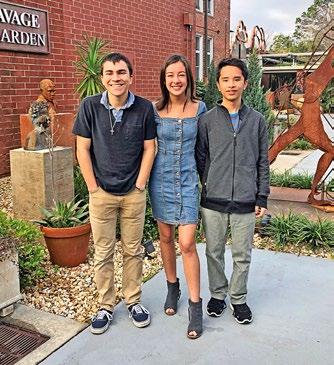
e National Merit® Scholarship Program is an academic competition for recognition and scholarships that began in 1955. Approximately 1.6 million high school students enter the program each year. High school students can become eligible for the program by rst taking the Preliminary
SamuelQualifying Test (NMSQT). Approximately 15,000 semi nalists advance to nalist standing. Within the nalist group, winners are chosen for the Merit Scholarship based on their abilities, skills, and accomplishments. About 7,500 nalists will be selected to receive a scholarship in between the beginning the March and mid-June.
Graduating from the program were Grant Butler, John Sellock, Gabriella Hitti, Anaje Austin, MaryAlice Young, Carolina Macchi, Nina Saldajeno, Melissa Molano, Rachel Lechwar, Katie Jubran, Klea Gjoka, Claire Evans, and Caroline Chappano.
e mission of the Joe Berg Seminars is to "foster the love of learning and inquiry of outstanding high school students by presenting challenging evening seminars led by experts in various fields of the sciences and humanities."
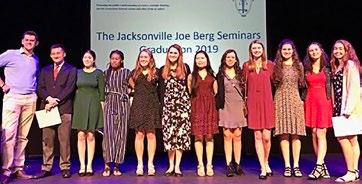
At the Northeast Florida Regional Science and Engineering Fair in Jacksonville this week, Julia Kagiliery, a junior at the Episcopal School of Jacksonville was selected to present her project at the Regeneron International Science and Engineering Fair in Anaheim, Calif. in May, while her classmate, Jordan Harrow, a junior, was selected to present her project on the pesticide resistance at the Genius Olympiad in New York.
Eight students in Episcopal’s Honors Science Seminar were selected to present their projects at the State Science Fair of Florida in March. The students also earned place awards and special award certificates, gifts and cash prizes totaling $800 from corporations, professional organizations and government agencies. Included among the award winners who are going onto the State Science Fair were Sally Barksdale, Ashton Body, Miranda Doro, Harrow, Spencer Huie, Kagiliery, Cole Nigro, Erin Shay, and Braden Witkovich.
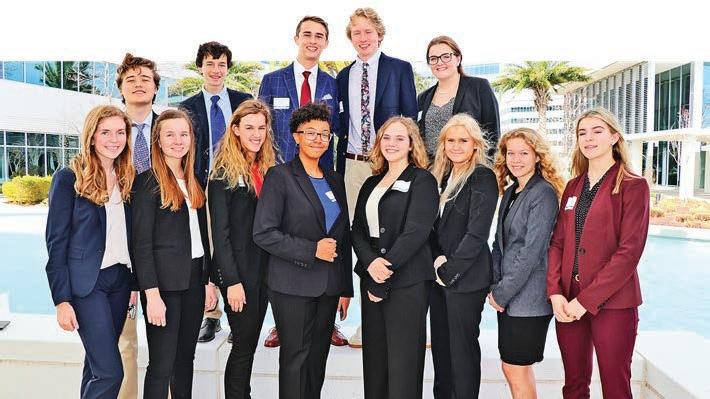
Students in the Honors Science Seminar also presented their science projects to judges at the School Science Fair on Jan. 21-23 in the Berg Gallery of the Munnerlyn Center. All students in the Honors Science Seminar advanced to the Northeast Florida Regional fair in February.
“The judges were impressed with the students’ creativity, scientific thinking and critical thinking,” said Marion Zeiner, director of Scientific Research. “The projects were complex, novel, and pertinent to the problems that face society today.”
Based and the extraordinary quality of the projects, the judges chose two winners in both the biological sciences and the physical sciences.
Body and Barksdale both placed rst in senior biology, and Kagiliery and Harrow were rst in the senior physical sciences.
Body’s project targeted drug delivery for drug-resistant cancer, while Barksdale studied the immune response to cancer treatments. Meanwhile, Harrow’s project dealt with pesticide resistance in Daphnia and Kagiliery determined the sulfur content in lignite coal.
Also competing in the science fair in the senior biological category were Ariel Largen, who placed second with a project on antibacterial substances; Cole Nigro, who took third place with a project on zinc phytoremediation in lettuce; Audrey Franken, who studied cherry juice on the energy of fruit flies (honorable mention); Erin Shay, who student sunscreen on planaria (honorable mention); William Volen, who studied tick responses (honorable mention).
Competing in the senior physical science category were runner-up Spencer Huie who studied the reduction of CO2 in oceans; third place winners Miranda Doro, who studied the removal of microplastic with ferrofluids and Braden Witkovich who studied water electrolysis; and Kaya Olszewski, who received honorable mention for the study of kinetic energy for bone stimulators.

e chess club from Hendricks Avenue Elementary (HAE) placed second to Gainesville’s Oak Hall School in the San Marco Scholastic Chess Tournament Jan. 4. Seventy competitors from 22 schools competed in the tournament.
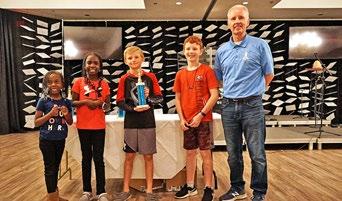

Brittan Gibson, a freshman at Bishop Kenny High School, was selected as the High School Tomorrow’s Leaders runner up in the Martin Luther King essay contest. Gibson’s essay, entitled, “No one can rain on my dreams,” came in second from more than 100 student submissions. She was recognized alongside other Tomorrow’s Leaders at the 33rd annual Martin Luther King, Jr. Breakfast presented by Florida Blue on Jan.17.
Gibson based her essay title on a quote from Martin Luther King Jr., “No one has the right to rain on your dreams.” Within her essay, she has taken the words literally and set her goals at Bishop Kenny to make her dreams a reality. Gibson said she is inspired to “continue making good grades, become a better and faster swimmer, and attend the University of Georgia and become a lawyer.” She recommends envisioning success, staying positive, and embracing setbacks as the best way to achieve your goals.
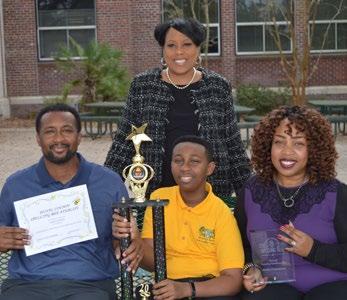










As far as Julius Graham is concerned, his victory in the Duval County Spelling Bee came as the result of prayer.
An eighth grader at Alfred I. duPont Middle School, Graham realized he had studied a different list of words from the other contestants after he arrived at the contest. “To be honest, I had the wrong set of words because the other kids had been using a packet of words 25 pages long,” said the young San Jose resident. “I was panicking and thinking, ‘what am I going to do? I haven’t studied these words.’
I was worried at first, but in the end, I kept praying to God that I would win, and God answered my prayers. So, what I feel I can take away from this is that God is good and ‘ask and ye shall receive.’”
Graham was one of 26 contestants who competed in the city-wide, public school competition Feb. 4. He won the contest by successfully spelling the word “dubiously” a er going more than 15 rounds against the city’s top spellers.
Placing second was Leah Files of James Weldon Johnson and third was Christopher Barrett of Kirby Smith Middle School. Graham was sure all was lost when he misspelled “jeepney” mistakenly using a ‘g’ instead of a ‘j’. However, when Files missed two words in a row and Graham correctly spelled dubiously, he knew he
winner. “I was pretty excited to find that I won, especially after I spelled a word wrong,” he said.
By winning the county bee, Graham represented Duval County in the regional spelling bee in February.
Graham, who is the only member of his family to be uent in both Spanish and English thanks to the dual language programs at San Jose Elementary and duPont Middle School, is used to overcoming obstacles. He was born with Erb’s Palsy, in his le arm, a disease that infects all the nerves from his shoulder to his hand. “I’ve had about three orthoscopic surgeries, and I will probably need another one,” he said.
Yet, his favorite class is duPont’s college-level SLS course, taught by Rachel Duff, that will award him his first college credits even before he arrives at high school. In addition to his studies as a dual-language student, he participates in duPont’s 5,000 Role Models of Excellence program for young men, is a member of the Junior Honor Society, and is the first
student officer to serve in duPont’s Parent Teacher Student Association (PTSA). He also runs hurdles for the Dragon’s track and field team.

For high school, Graham said he plans to apply to Robert E. Lee High School’s Early College Program with the goal of eventually heading to college at EmbryRiddle Aeronautical University, where he plans to study astrophysics.

“He’s overcome his speci c disability. He just never gives up,” said duPont Principal Marilyn Barnwell. “He works really hard.”
In addition to being especially proud of Graham, Barnwell said having Duval County’s top speller in her ranks has been a boost to everyone at her school.
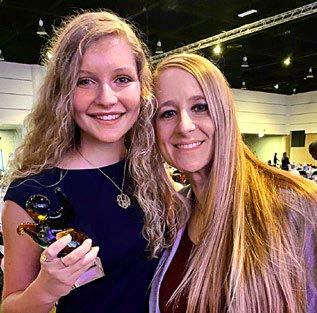
“It’s just an amazing experience, and I feel so honored and proud to be Julius’s principal as well as principal to the other students here,” she said. “It means a lot because it shines a spotlight on the work that we are doing here at duPont. We have a lot of wonderful and amazing programs that we have put into place over the last few years, and Julius really represents those programs that we offer. His winning the spelling bee brings more attention to what we have to offer for all our students. It gave us the perfect boost this year to continue our momentum to do the best that we can on behalf of our students. Our students are so energized now, and so are our teachers and parents.”
Graham agrees that winning the spelling bee is a highlight of his middle school career.
“ ere are a lot of kids who are as good or better than me in duPont, but I think it’s really cool that everyone says, ‘hey, you’re the spelling bee kid,’” he said. 223
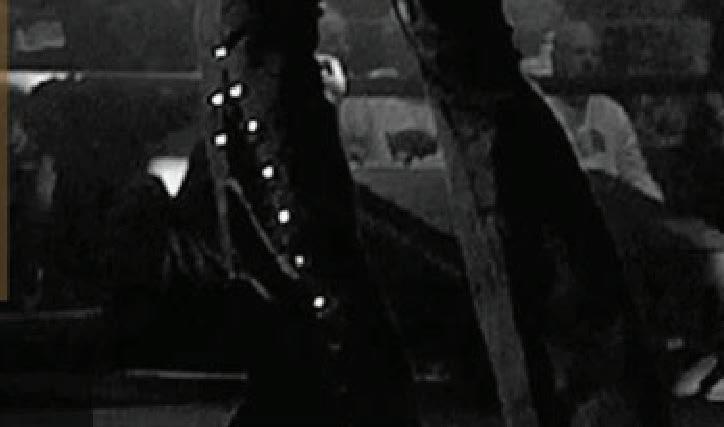
























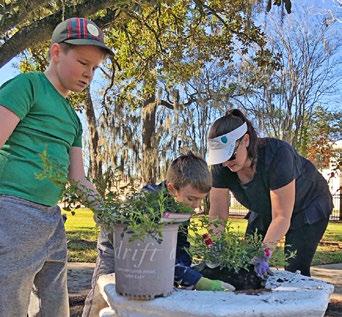
Cub Scouts Pack 35 volunteered their time and hard work replacing and refreshing landscaping at San Marco Preservation Hall in December.
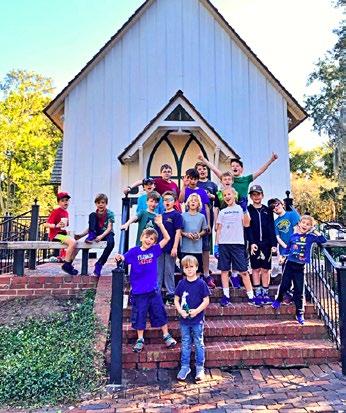
San Marco Preservation Hall, built in 1888, is an historic events venue in Fletcher Park owned by the City of Jacksonville and managed by the San Marco Preservation Society (SMPS). e building was lovingly restored in 1994 and its preservation is a priority for the San Marco neighborhood. anks to the e orts of Pack 35, landscaping was weeded, overgrown plants were trimmed, and new plant material was installed. New roses were planted in a portion of the original San Marco Square fountain – adorned by the campanile – that has been turned into a planter. All of these improvements have signi cantly enhanced the appearance of the park.
The donation of Pack 35’s time and labor was greatly appreciated by the San Marco Preservation Society and will be treasured for years to come, said SMPS President Linzee Ott. SMPS is grateful for the scouts’ volunteerism and involvement in our community, she said.

Ortega resident Alice Creed, San Jose residents Laine Roberts and Elias Batten, Riverside resident Simon Brackin and San Marco resident Eli Gordon were among 12 Bolles student-athletes who were honored Feb. 5 for committing to particular colleges or universities to continue their athletic and academic careers. Family, friends, classmates, coaches and faculty gathered in Davis Gymnasium on the San Jose Campus to celebrate their achievements. Athletic Director Matt Morris made some welcoming remarks and several coaches introduced their respective athletes.
e 12 students who committed to play collegiate athletics next year are: Baseball: Chance Moore, Daytona State College; Cross Country/Track and Field: Alice Creed (track and eld), Haverford College; Marshall
Gainer (track and eld), Samford University; Helena Kummings (x-c), Emory University; Laine Roberts (track and eld), Vanderbilt University. Football: Elias Batten, Long Island University; Simon Brackin, Princeton University. Gymnastics: Jenna Mulligan, University of Michigan. Girls’ Lacrosse: Brielle Bouchard, Savannah College of Art and Design. Men’s Soccer: Eli Gordon, Wilkes University. Swimming and Diving: April Kupsky, Babson College and Neo Garcia Nohra, University of Arizona. e signing ceremony was the second of three college commitment ceremonies planned at Bolles this school year to recognize student-athletes as they commit to colleges. During a similar ceremony in November 2019, 10 students were honored, and another ceremony will take place in April.
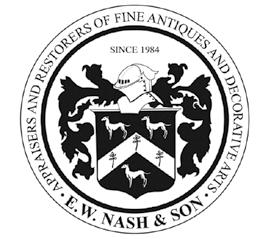
e lunchroom at San Jose Elementary is brighter and more colorful thanks to a vibrant new mural painted by a graphic artist from Atlanta.


Brian Nelson, who is the brother of Eric Nelson, physical education coach at San Jose Elementary, instigated the painting of a new mural at the school in January. “Last week, I was in the city where I was born and raised for a few days and wanted to give back to the community through my art,” Nelson posted on his Instagram account. “It was glorious to see the joy on the kids’ faces as they watched me work. ere was even the opportunity for a few of them to help throughout the process. Listening to their imaginative and curious little minds while answering their many questions was very inspiring,” he wrote. “When the opportunity arose, I knew pretty quickly the concept I was going to approach for the mural. With pandas being their mascot and “Panda Pride” their mantra, exploring the interaction between
San Jose Episcopal Day School (SJEDS) welcomed guest actor and producer Russell Joel Brown in February.
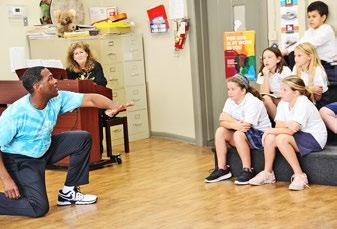

Brown has appeared on Broadway and on the First National Tours of Disney’s The Lion King and Smokey Joe’s Café among others. In addition to his many stage successes, he also developed Russell Joel Brown’s Project: Inspire, an outreach program for elementary and middle school students. He presented the program to all SJEDS students. In this dynamic, fully interactive, 50-minute program, Brown shared life lessons from his career in theater, performed songs and choreography from The Lion King, and emphasized the importance of respecting yourself and others. He also led small acting workshops with SJEDS theater students.
mural at their school. Photo courtesy of Brian Nelson these animals and the kids through plan and inventiveness became apparent,” Nelson continued. “With only three days to complete the work, I had to focus and work quick, but diligently. Having the overall idea in mind, I began without preliminary sketching, just going for it and letting each interaction ow from on to the next, ultimately nishing in 2 ½ days,” he said.
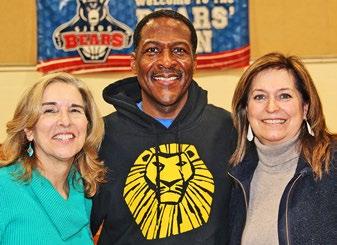



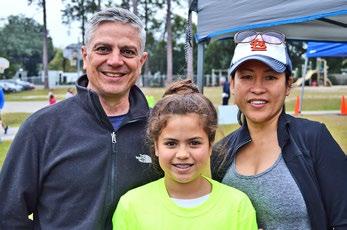
Although it was a dreary, damp day, that did not deter the participants from Hendricks Avenue Elementary in supporting the Friends of Hendricks Annual Walk-a- on, a school fundraiser with the goal of raising money and keeping its students t.


is year’s Principal’s Challenge was 750 laps with school Principal Mindy McLendon and Vice Principal Ti any McClain agreeing to compete in a pie-eating contest if the students achieved their goal.
e students well exceeded their goals in both the distance walked and money raised walking 6,627 laps for a total of 828 miles and raising more than $50,000.
Before the walk-a-thon began, the Friends of Hendricks had already raised $29,500 due to generous donations from its business partners, said Lauren Weedon Hopkins, fundraising chairman. Sleiman Enterprises was the presenting sponsor followed by main
sponsors Matt Carlucci and Erik Kolar, she said. All proceeds derived from the food tent, will go to fund a trip to Washington D.C. that will be taken by the HAE h grade this spring. e top walker in the school was Max Noble Berzsenyi with 96 laps, a total of 12 miles. Tying for second place were Dutch William Howanitz and Aerabella Cheyenne Good with 79 laps, a total of 9 miles, apiece. Leading the top fundraisers within the school was Matthew Francis Carlucci followed by Edward Valentine Kolar and Dutch William Howanitz.
In the classroom competition, the top classes with the most distance were Craig Beyer’s h graders, who logged a combined total of 256 laps. Virginia Smith’s third grade placed second with 233 laps followed by Allison Wise’s rst grade class with 224 laps.





Richard Kaufmann’s fifth grade class topped the school in fundraising. He was followed by Allison Wise’s rst graders and Robin Kehrt’s kindergarten class.
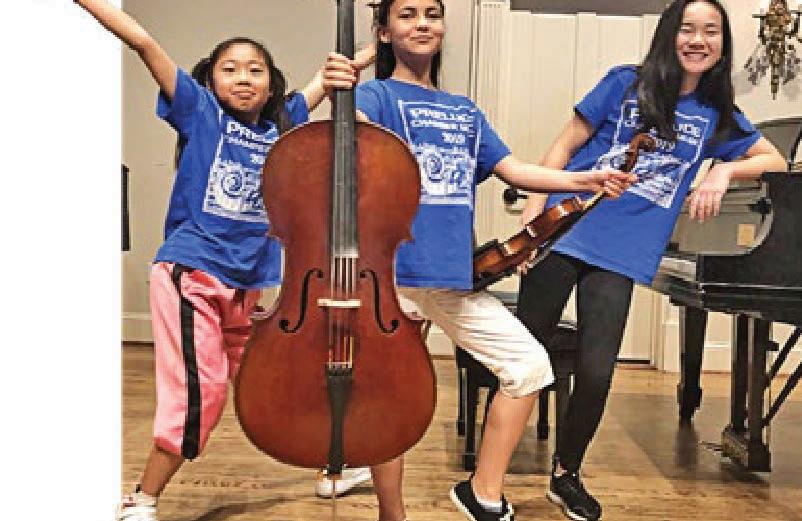







Due to inclement weather, the ag-pole celebration was postponed until March 26, which is when HAE’s principal and vice principal will square o in their pie-eating contest.



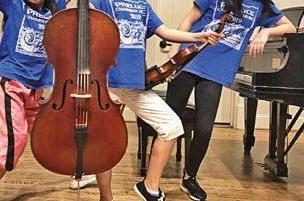
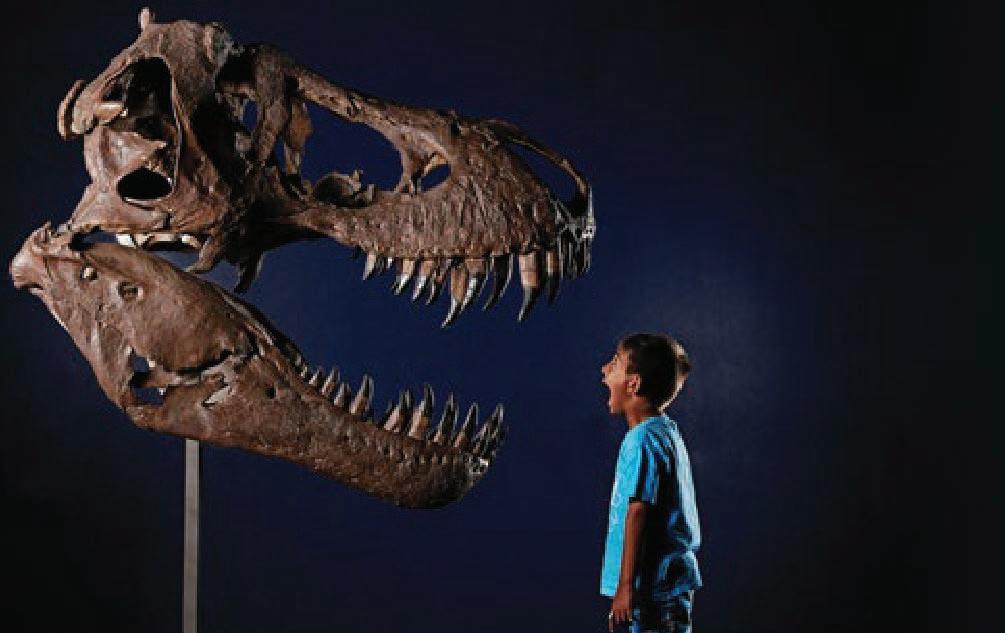






Ella Hodgett and Marianna HernandezAbdallah of San Jose Catholic School won the IEEE Award for "Outstanding Work in Electrical, Electronics, or Computer Sciences" for the junior division at the Northeast Florida Regional Science and Engineering Fair at the Florida Blue Conference Center Feb. 10.
San Jose Catholic School sent a strong team of 12 middle school students who competed against students from 24 public and private schools. Eight San Jose Catholic students walked away with awards and three were selected to the state team to represent North Florida at the State Science and Engineering
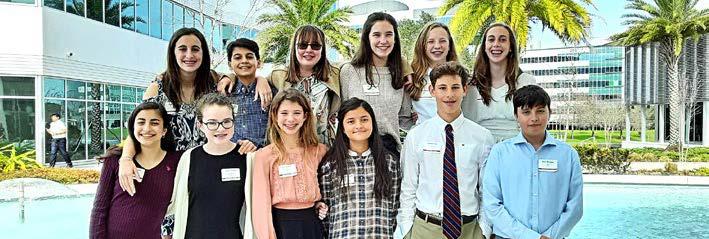







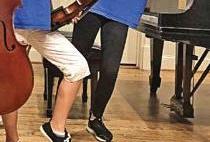






































Winning awards for San Jose Catholic were Thomas Cratem, second place in junior chemistry; Marianna Hernandez-Abdallah & Ella Hodgett, second place, junior engineering. Megan Porkert, third place junior environmental science and Sina Wegerer-Jones, third place, junior behavioral and social sciences. Maddox Fox, fourth place, junior physics & astronomy, Sean Madigan, fourth place, junior engineering, and Jalila Nackashi, fourth place, junior environmental science. e State Team representatives will be Hodgett, Hernandez-Abdallah and Cratem. ese three were also recognized as Broadcom

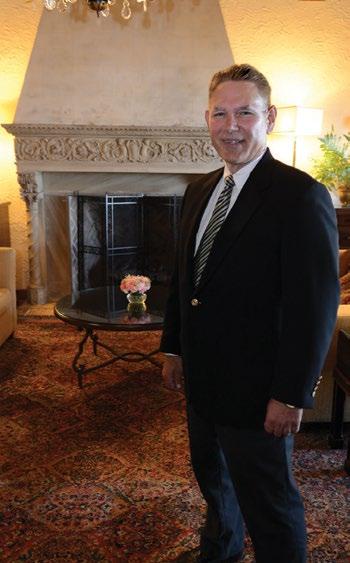

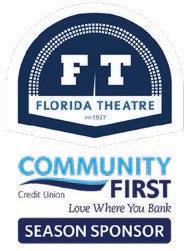










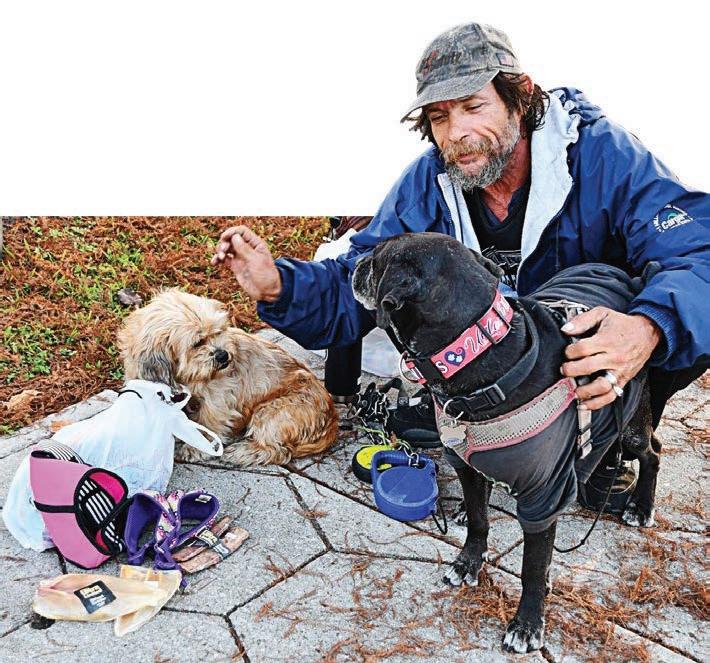
Cynthia Saben, employee of the Jacksonville Electric Authority and dedicated animal advocate, had an idea in November 2018 that would have a profound impact on her life. She wanted to provide a hot breakfast and an equally warm helping of respect, care and assistance to the homeless and their pets, on Christmas morning. She chose Main Street Park as the breakfast location, where she had seen many homeless people with pets congregate. She posted a message on Facebook, explained her idea and requested volunteers or donations. Saben expected that she and a couple of friends would hand out biscuits, gravy and juice that rst Christmas.
“Cynthia is a caring person who always sees the homeless and wants to help them. A er anksgiving she called me and said, ‘Hey, what are you doing on Christmas morning?’” Michelle Blanco said. “She literally put that rst Christmas Breakfast in the Park together in one month.”
Blanco, a San Jose resident, works in contract logistics warehousing and is a volunteer animal rescue transporter with Saben. She also was thrilled to volunteer for an event to help the homeless and their pets. Blanco adopted her lab/pit bull-mix senior dog, Chopper, from a family facing eviction when their landlord abruptly decided to prohibit pit bulls.
Christmas Breakfast in the Park (CBITP) was the inspiring result of Saben’s original idea. Fi y volunteers responded during the month before Christmas 2018. Enough donations poured in, along with Saben and her friends’ personal contributions, to feed 350 people plus pets. ey were even able to provide some basic personal necessities for guests plus some supplies and toys for their pets.
“I was astonished at the response. So many people wanted to help! It grew to three tents and 60 dozen eggs the rst Christmas,” she said. “I knew that the homeless shared whatever food they had with their pets. I wanted to be sure that on Christmas morning at least, they would have a generous hot
meal for themselves and food for the animals they love. eir pets are homeless, too, out in all weather with no shelter, enduring the same hardships as their owners.”
In preparation for the second CBITP in 2019, Saben chose Confederate Park and repeated her Facebook message. Many volunteers returned, the list of donors and supporters grew, and the city o ered portable toilets and garbage collection. Saben hoped there might be enough le -over donated funds to pay the application fee required to form a 501 (c) 3 non-pro t organization.




















































e 2019 event drew a line of people waiting at Confederate Park before 8 a.m. Not only did Saben and her elves deliver Christmas breakfast to the homeless and pets in Confederate Park, they also provided dinners to many in the surrounding neighborhoods. Approximately 400 hot meals were served. Le -over food, juice and co ee were delivered to the Cathedral Residences Senior Living centers downtown and to the Hands & Feet Foundation Westside, stretching the outreach and positive impact of CBITP even further.
“ is was a small spark of an idea that became two Christmas morning events to help needy people and pets. How the















































































































































community rallied to participate has been amazing. We had many more volunteer cooks this Christmas. Increased donations bought extra personal care items that people needed, like socks and toiletries,” Saben said. “Both years American Legion Post #137 members volunteered and donated, with special thanks to Richard Lane, Commander of American Legion #137 and Roger Jones, both repeat volunteers who cheerfully cracked and scrambled 90 dozen eggs!.” e Legion Post members want to help the homeless because, unfortunately, so many turn out to be veterans, according to Post Commander Richard Lane.
Elizabeth Haugen learned about the Christmas Breakfast event through American Legion Post #137 and decided to join their e orts to raise money and support the event. An avid quilter, she donated two quilts to be ra ed o to raise money to purchase event supplies.
“ e ra e was such a success it raised $750. A friend of mine who is also a quilter, Lorraine Happy, donated ‘ e Quilt of Valor’ which she wanted me to present as a gi to a veteran attending the breakfast,” Haugen
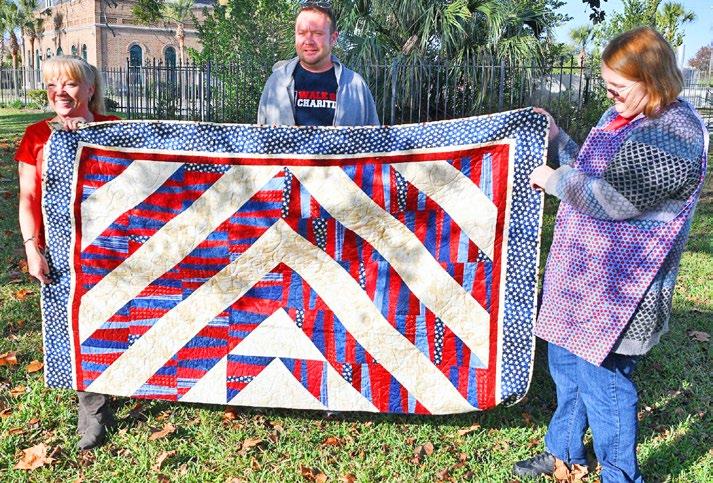
CONTINUED ON PAGE 47

said. “I met veteran David McGu n there, who talked to me at length about his military service. He was a very special person, and I gave him Lorraine’s patriotic quilt. He was so moved and said he had never received anything like that in his life.”

A major supporter from day one was Anthony “Doc Tony” Crothers, the Jacksonville chiropractor who nancially contributes and volunteers to help local non-pro ts. Along with his contributions to help the homeless, Crothers is known for his passion to save animals and support local animal rescue groups.
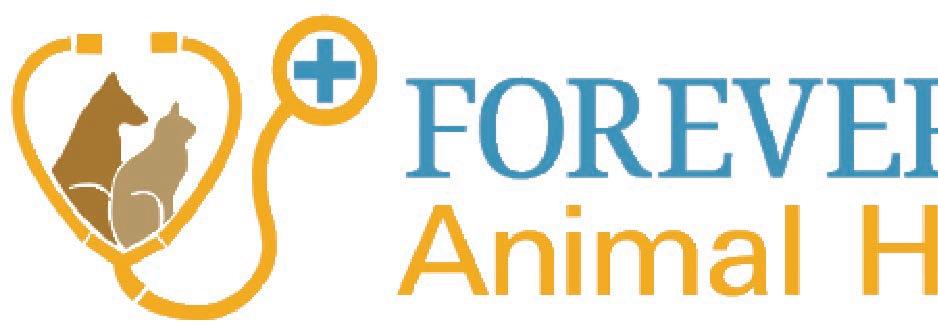
“Doc Tony, his assistant Paula Michelle Cloud and their sta worked tirelessly both years,” Saben said. “ ey provided dog food and toiletry bags lled with personal care items, socks, reusable water bottles, and approximately 500 tee shirts for the event.”
Saben’s longtime friend from both Murray Hill and San Jose, Billie Jean Lentes, is not the least surprised at the success of CBITP. Lentes is known as a go-to “Uber Lady”, always ready to transport animals to vet appointments. She lent her transport skills to pick up donations, personally stored event items and loaned tables for the breakfast.
“Cynthia is so passionate about helping others and helping animals, you’ve just got to support her. Whatever she asks me to do, I know it’s for a worthy cause,” Lentes said. “Community outreach is vitally important. e government requires too much red tape and takes too long to act. Local residents see a need and respond much faster and more e ectively. Christmas Breakfast in the Park is a perfect example of what the community can accomplish by working together.”
Volunteers helped in countless ways, and Saben wished she could name and thank every adult, youth, organization and business who participated. Pastor Russell Kopp of Highland Freedom Baptist Church drove dinners to community residents who could not come to the park. Food and co ee tents were sta ed by repeat volunteers, who kept pouring hot co ee, cocoa and handed out 500 water and juice bottles. At the care tent, volunteers helped guests choose a coat, jacket or clothes, a toiletry bag, small eece blanket, nylon backpacks, gently worn work boots or ladies purses lled with feminine products, ChapStick, razors, deodorant, wet wipes, hand sanitizer, small combs, soap, or shampoo.
“One gentleman we met both years named Jessie, brought his two dogs, Midnight and Tinkerbell in the cart we were able to give him last year. It was in rough shape, so PitStop Pit Bull Rescue Transport donated a new upgraded cart for his beloved dogs,” Saben said.
Saben, with Kymberly Traylor and Jeannette Castro, all volunteer for PitStop, which is a












major founding supporter of CBITP. ey secured dog and cat food and supplies from Pet Supermarket at Jacksonville Beach and Earth Pets in Mandarin. Dog leashes and collars were among the most popular donated pet gifts, appropriately imprinted with “Unleash Kindness.”




Many more animal rescue advocates volunteered, including Connie Cannaday of e London Sanctuary Hound Rescue. Erik Stordahl of e Old Dog House was a major matching funds event donor.
Several caring dentists and their sta s donated adult and youth toothbrushes, toothpaste and other items: Riverside Dental, Dr. Howard Fetner, Crovatto & Edward’s Family Dentistry, Normandy Dentistry, and Eagle Harbor Dental.

Fuccillo Nissan of Clearwater donated a $500 gi card. Heather Deane at Color Fusion Custom Printing and Apparel, donated yers and care bags. Winn Dixie gave a substantial discount on oversized boxes of biscuits. One W.E. Cherry Elementary teacher who loves animals, Rebekah Harp, and her students created approximately 500 Christmas cards to distribute.
Saben plans to complete the 501 (c) 3 Tax-Exempt Status Application process so that Christmas Breakfast in the Park can become a Florida non-pro t charity in 2020. She is hard at work on CBITP 2020, with the goal of locating the event closer to the library downtown on Main Street. Saben would like to provide guest seating with donated tables and chairs to better serve more guests, more comfortably. Interested volunteers, donors, or any business that would like to become a corporate sponsor, can go to Christmas Breakfast in the Park’s Facebook page or contact Saben at cynthiasaben@gmail.com.

e year 2019 was record-breaking for one Northeast Florida nonpro t when it comes to rescuing animals.


e Ark Wildlife Care and Sanctuary ( e Ark) reported that 2019 was a record-breaking year for rescue and sanctuary animals. “Our rescue animal intake continues to grow each year. In 2019, we have taken in 62 deer, a 29% increase over 2018,” says Jonathan Howard, president of e Ark. is is in addition to the steady increase of opossums, raccoons, squirrels and other animals e Ark and fosters cared for in 2019.

“ is continued growth has led us to greatly expand our animal housing areas to accommodate the increase, and of course, ever increasing costs to feed the animals,” Howard said. “We expect this trend to continue in the coming years, and we want to be ready for the animals that need our care.”
Northeast Florida has seen unprecedented housing growth which reduces land availability for the animals’ natural habitats. With nowhere else to go they are increasingly encountering humans, roads, and cars.
At the Sanctuary orphaned wildlife are cared for until they can be released back into the wild. However, e Ark has also seen an increase in the Sanctuary-held animals. is includes injured or handicapped animals not capable of surviving in the wild. ese animals stay at the Sanctuary and are cared for their entire lives. ere was one new notable added to the Sanctuary this year – Nymera. Nymera, a fawn, was born with no eyes and needs a special enclosure to ensure she does not injure herself. She is now growing and thriving at e Ark.
For more information on e Ark, please visit www.thearkwildlifecareandsanctuary.com.



“Community outreach is vitally important. The government requires too much red tape and takes too long to act. Local residents see a need and respond much faster and more e ectively.”
— Billie Jean Lentes
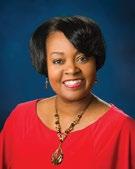
is about empowering the greater Jacksonville area to prioritize their health. This fun, interactive challenge will help people from all walks of life to get started with one healthy lifestyle change to help lower their risk of cardiovascular disease.”
Cardiovascular diseases claim the lives of 1 in 3 women, yet 80% of these cases may have been prevented with education and healthy lifestyle changes.

Lowering your risk of cardiovascular disease can feel overwhelming. In reality, making just ONE lifestyle change can make a big difference. Customize the goal to fit your lifestyle.

Nine examples of lifestyle changes to help you lower your risk of cardiovascular disease:
1. Know your numbers. You can’t manage what you don’t measure. Knowing your risk of cardiovascular disease starts with knowing your numbers (i.e., blood pressure, cholesterol, blood sugar, BMI).
2. Get active. Set a goal of 150 minutes of moderate-intensity exercise, or 75 minutes of vigorous-intensity exercise each week.
3. Lose weight (if you need to). When you shed extra fat and unnecessary pounds, you reduce the burden on your heart, lungs, blood vessels and musculoskeletal system.
4. Live smoke free. Cigarette smokers and other tobacco users have a higher risk of developing cardiovascular disease than non-smokers. If you smoke, quitting is the best thing you can do for your health.
5. Break up with salt. Extra sodium in your diet can cause your blood pressure to rise, increasing your risk of cardiovascular disease.
6. Stay hydrated. Keeping your body hydrated helps your heart pump blood more easily through the blood vessels to the muscles.
7. Eat better. A healthy diet is one of your best weapons for fighting cardiovascular disease. When you eat a heart-healthy diet, you feel better and improve your chances of staying healthy for life.
8. Manage your stress. Long-term activation of your body’s stress response system can lead to many health troubles, including cardiovascular disease. Take a self-care day to recharge!
9. Sleep tight. Studies have found that most people need 6 to 8 hours of sleep each day. Too little or too much can increase the risk of cardiovascular problems.
Take charge of your heart health today! Get started by knowing your numbers. Baptist Health offers a free and easy way for you to get to know yours. Visit baptistjax.com/knowyournumbers
“Go Red, Get Fit Jax